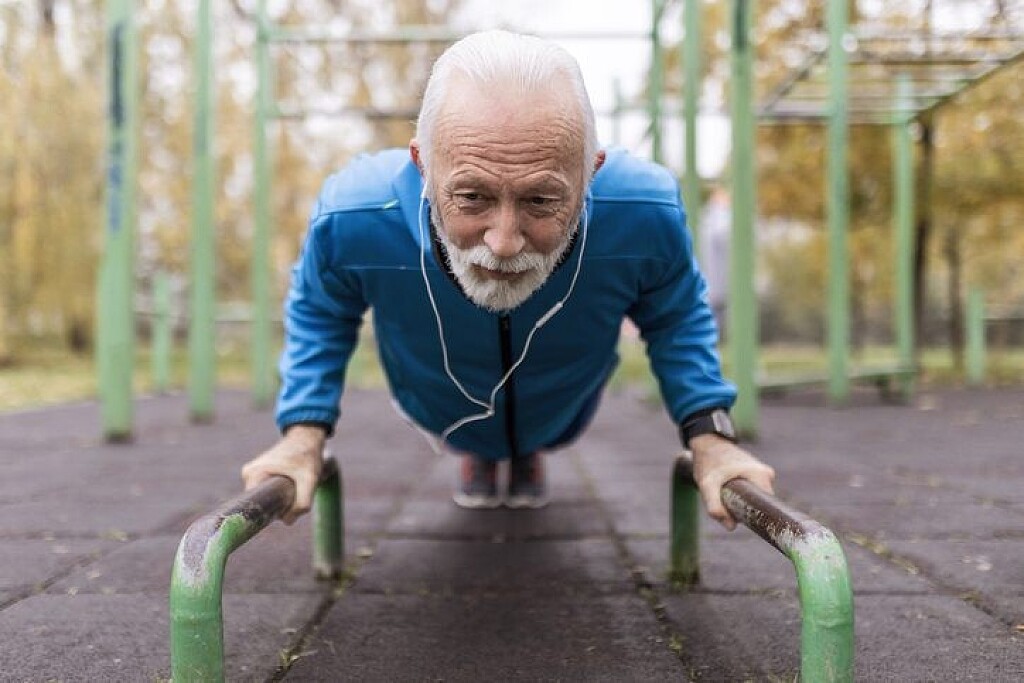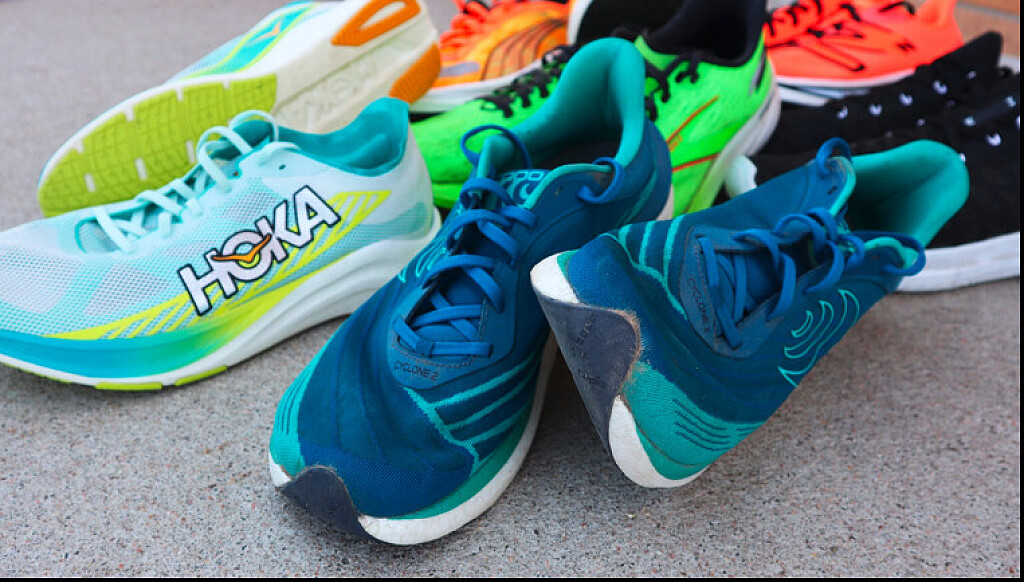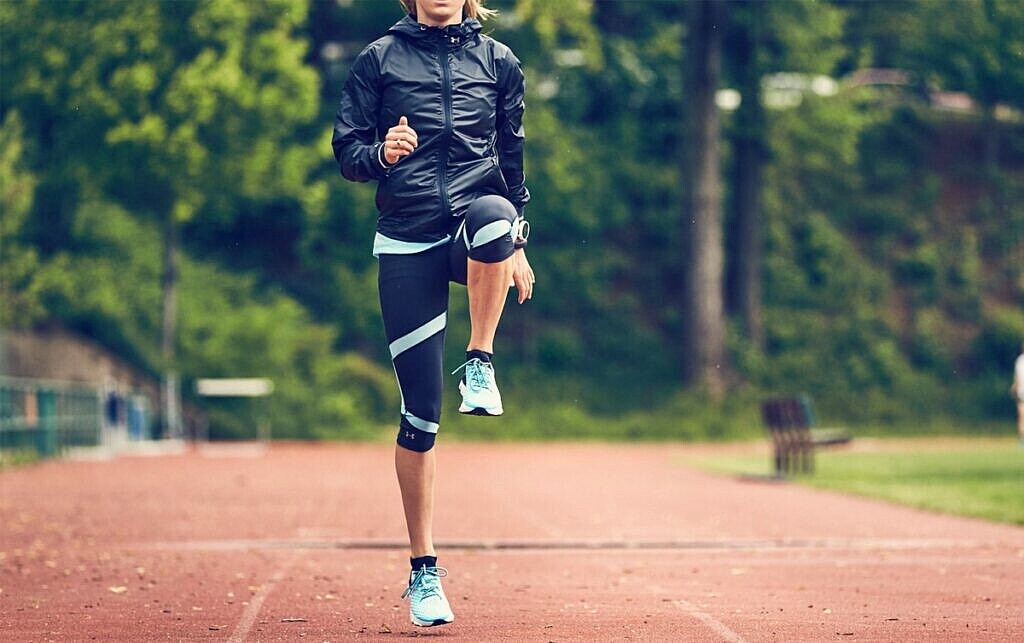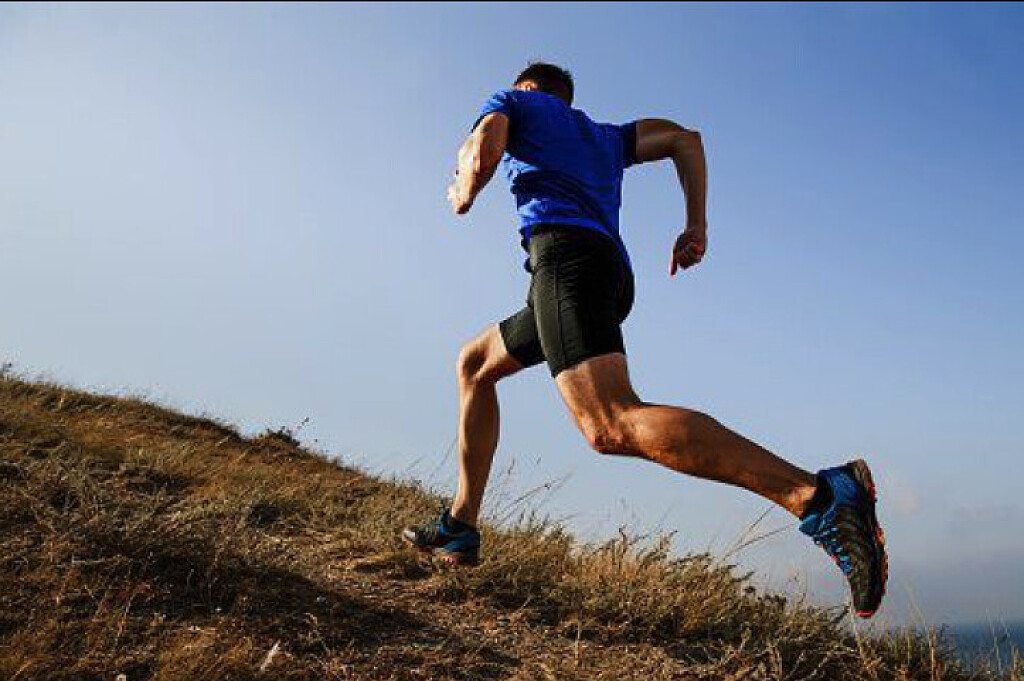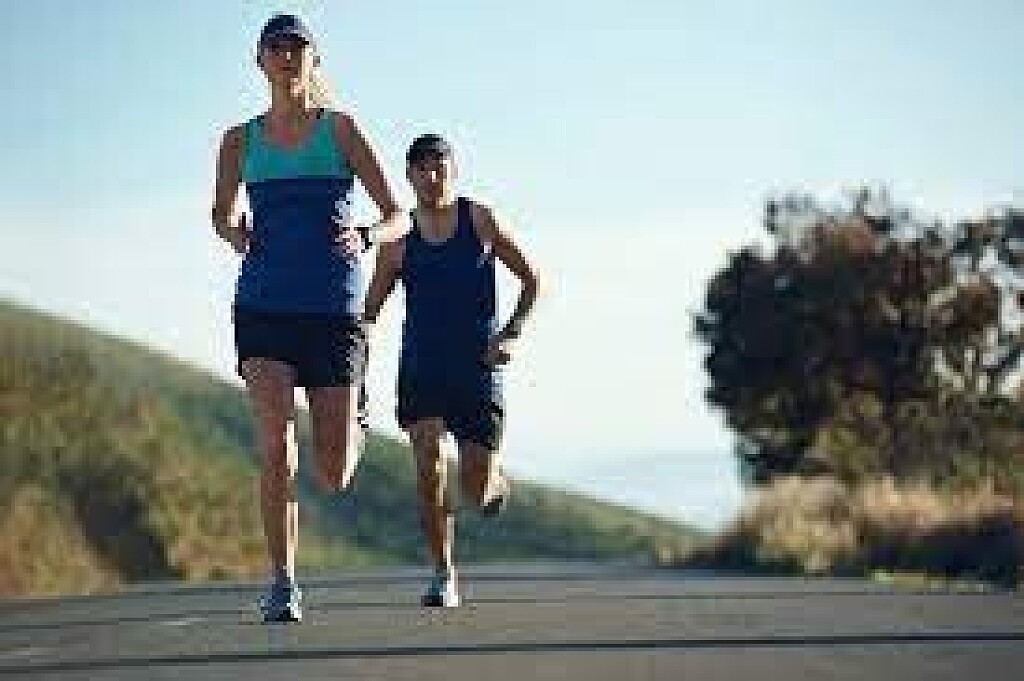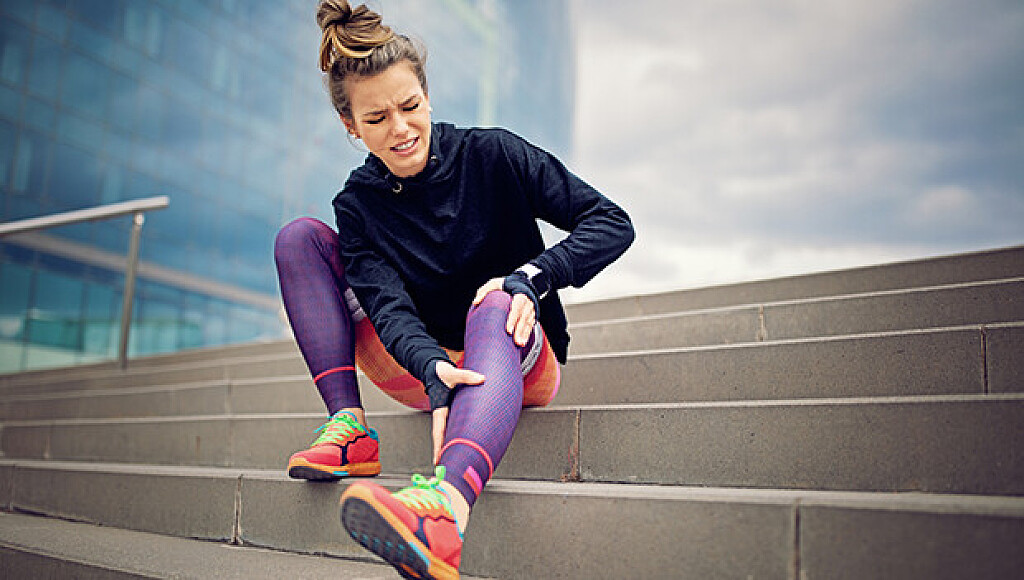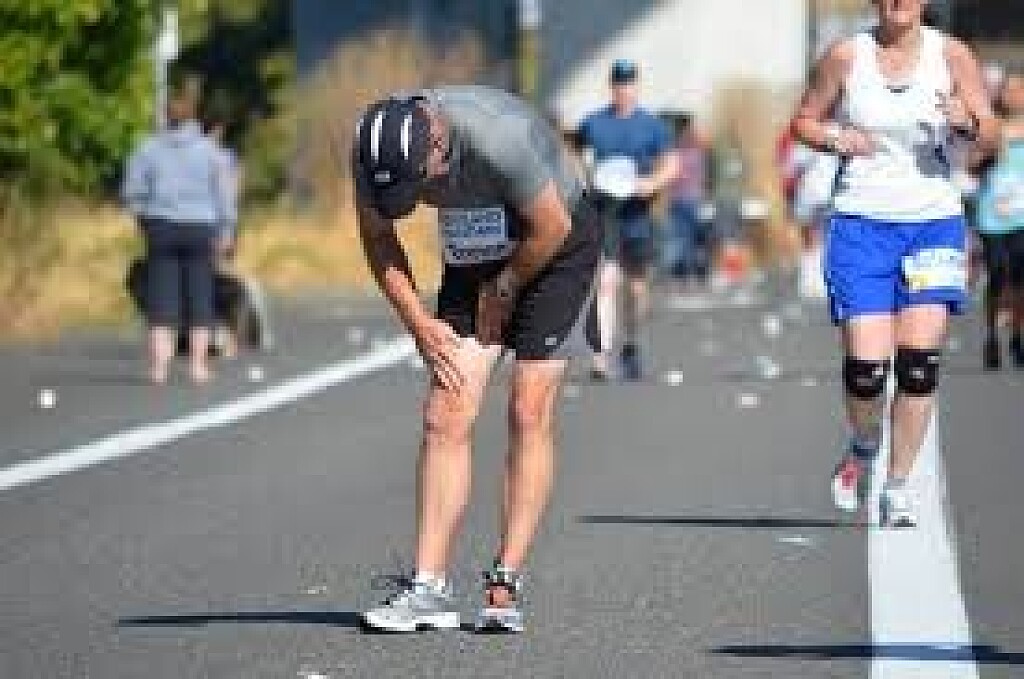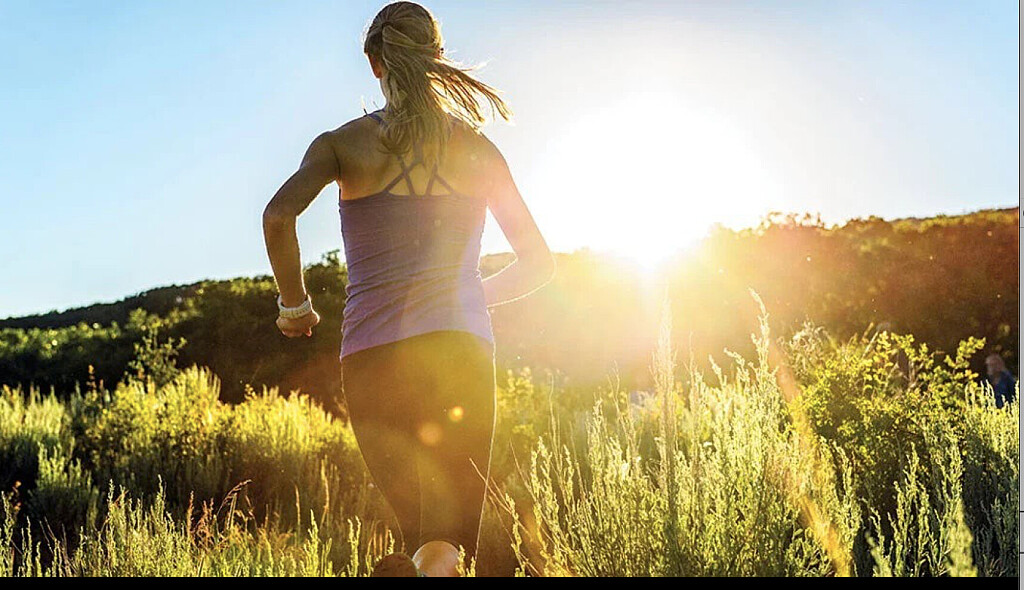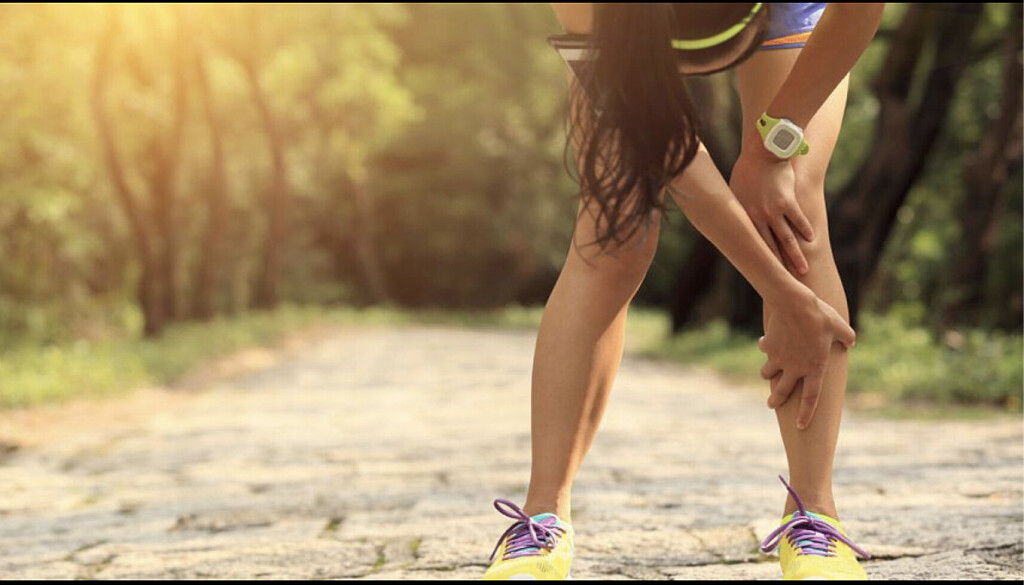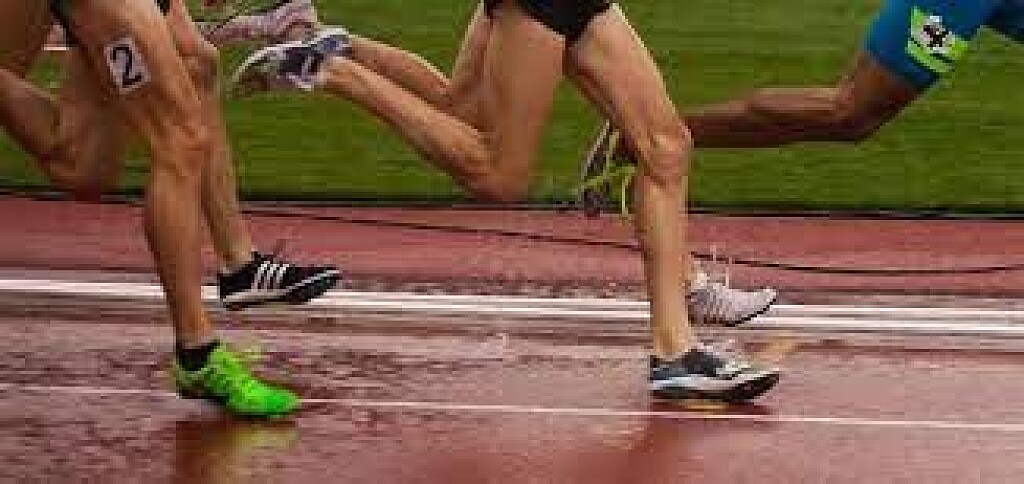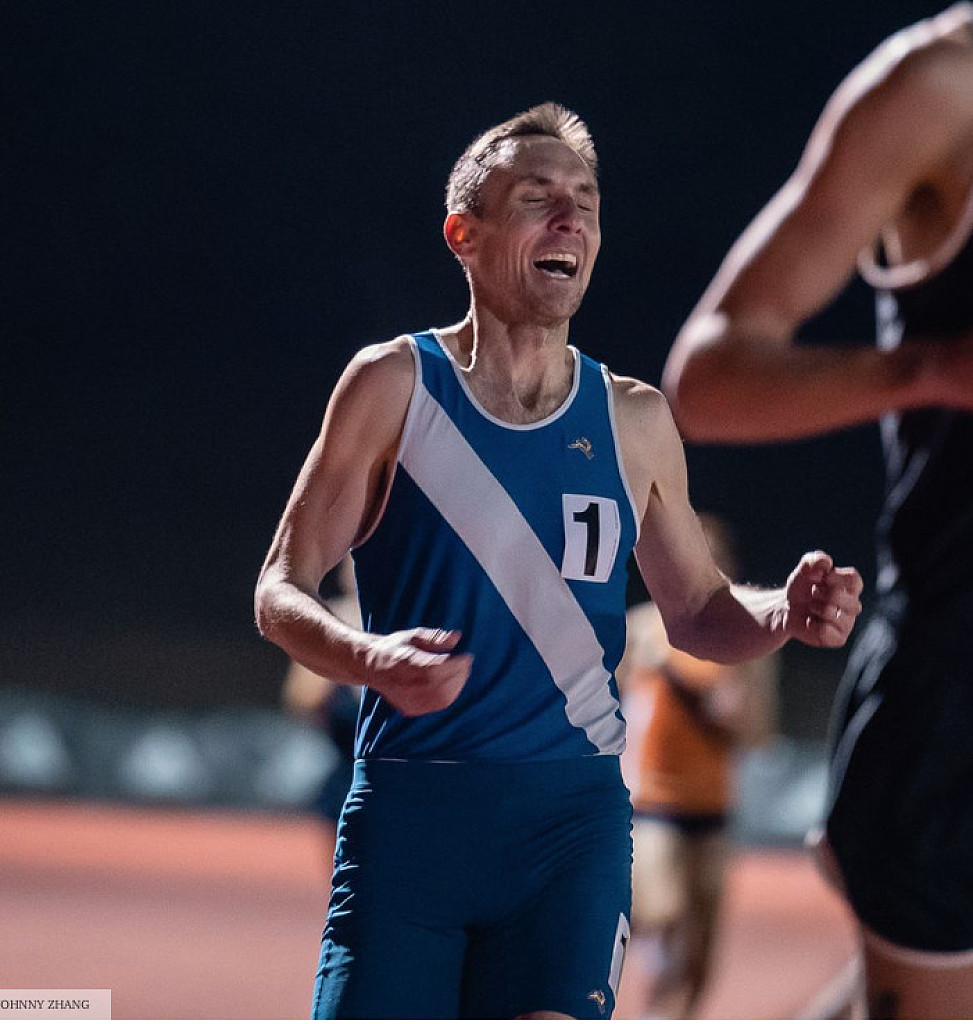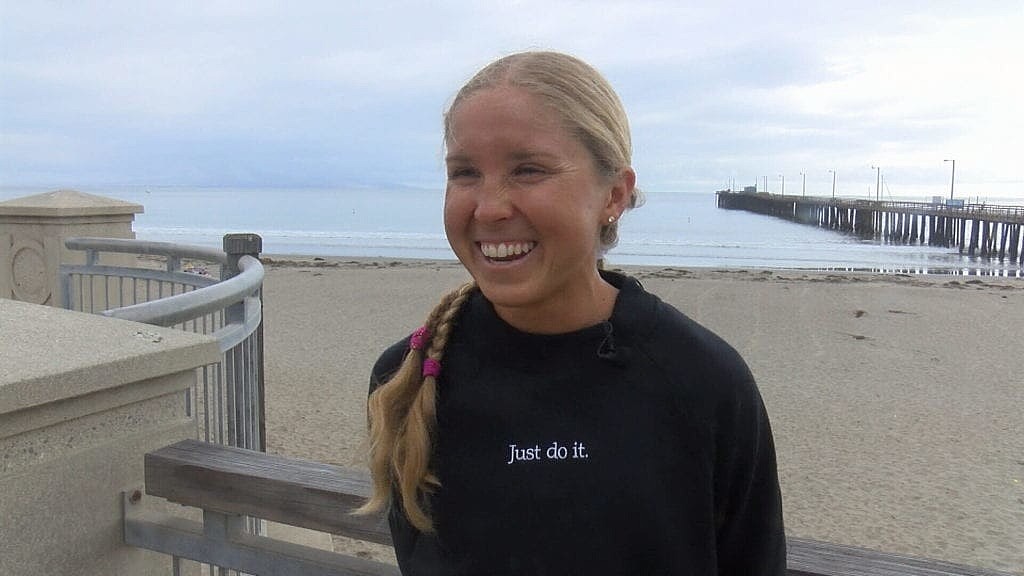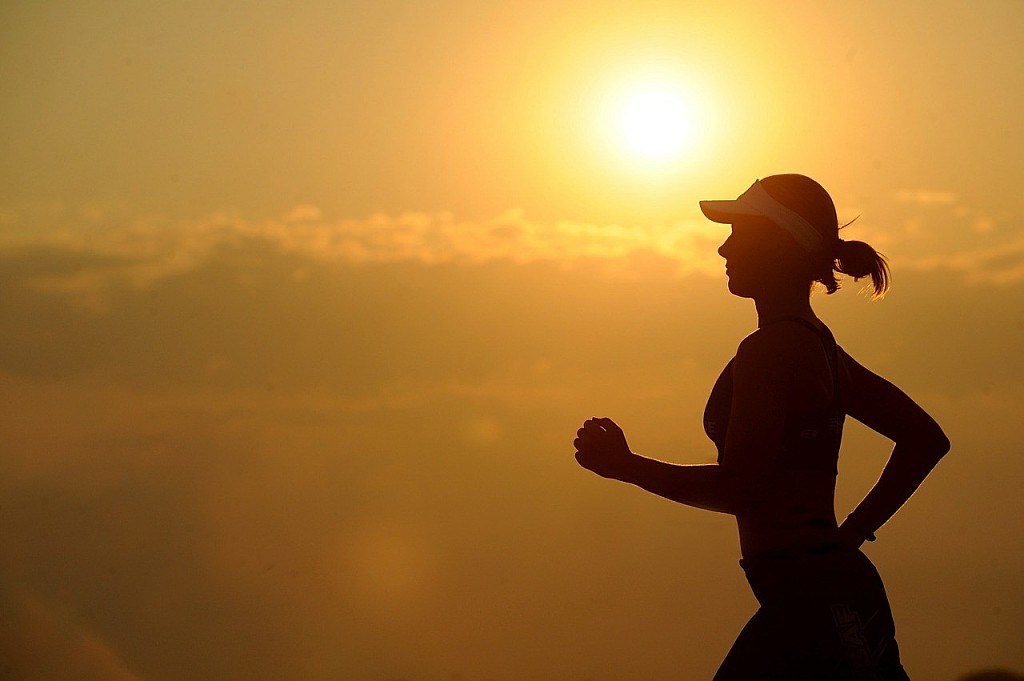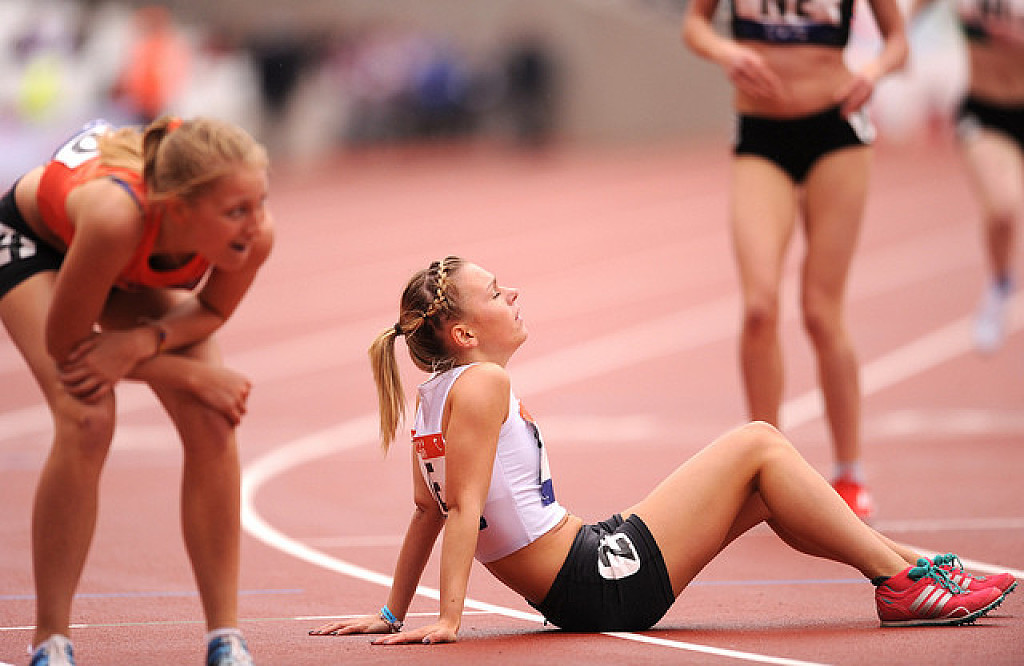Running News Daily
Running News Daily is edited by Bob Anderson. Send your news items to bob@mybestruns.com Advertising opportunities available. Train the Kenyan Way at KATA Kenya and Portugal owned and operated by Bob Anderson. Be sure to catch our movie A Long Run the movie KATA Running Camps and KATA Potato Farms - 31 now open in Kenya! https://kata.ke/
Index to Daily Posts · Sign Up For Updates · Run The World Feed
Articles tagged #Stress fractures
Today's Running News
The Evolution of the High School Sub-4 Mile Club
On May 6, 1954, Roger Bannister made history by running the first sub-4-minute mile, clocking 3:59.4 in Oxford, England. His groundbreaking achievement redefined what was possible in middle-distance running, inspiring generations of athletes to chase the elusive mark.
For decades, breaking the 4-minute barrier remained an extraordinary feat, but in recent years, more high school runners in the United States have joined this exclusive club. As of February 2025, 23 American high school boys have accomplished this milestone, with notable additions in 2024 and 2025.

The Latest High School Runners to Break Four Minutes
The most recent athletes to achieve the sub-4-minute mile in high school competition are:
- Drew Griffith – 3:57.72 (May 30, 2024, Festival of Miles, St. Louis, Missouri)
- JoJo Jourdon – 3:59.87 (February 3, 2024, New Balance Indoor Grand Prix, Boston, Massachusetts)
- Zachary Hillhouse – 3:59.62 (June 16, 2024, New Balance Nationals Outdoor, Philadelphia, Pennsylvania)
- Owen Powell – 3:57.74 (February 15, 2025, UW Husky Classic, Seattle, Washington)
These runners continue to prove that the sub-4-minute mile, once thought to be nearly impossible for young athletes, is an achievable milestone with the right combination of talent, training, and opportunity.
Jim Ryun and Alan Webb: The Legends of the High School Mile
Jim Ryun: A Historic Career
Jim Ryun was the first high school runner to break the 4-minute mile, running 3:59.0 in 1964 as a junior. He later set the national high school record of 3:55.3 in 1965, a time that stood for 36 years.
After his historic high school career, Ryun went on to break the world record in the mile twice—first in 1966, and then again in 1967 when he ran 3:51.1. At 19 years old, he remains the youngest world record holder in the mile to date. His record stood for nine years before being broken in 1975.
Ryun represented the United States in three Olympic Games (1964, 1968, and 1972), winning a silver medal in the men’s 1500m at the 1968 Olympics. His dominance in middle-distance running made him one of the greatest milers in history.
Alan Webb: The New Generation's Record-Breaker
In 2001, Alan Webb broke Ryun’s long-standing high school mile record by running 3:53.43 at the Prefontaine Classic. Webb’s performance redefined expectations for young milers and set a new benchmark for high school runners.
Webb continued his success post-high school and later set the American record in the mile, running 3:46.91 in 2007. This remains one of the fastest mile performances ever by an American.
Despite his success, Webb’s professional career was marked by injuries, including Achilles tendonitis and stress fractures, which affected his consistency. However, his high school and professional achievements cemented his place as one of the greatest milers in U.S. history.

The Complete List of High School Sub-4 Milers
Below is the full list of American high school runners who have broken the 4-minute mile, ranked by their fastest time achieved during high school competition:
- Alan Webb (first photo) – 3:53.43 (May 27, 2001, Prefontaine Classic, Eugene, Oregon)
- Jim Ryun (second photo) – 3:55.3 (June 27, 1965, AAU Championships, San Diego, California)
- Colin Sahlman (third photo) – 3:56.24 (May 28, 2022, Prefontaine Classic, Eugene, Oregon)
- Drew Griffith – 3:57.72 (May 30, 2024, Festival of Miles, St. Louis, Missouri)
- Hobbs Kessler – 3:57.66 (February 7, 2021, American Track League Invitational, Fayetteville, Arkansas)
- Drew Hunter – 3:57.81 (February 20, 2016, NYRR Millrose Games, New York City, New York)
- Gary Martin – 3:57.89 (June 2, 2022, Festival of Miles, St. Louis, Missouri)
- Connor Burns – 3:58.83 (June 2, 2022, Festival of Miles, St. Louis, Missouri)
- Tim Danielson – 3:59.4 (June 11, 1966, San Diego Invitational, San Diego, California)
- Reed Brown – 3:59.30 (June 1, 2017, Festival of Miles, St. Louis, Missouri)
- Matthew Maton – 3:59.38 (May 8, 2015, Oregon Twilight Meet, Eugene, Oregon)
- Grant Fisher – 3:59.38 (June 4, 2015, Festival of Miles, St. Louis, Missouri)
- Michael Slagowski – 3:59.53 (April 29, 2016, Jesuit Twilight Invitational, Portland, Oregon)
- Leo Daschbach – 3:59.54 (May 23, 2020, The Quarantine Clasico, El Dorado Hills, California)
- Simeon Birnbaum – 3:57.53 (June 1, 2023, Festival of Miles, St. Louis, Missouri)
- Rheinhardt Harrison – 3:59.33 (June 3, 2022, Golden South Series #2, Tarpon Springs, Florida)
- Marty Liquori – 3:59.8 (June 23, 1967, AAU Championships, Bakersfield, California)
- Lukas Verzbicas – 3:59.71 (June 11, 2011, Adidas Grand Prix, New York City, New York)
- JoJo Jourdon – 3:59.87 (February 3, 2024, New Balance Indoor Grand Prix, Boston, Massachusetts)
- Zachary Hillhouse – 3:59.62 (June 16, 2024, New Balance Nationals Outdoor, Philadelphia, Pennsylvania)
- Owen Powell – 3:57.74 (February 15, 2025, UW Husky Classic, Seattle, Washington)
- Tinoda Matsatsa – 3:58.70 (June 1, 2023, Festival of Miles, St. Louis, Missouri)
- Jackson Heidesch – 3:59.08 (June 1, 2023, Festival of Miles, St. Louis, Missouri)
The Sub-4 Mile Remains an Iconic Benchmark
Roger Bannister’s 1954 breakthrough redefined human potential in distance running, and the high school sub-4-mile club continues to grow. As competition and knowledge improve, the question isn’t whether more young runners will join the club, but just how fast the next generation can go
Login to leave a comment
When It’s Time to Replace Your Running Shoes
When this assignment hit my inbox, my first thought was: I am 100 percent going to find out that I need to buy new running shoes. I jog a few times a week and haven’t replaced my Hoka Clifton 9’s since 2023. The chunky, cushioned sole that Hokas are known for has been flattened by months of trail running, and the bright neon yellow exterior has dimmed to a dull mustard.
But they do the job, and I’m a bit frugal, so I’ve stuck with them. But after speaking with a few sneaker experts, I learned I’m not doing myself any favors by holding onto beat-up gear. The more I use them, the greater my risk of an injury.

Here’s why it’s worth replacing your go-to kicks—and how to figure out when to do it.
What Is the Average Lifespan of Running Shoes?
The average running shoe is thought to last about 300 to 500 miles or five to eight months of regular use, but determining your shoe’s true lifespan is more complicated, says Daniel Shull, Run Research Manager at Brooks Running.
Many factors shorten or extend the longevity of your sneakers, including how often you wear them, the kind of terrain and weather you run in, and your stride and strike habits, says Shull.
“Every runner is different, and every shoe is different,” says Arianna L. Gianakos, a Yale Medicine orthopedic surgeon specializing in sports-related foot and ankle injuries.
Trekking through mud, gravel, and puddles can erode your footwear, as can working out in hot or frigid temperatures, says Susan L. Sokolowski, a professor of sports product design at the University of Oregon. She explains if you’re a heavy runner, meaning you land on your foot hard, the foam in the middle of your shoe will break down faster. And if your foot rolls inward or outward, you can wear out a part of your shoe that isn’t built for regular impact, such as the edges or outsole, speeding up your need for
For example, I don’t merely wear my Hokas when I jog. I also wear them when I recreationally hike, bike, and walk my dog all over town. So, while I’d love to think my running shoes last a year, they probably give out much sooner.
Why It’s Important to Replace Running Shoes
When your foot slams onto the ground, your shoe acts as a buffer and absorbs some of the force hitting your foot and ankle, Gianakos says. According to a 2023 review published in Exercise Science and Sports Reviews, shoes influence how your foot interacts with the ground, impacting your performance, speed, comfort levels, and risk of sustaining an injury.
If your sneaker no longer provides the support and cushioning your feet need, you can hurt the joints, tendons, and ligaments in your feet, ankles, and even upper leg, says Gianakos. You can run (pun intended) into a whole host of injuries like plantar fasciitis, tendonitis, stress fractures, and shin splints, she adds.
You may get pain in the ball of your foot (or metatarsalgia), patellofemoral pain syndrome, which causes pain around the kneecap, or iliotibial (IT) band syndrome, a condition that causes pain near the outside of your
So, do a body scan next time you’re out on the trail. Do you notice any foot or ankle aches and knee pains? What about burning sensations on the sole of your foot? How about blisters or calluses? Any of these symptoms may indicate your shoes are shot, says Gianakos.
How to Extend the Life of Your Favorite Pair of Sneaks
First, be mindful of how you store your shoes. You want to keep them in a clean, dry location to prevent mold from growing, says Sokolowski. And don’t store them in a hot, sunny car—UV exposure and heat can cause them to dry out and crack, she adds.
Gianakos recommends having (at least) two pairs of sneakers. That way, you can occasionally switch them out to slow the wear and tear. Another tip: have different sneakers for running in different environments—like “a trail shoe, a road shoe, and even a race day shoe,” says Sokolowski.
And save your running shoes for running only. “The time and amount of steps put on your shoes by walking, standing, and running errands all count towards how long they’ll last,” says Shull.
For all your other day-to-day activities and
Login to leave a comment
Recovery runs: Everything you need to know
At first glance, the words ‘recovery’ and ‘run’ might seem juxtaposed. After all, running is about expending energy, while recovery seems to be about recouping it. Even if we accept the term, what’s the point of a recovery run? And how does it distinguish itself from other forms of running, such as easy running? Understanding the definition and purpose of recovery runs can help you to incorporate them into your routine – boosting your recovery and overall fitness.
What’s the point of a recovery run?
In the aftermath of a hard workout or race, your muscles can become sore – a phenomenon known as DOMS (short for ‘delayed onset muscle soreness’). In this state, the prospect of running may seem unappealing, but doing so can loosen up the body by increasing blood flow to the muscles and flushing out waste. This, in short, is the purpose of a recovery run.
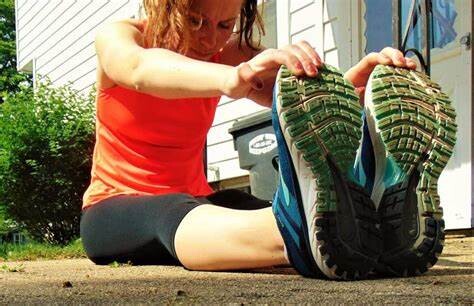
How do you do a recovery run?
In many ways, a recovery run is similar to an easy run. It’s done at a slow pace (or in heart rate zones 1 or 2, for those who use that as a metric) and should feel easy and relaxed throughout. However, from a duration perspective, recovery runs tend to be around 20-30 minutes in length, whereas easy runs could conceivably stretch to an hour or more. The reason for this is that, after 30 minutes of running, the body begins to produce metabolic waste, which in itself requires recovery time. When it comes to recovery runs, think easy and short.

What is active recovery?
Another terms that seems self-contradictory, active recovery is loosely defined as ‘low-intensity exercise that a person performs after high-intensity exercise to improve recovery’. Recovery runs fit firmly into this category. The alternative to active recovery is passive recovery, defined as ‘a period of inactivity after exercise where the body is allowed to heal without any additional physical activity’. Neither is better than the other, and the smart runner will use a combination of both passive and active recovery. As a general rule, though, passive recovery is the better choice if you’re showing signs of overtraining. These signs include extreme tiredness, lingering soreness, trouble sleeping, irritability or an elevated resting heart rate.
Is recovery different for men and women?
Although both sexes need to recover adequately after hard workouts and races, there is some evidence to suggest that recovery times vary between men and women. In a new study that looked at men and women who’d just run a half marathon, women showed earlier functional recovery than men. There are several potential reasons for this. One is that women have lower muscle mass and power output than men, so are therefore considered less prone to fatige. Another is the role of estrogen, which might lower the impact of exercise-related skeletal muscle damage. That said, women’s recovery is heavily influenced by where they are in their menstrual cycle, with one study finding that menstruation raises metabolic rate by more than 6% – something that will an impact on recovery and overall perception of fatigue.
What are the alternatives to recovery runs?
Of all the types of running session, recovery runs are probably the easiest ones to substitute for other cross training activities. Low-impact activities such as cycling or swimming will provide the same benefits, without any of the pavement pounding. If you’re a runner who is susceptible to impact injuries, such as stress fractures or shin splints, it’s worth thinking about whether your next recovery session actually needs to be a run.
by Rick Pearson
Login to leave a comment
Which Running Tests Are Worth the Investment?
Experts break down which type of runner is most likely to benefit from tests including a gait analysis, VO2 max, and more.
Running itself is pretty basic—in the best of ways. All you really need is a pair of running shoes to get started. Of course, additional gear can be helpful, not to mention fun to test out and use to boost performance. Investing in certain fitness tests and assessments can also up the fun factor and give you an edge for training and race-day success.

These days, you can find a ton of options in this realm, which can feel overwhelming, but experts caution against getting too caught up in the hype.
“Information and knowledge is a good thing, but sometimes there can be a little bit too much,” says James Robinson, M.D., sports medicine physician at Hospital for Special Surgery. He says that if you’re not having problems (like injuries or pain) and you’re hitting reasonable running goals, you probably don’t *need* any type of fitness test.
One exception: Keep up with your yearly physicals (during which you may have some blood work done) as a baseline. From there, your doctor may also suggest other specific tests (like a DEXA scan, which looks at bone density, for those with osteopenia or a history of broken bones).
That said, keep reading for what runners should know about some of the most popular fitness lab tests out there right now, how each can support your goals, and which type of runner is more likely to benefit from investing in each one.
If you’re chronically injured or looking to improve efficiency...
Consider a gait analysis
A gait analysis—which involves being recorded from different angles while running on a treadmill to look at form, including foot strike and body alignment—is especially useful for runners with chronic injuries like shin splints, patellofemoral pain, or IT band issues, says Robinson.
“The gait analysis can show things in your running mechanics that are making you more prone to injuries and especially certain types of injuries,” says Robinson. This analysis may also ID weaknesses or muscle imbalances and things like overstriding, overpronating, or a low cadence.
Runners looking to improve efficiency may also benefit from this test. “There can be ways to improve your biomechanics to improve your running efficiency,” like working on optimizing hip extension, which is important for minimizing vertical excursion (or too much up and down movement rather than straight ahead).
N’Namdi Nelson, C.S.C.S., an exercise physiologist at NYU’s Sports Performance Center adds that beginners can benefit from a gait analysis: “The activity you’re going to be doing is running, so why not do a running analysis to assess your biomechanics to see exactly what's going on in your gait, and identify things that you may be doing incorrectly and ways that you can improve it?” This will not only set you up for success in the sport of running in terms of performance, but help you avoid injuries before they show up in your stride.
Where to get it: Running labs like at universities and medical centers or at a local physical therapy clinic
Typical cost: Starting at about $150 (or free with your physical therapy appointment, depending on insurance)
If you’re new to running…
Consider a functional movement screening (FMS)
When doing a functional movement screen, a coach or trainer will typically put you through movements (e.g. a single-leg squat, push-up, and step-over) and watch how your body moves. If your hip drops to one side or your knees cave in on that squat, for example, that could indicate weakness in your core stability, Robinson says, which could affect your injury risk in running. The facilitator will then give you specific exercise recommendations to strengthen those weaknesses.
Nelson recommends the FMS for beginners in particular. “It’s going to give us more information as to what’s going on in the body,” he says. “So for example, if we see weakness in certain muscles or a decrease in flexibility in certain joint ranges, then we can try to get ahead of it and try to correct it, decreasing your chances of sustaining some type of running-related injury.”
Where to get it: Some places, like NYU, HSS, and the Columbia RunLab, offer running analyses which combine a gait analysis on a treadmill with a movement screen like the FMS so it’s one stop shopping. Nelson says that having information from both of these inputs—the gait analysis and FMS—can be helpful when making correlations.
You can also often get an FMS at a gym as part of an initial training evaluation, and it can be useful on its own. (If you’re choosing between a gait analysis and an FMS, Robinson argues the former is more beneficial as it’s more specific to runners.)
Typical cost: Included in the above services, with rates changing depending on insurance and/or location
If you’re more experienced and/or get sidelined by cramps…
Consider a metabolic profile test
This type of test typically includes a VO2 max test, lactate threshold evaluation, and metabolic efficiency testing. It involves a finger stick capillary blood test, as well as running on a treadmill at increasing intensity with a mask on to measure how much oxygen you’re consuming, as well as CO2 output and heart rate.
VO2 max measures your aerobic capacity. It can give you a sense of your cardiovascular fitness, which can be helpful as a benchmark to try to improve (often via short, intense intervals).
This test can also help you determine your max heart rate, and training zones based on that
“Lactate threshold is basically the point at which your body starts to go from aerobic to anaerobic and starts to really ramp up its levels of lactate,” says Robinson. “The lactate threshold basically tells a runner the pace at which they could run a short distance, like a 5K or 10K, which can be useful when you’re talking about training paces.”
Importantly, lactate threshold is something you can train and improve, Robinson adds. Knowing your threshold allows you to train in the proper zones to increase it. For example, if your lactate threshold is nine minutes per mile, then training with runs at that pace could help to improve that, Robinson says. (And then if you repeated this test months later, you can see if it improves.)
As for metabolic efficiency, Robinson says this can help you strategize fueling for long races—and it’s also trainable. This test profile measures how many calories you use per hour and the breakdown of fat versus carbohydrate at various exercise intensities.
“We have a lot of fat stores in our body, but our body has very limited carbohydrate stores,” he says. So, if the test reveals that you’re using mostly carbs for long runs, for example, you’ll run out of fuel quickly and knowing this would help you ID exactly how much nutrition you need to bring along.
Robinson says this test is most useful for runners trying to improve efficiency and pace. For example, if you want to run a sub-four-hour marathon, this test can be useful to one, see if you’re able to achieve that goal at your current fitness level, and if not, figure out which zones to train to get there.
The test can also be useful for those who deal with cramping when they run. “Usually cramps are a fueling issue more so than a true dehydration issue,” says Robinson. “So the metabolic profile can be useful for fueling to see why someone might be cramping, or for someone that hits a wall at mile 20 or 21 in the marathon, that could be a fueling issue, and the metabolic profile can definitely help clue you into strategies to help.”
Where to get it: At NYU, this test is called the “Sports Performance” evaluation and includes a gait analysis, stability and mobility screen, and VO2 max, with the option to add lactate threshold testing. At HSS, it’s Metabolic Testing and includes all of the metrics (VO2 max, lactate threshold, metabolic efficiency, and also running economy). You also may be able to find similar tests at other universities, medical centers, and running labs.
If you want to DIY…
Use your wearable data
Robinson acknowledges that many wearables now provide lots of info that you’d get as part of a formal gait analysis, like cadence, vertical oscillation, and stride length, in addition to metrics like VO2 max. “They’re pretty accurate now,” he says, adding that they can be more accessible and less expensive (assuming you’ve already paid for the wearable) than additional testing.
Still, sometimes people need help with interpretation of this data and they don’t know what to do with it on their own. “Seeing an exercise physiologist or a running coach could help them interpret some of the data,” he says.
Typical cost: Free (after the cost of a wearable, which typically starts around $200)
If you’re into lots of data and optimizing health…
Consider a blood panel
As long as you pass your yearly physical, additional blood work probably won’t tell you much more about your running performance, according to Nelson. “You can identify some nutritional deficiencies and things like that that may affect your performance, but those things may also be highlighted in your yearly physical,” he adds.
However, for those really into data and optimization of health and performance, a full blood panel might be helpful, so long as you know what to do with the information (or have someone to interpret the results). This additional screen may look into nutritional biomarkers beyond your typical blood test at a physical, like omega-3 levels, electrolytes like calcium and magnesium, and many other health-related metrics that are related to heart health, immune regulation, and more.
The one biomarker both experts agree is wise to get tested for all runners is vitamin D. “I do recommend that runners get their vitamin D checked regularly because if you are low in vitamin D, then that can put you at risk for bone injuries such as stress fractures, and vitamin D deficiency is extremely common, especially in places where you don’t get as much sunlight,” says Robinson.
Other than that, if you’re having specific issues or have concerns about your overall health, consult with your doctor to see what biomarkers, if any, should be tested.
Where to get it: Your doctor should be able to run additional lab tests if you have a medical need for them, but you can also try a direct-to-consumer service like Function or Inside Tracker.
Typical cost: Free one time a year with most insurance providers (for the basics), but around $500 for the DTC services.
by Runner’s World
Login to leave a comment
How to Maintain Your Running Fitness When an Injury Has You Sidelined
Follow this expert advice to avoid losing all those aerobic gains.Whether you’re nursing a serious injury, dealing with a nagging illness, or you’re too swamped with a busy schedule, every runner now and then comes up against a setback that keeps them from their regular pavement-pounding routine. A little time off won’t hurt you (in fact, some R&R might be just what the doctor ordered). But trade in your sneakers for the sofa too long and your fitness will quickly take a nosedive.
While a few factors play into exactly when your fitness declines, like your fitness level before you took time off and whether you stop exercising completely, metabolic changes can happen within just two weeks, Jeff Gaudette, owner and head coach at RunnersConnect tells Runner’s World.In 21 days of no activity, older research has found a 7 percent reduction in VO2 max, a marker of your fitness. That might sound negligible, but it could add minutes to your race times, Gaudette says. Newer research published in 2022 backs this up, saying VO2 max can decline as much as 20 percent after 12 weeks.
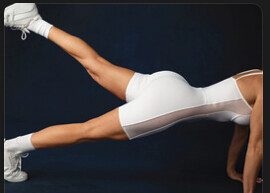
But good news: Taking a total break from running doesn’t mean you have to wind up totally out of shape. Keep reading for expert tips about the best ways to cross-train, including the best non-weight-bearing exercises to do to keep up your aerobic fitness when you can’t handle impact. Plus, learn exactly what you should put on your calendar for the weeks you need to take off.
One important note: If you are injured and need to stay off your feet, make sure you get your doctor’s clearance before
Recognize When It’s Time to Take a Break from Running
A lot of times, you can run with various aches and pains as long as you’re giving yourself some TLC as you work through them—though it’s always good to check in with a doctor to be sure it’s safe to keep running. But there are, of course, injuries that require time off.
Stress fractures are the most common injuries that sideline runners for extended periods of time, says Anh Bui, D.P.T., C.S.C.S., a former collegiate runner, physical therapist, and biomechanics specialist in Oakland, California. “The other reason someone may need to take time off is tendon ruptures, usually partial, which can require immobilization or surgery,” she says.
How long you have to take off with any injury will vary. Times even vary with a stress fracture, though you can expect to hang up your running shoes for at least a month and a half. “Time off from running depends on the location of the stress fracture and the severity, which we usually determine with an MRI,” says Bui. Fractures in the tibia (i.e., your shinbone) typically require six to eight weeks of rest, for example, while one in the femoral neck (at the top of your thighbone) takes 12 to 16 weeks of rest to heal. (A stress fracture in the latter is rare, accounting for only 3 percent of sport-related stress fractures, but is most common among long-distance runners, according to a 2017 review from the U.K.)
Whatever time off your doc recommends, you have to stick to it, says Bui: “Run on a stress fracture too soon and you’ll risk delaying and complicating the healing process.”
Figure Out the Type of Non-Weight-Bearing Exercise That Works for You
You might think there’s no cardio quite like running. But many other workouts can keep you in good aerobic shape while also going easy on your joints. “The best activities are going to be the ones that mimic running the most,” says Gaudette.
His number-one pick is aqua jogging if you have access to a pool: It gets your heart rate up, mimics the posture and movements of running on dry land, and is non-weight-bearing. “Your pool-running form is like your regular running form, except you have a little more upright posture and lift your knees a little higher with less back kick,” he notes. If a pool isn’t in the cards, time on the elliptical is a close second (in terms of form).
If your doc nixes all weight-bearing exercise, riding a bike or swimming are also good choices, says Gaudette. Cycling in particular helped improve 3,000-meter running performance and hip extensor strength among high-school runners in a 2018 study in the Journal of Strength and Conditioning Research.
And when deciding what activity to fill your schedule for your weeks without running, it’s also important keep in mind what you enjoy, Gaudette adds: “If getting in the pool is logistically difficult or you hate it, but you love biking, then getting on the bike consistently is the better option.” Just be careful to stay seated on the bike: “Cycling is considered to be non-weight-bearing unless you ride out of the saddle,” adds Bui.Consider this more extension list of non-weight-bearing exercises to determine what’s right for you when you can’t run:
Aqua jogging
Cycling
Swimming
Rowing
Seated exercises
How to Schedule Cross-Training to Maintain Your Fitness
Look at the calendar and pencil in the runs you’d normally be doing—noting mileage or time, intensity (whether it’s an easy run or sprint workout, for instance). Then go back over the days and mark in what activity you’ll do in place of the run, aiming to move for the same amount of time you would’ve spent on your feet and hitting the same effort level.
“So, if you run for an hour four days per week and one of those sessions is a harder workout/effort, I’d do the same with your cross training,” advises Gaudette. “Most people should be able to jump into this on week one.”
If you tend to gauge your effort by heart rate, it’s okay to keep that up—but it can be a little tricky because your heart rate can differ depending on the type of exercise you’re doing, says Gaudette. “In the pool, your heart rate is lower due to the water, and on the bike it can be harder to get your heart rate up because you’re not using your arms,” he explains. “RPE works just as well and is easier to adjust to different situations.”
Consider the Importance of Strength Building
You’ll want to add in a couple strength sessions per week, though you might need to take a couple weeks off before you do so; make sure to talk with your PT or doc about when you can start and what exercises to include, says Bui. A physical therapist should offer up moves to help you rehab that you can regularly include in your routine. Keep in mind that if you need to do non-weight-bearing exercises that would include only moves you perform while sitting or lying down.
If you have an injury like a stress fracture, consulting with your medical team is important because “the type of strength exercise you should do depends on the location and severity of your fracture—for instance, squats are not advised for someone on crutches recovering from a femoral neck stress fracture but can be okay for someone with a stable tibial stress fracture,” says Bui. (In any case, it’s best to work with a PT for any type of fracture.)
Working in some plyometrics the last couple weeks before you plan to run again is also a good idea, Bui adds, because it preps your body for the impact of running. But don’t do plyometrics before getting clearance from your doctor.
Bui also recommends scheduling time for mobility work. “Maintaining range of motion is extremely important when you have to be non-weight-bearing,” she explains—especially if you’re using crutches or a boot, which can cause joints to stiffen and muscles to atrophy. Talk with your PT for mobility drills and schedule a little time to work on them daily.
by Runner’s World
Login to leave a comment
THE TRUTH ABOUT RUNNING AND WEIGHT LOSS
When approached realistically, running can be an excellent tool for weight loss and weight management, but don’t be fooled by the numerous myths surrounding them
People often start running to drop a few pounds. Hopefully, they fall in love with it, move beyond the number on the scale and continue running for its many other benefits; but for many people, it’s impossible to decouple running from the weight-loss goal. When done correctly, running can help people struggling with excess weight to shed pounds—and continuing to run can be effective way to keep them off. But the subject of running and weight loss is fraught with mythology. We delve into some of the problems with the weight-loss approach to running, including what actually works, what definitely doesn’t and how to keep running as part of your life, regardless of whether you lose weight.
Myth


You can run a marathon PB while dropping 10 pounds
You can do anything, but you can’t do everything. As a rule, you won’t boost performance at the same time that you’re purposely losing weight. Often, the opposite is true, says Kylee Van Horn, RD, owner of Flynutrition in Boulder, Colo. When you’re restricting your food intake, you’re unlikely to make performance gains, but unfortunately, we often equate being faster with being thinner.
“The first thing I tell a client with a weight-loss goal is that losing weight will not necessarily make you a faster runner,” adds Carla Rodriguez Dimitrescu, PhD, an Edmonton-based expert in nutrition and metabolism who works primarily as a running coach. It’s fine if weight loss is your goal—but don’t confuse it with performance, because the way that you’ll get faster isn’t necessarily the way that you’ll drop a pound a week (which should be the maximum weight you’re losing per week, unless advised otherwise by your doctor).
Myth
There is one “runner’s body”
Let’s be clear: there is no single body type that signifies “runner.” Often, people with weight-loss goals who run have a vision in their minds of the long, lanky phenotype often associated with marathoners. But runners come in all shapes and sizes—and if you run, you have a runner’s body, period.
Even in the professional sphere, there are different body types that excel at different types of running. “You would never tell a professional runner that he doesn’t look like an astrophysicist,” says Dimitrescu. “But for some reason, that astrophysicist is upset that he doesn’t look like a runner.” She adds that people have different somatotypes, which means that genetics and environment will both play a role in how running (or dieting, or strength training) changes your body. And if you really want to see how every body is a runner’s body, sign up for a local 5K race and look around you at the start.
Still, the “runner’s body” myth runs deep, and it can be hard to break free of the desire to be ultra-thin. That’s why Stevie Lyn Smith, RD, a board-certified sports dietitian based in Buffalo, N.Y., tries to focus her clients on health outcomes as well as esthetic goals. “We try to look at other goals, like running your personal best in a race,” she says. “Maybe you won’t achieve whatever physique is jammed in your mind as the ‘ideal,’ but you’re able to appreciate these non-body-focused victories.”
Myth
Lighter is healthier/faster
Here’s an oversimplified example: say you’ve had the stomach flu for a week. You’ve lost seven pounds during that time, thanks to days spent in agony. You head out for your first run since you got sick. How does it go? That’s right—dropping weight doesn’t always lead to speedy running, and while that’s an extreme example, it’s not much different from how you’d perform after a week of crash dieting.
“Slimmer is not necessarily better,” says Dimitrescu. “And too much weight loss or restriction can lead to issues like stress fractures, increased rates of illness and injury and chronic fatigue. That’s not going to make you healthier or faster.”
And unfortunately, Don Henley was right when he sang, ‘You can’t go back, you can never go back.’ If, at 46, you’re mourning your running prowess or body composition from when you were 17, you may need to come to terms with the fact that your body isn’t the same, and no amount of training or restricting will get you there. You need to find your new healthy, speedy body, says Van Horn.
Myth
Runners can lose weight faster by eliminating carbs
Skip any diet that eliminates entire macronutrient groups, says Dimitrescu. These fad diets come and go, and for someone who wants to be a healthy, optimized runner, they’re just not worth it. “I don’t like any restrictive diet that advocates for super low calories or eliminates a macronutrient,” she says.
“My priority is always that clients get plenty of protein—at least one gram per kilogram of body weight—and adequate carbohydrates. People have a fear of carbohydrates, but if you don’t eat enough carbs, you’re going to use the protein as your source of energy instead of using it to help build and repair muscle. You’re not doing any favours to your body if you don’t provide it with the energy it needs to do the work that you’re asking it to do.”
Myth
Running earns you calories
A common saying about running is that you run to eat. But really, you should be eating to run. “Don’t create a reward/punishment mentality around running and food,” says registered dietitian and runner Lindsey Elizabeth Cortes of San Antonio, Texas. “Try to focus on how you fuel and how you train as lifestyle choices and not things that need to be rewarded or punished.”
For example: it’s not, “I had a great run, so now I get to reward myself with nachos,” nor is it “I had a bad run, so now I can only eat a salad.” Instead, reframe to: “I ran, and now I’m craving nachos! Maybe I’ll have nachos with a salad.” Or, “I didn’t run, and I’m craving nachos. Maybe I’ll have nachos with a salad.”
Myth
Fasted running and intermittent fasting will speed up weight loss
Yes, fasted runs and intermittent fasting may potentially have some longevity and fitness-based benefits, but when it comes to weight loss, they’re not going to move the needle. In fact, they might be sabotaging your efforts. “For most people, things like fasted runs and intermittent fasting just equate to saving up their calories until the end of the day and then overdoing it in the evening, or using these so-called ‘healthy’ concepts to put a healthy spin on unhealthy, restrictive eating patterns,” says Van Horn. “But if you look into the research, there’s no benefit for doing fasted training for weight loss. In fact, we know that fasted running can raise cortisol levels, which can make weight loss harder.”
Intermittent fasting that takes place around your running window means that your runs aren’t being fuelled—which can both decrease your running performance and make it harder to lose weight, since you’re more likely to over-indulge later in the day. “At minimum, fuel around your workouts and during your training, so that you have enough calories on board to develop some adaptations and buffer the stress of the workout,” says Van Horn. She adds that if weight loss is the goal, you can reduce calories at meals that aren’t near your workout window. Calories should come out of meals that aren’t right before or after your runs. Lowering your portion of rice with dinner or cutting out dessert if you trained in the morning will give you greater results than skipping your post-run snack. (But keep your caloric deficit at a maximum of 500 calories per day.)
Things like fasting and fat adaptation (training your body to optimize fat over glycogen for fuel) may sound like they’re about weight loss, but the reality is that neither is likely to help you lose weight. Some research has found that when done under the right conditions, they might increase certain health markers or improve longevity, but they’re not the weight-shedding tools you may think they are.
Myth
The more you run, the more weight you lose
The natural inclination of someone who wants to lose weight by running is to run longer. Usually, the idea of training for a marathon or half-marathon gets floated around. But running shorter routes, with some harder efforts thrown in, will lead to better weight loss outcomes, because you’re able to get the benefits of the run cardio without as much stress on the body. And because the more you run, the more you need to fuel, chasing higher mileage is actually a bit of a fool’s errand, where weight loss is concerned.
“Endurance sport is not a weight management tool,” says Smith. “Volume-wise, if you’re running more than 10 hours a week while also working a normal job, spending time with family, dealing with all of those normal responsibilities, the long-term stress of that is not going to be conducive to weight loss. With a more appropriate training load for your current lifestyle, it’s easier for you to manage stress, and you’ll see better results.”
Myth
The number on the scale is the only number that matters
Rather than focusing on your weight in pounds, look at different metrics. “I like a combination of measurements with a soft tape measure, how a certain item of clothing fits, and scale weight done once a month,” says Van Horn. While body composition-measuring tools like a DEXA scan are often considered the gold standard, they are expensive and often difficult to access, so rather than spending time and money on that, focus instead on simple measurements that are replicable.
Daily weigh-ins are also a mistake, says Van Horn. Our bodies fluctuate from day to day, so scale weight on a daily basis can be disheartening. Instead, shift to weekly or monthly and look for a general trend rather than placing any importance on half a pound.
Finally, it’s not all about your body weight or size. Dimitrescu recommends looking at fitness and health markers, such as your resting heart rate, blood glucose levels, and HDL and LDL cholesterol. Often, these markers will improve quickly once you adopt a running habit and focus on healthy eating, and can help you see that even if the number on the scale isn’t changing, your body is.
In fact, research has shown that a focus on getting into the habit of running regularly actually is more effective for long term weight loss than focusing on the number on the scale—so it may be worth shifting your focus to the number of times per week you’re physically active, or minutes spent moving.
Login to leave a comment
Why older runners need to strength train and how to get started
There’s no way to stop time, but strength training will help you run stronger for longer. Strength training is particularly important for older runners, as it helps counteract age-related muscle loss, enhances bone density and improves overall stability, reducing the risk of injuries and promoting longevity. Here’s what you need to know to run long and strong.
Combat age-related muscle loss
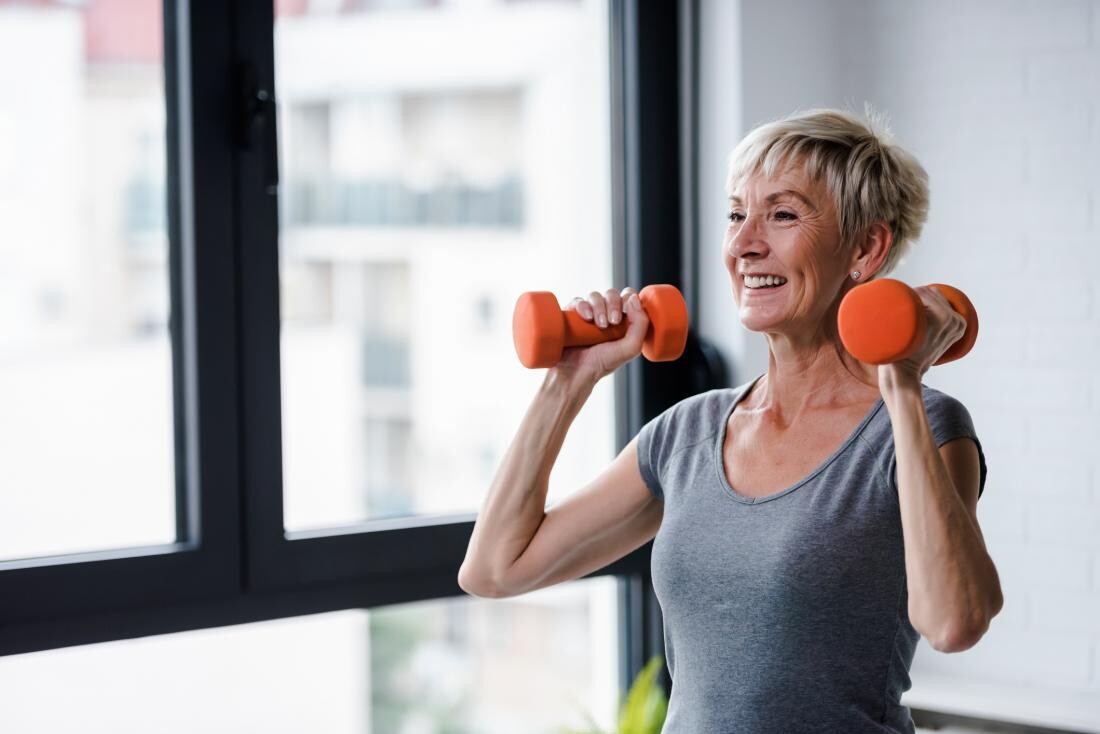
One of the most significant concerns for older runners is the loss of muscle mass. Scientific studies consistently emphasize the effectiveness of strength training in combating this age-related decline. Resistance exercises like weight-lifting trigger muscle protein synthesis, promoting the growth and maintenance of muscle mass. Not only will this improve running performance, it also plays a crucial role in supporting overall mobility and reducing the risk of injuries.
Enhance bone density

Aging often brings a decline in bone density, increasing runners’ susceptibility to fractures and injuries. Strength training is a powerful ally in maintaining and enhancing bone density; weight-bearing exercises stimulate bone-forming cells, leading to stronger and more resilient bones. For older runners, this means a reduced risk of stress fractures and a safeguard against the impact-related challenges that can accompany running over time.
Boost your metabolism
Metabolism tends to slow down with age, contributing to a potential decline in energy levels. Strength training, particularly high-intensity interval training (HIIT), can rev up the metabolic rate. This not only aids in weight management, but also provides older runners with the energy needed to tackle longer distances. As your running efficiency improves, your overall performance is enhanced.
Get started today
No idea how to begin? If you have access to a local gym, it’s a great idea to invest in one or two sessions with a trainer to get used to the equipment and learn a few exercises you can do on your own. There are plenty of ways runners can work on strength at home, though, and YouTube has many videos that are useful to help figure out how to strength-train at home correctly and safely.
Try bodyweight exercises such as squats, lunges, push-ups, and planks, which require no equipment and effectively target key muscle groups for runners.
Incorporate resistance bands for added challenge; they’re affordable, versatile, and can be used for exercises like leg lifts, lateral leg raises, and upper body workouts.
Start with a set of light dumbbells for exercises like bicep curls, overhead presses and weighted lunges, gradually increasing the weight as you get stronger.
Incorporating some strength training into your routine doesn’t have to take a lot of time–even fifteen minutes after a run a few times a week will make a real difference.
by Keeley Milne
Login to leave a comment
Five nutrition rules runners can forget
Proper nutrition can make a big difference to your running performance, but there are a lot of myths out there that can derail your efforts for a new personal best. These six nutrition “rules” are probably doing more harm than good, and we’re here to tell you it’s time to forget about them.
1.- Fasted runs will improve performance

There is some evidence to suggest that doing some of your runs in a fasted state will improve your body’s ability to use fat for energy rather than glycogen (which is stored carbohydrate), which is good for endurance. But for most (especially female) runners, this is likely to decrease their performance during workouts.
As Dr. Stacy Sims explained in this interview, women’s bodies already preferentially use fat and protein for fuel. Because of this, fasted training in women increases cortisol levels, causing a cascade of poor adaptation, fatigue, depression, anxiety and a build-up of body fat.

If you run early in the morning or prefer not to have a lot of food in your stomach when you run, don’t fret. Even just something small like half a banana or a piece of toast 10-20 minutes before you head out the door is all you need to bring your blood sugar up and decrease your cortisol levels.
2.- Gluten is bad for you
Unless you have celiac disease or a gluten allergy, this is simply not true. The gluten-free diet has risen in popularity over the last decade, but in many cases, it is actually less healthy than a standard diet, due to the often highly-processed nature of many gluten-free foods. If you’re experiencing GI distress and you think gluten might be the problem, talk to your doctor. They will be able to rule out other potential causes of your discomfort and help you resolve the issue.
3.- You need supplements to meet your nutrition needs
If you have diet restrictions, you may need some supplements to meet your nutrition needs, but otherwise, you can get everything you need from a healthy, well-balanced diet that contains plenty of fruits and vegetables. If you think your diet may be lacking, consult a dietitian (preferably with expertise in sports nutrition). They can assess your current eating habits and work with you to ensure you’re meeting your nutrition needs through whole foods. Then they can make supplement recommendations based on your goals and your lifestyle.
4.- You should never eat white bread or white rice
Fibre is an important nutrient, and many well-meaning runners have banished all non-whole-grain foods from their diets in the name of optimal health. The truth is, foods like white bread and white rice often do have a place in a runner’s diet and can provide a quick source of energy ahead of a big run or workout. Running can also be hard on your gut, and for some runners, too much fibre can exacerbate already-existing GI issues. Plus, eating fibre-rich foods too close to a run can cause GI distress, even for runners with strong stomachs. So while whole-grain, high-fibre foods are an important part of your diet, don’t be afraid to reach for the white rice once in a while.
5.- You need to watch your calorie intake to stay lean and fast
Countless runners have fallen prey to the “lean equals fast” mentality, but not only is this not true, it will ultimately decrease your performance, and it’s also potentially dangerous. Runners should always focus on consuming plenty of calories to fuel their training. Underfuelling will likely cause your performance in workouts to suffer, and is likely to lead to injuries like stress fractures and burnout. Listen to your body and eat whenever you’re hungry (and don’t skimp on healthy carbs). If you’re having trouble eating enough to keep up with your training, talk to a dietitian, who can give you strategies to ensure you’re fuelling properly.
by Brittany Hambleton
Login to leave a comment
Molly Bookmyer who overcame cancer now challenges TCS Toronto Waterfront Marathon
Marathoners endure much suffering in order to excel in their sport but few have struggled with brain cancer.
American Molly Bookmyer underwent two surgeries eight years ago following a diagnosis of a brain tumor while finishing up her degree at Ohio State University.

With that awful period behind her now, as an elite marathoner, her path has led her to the 2023 TCS Toronto Waterfront Marathon where she, and a growing number of American elites, will attempt to qualify for the 2024 US Olympic Trials, to be run in Orlando, Florida on February 3.
Her current best is 2:31:39 and she sees Toronto Waterfront – her first international race – as an opportunity to knock off a significant chunk of time.
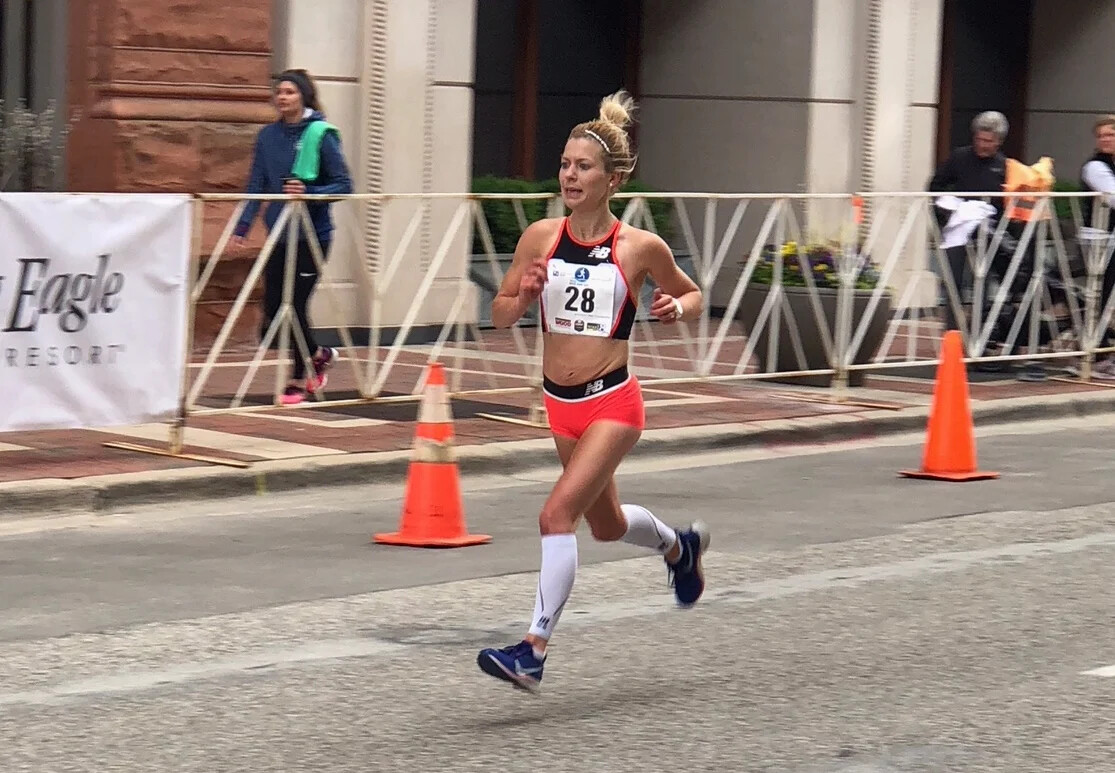
“I want to run 2:27,” she reveals. “I feel I haven’t had a breakthrough in my marathon I have had some good races at shorter distances. I ran a 1:10:51 half marathon last fall. So I have had some success at the shorter distances and I haven’t quite figured out the full marathon distance yet.
“My first goal is to get the world championship standard and the second goal is to get the Olympic standard.”
Bookmyer graduated from Ohio State in 2013 with a Bachelor of Science in Business Administration, Management and Operations. While she was a member of the Buckeyes’ cross-country and track teams she was not a scholarship athlete. Now she has a better understanding as to why she was limited.
“I was a walk-on at OSU. I got better but I wasn’t a star in college,“ she explains. “When I look back at it, it was probably because I was sick at the time. I didn’t know I had a brain tumor. I competed on the team but my times weren’t spectacular. I lettered in cross country and track but I wasn’t All American and I didn’t make it to the NCAA’s.”
A series of stress fractures also held her back and it was by a stroke of luck that the tumor was discovered.
“In different blood tests to try to find why I got stress fractures they found one of my hormones prolactin was high,” Bookmyer says. “This (hormone) is associated with tumors near your pituitary gland. They did a scan and they found the tumor in my ventricle. It was kind of luck. I probably had symptoms but thought it was normal.”
Following the diagnosis she underwent a spinal tap to determine if the cancer cells were in her spinal column. Fortunately, it came back negative. But the surgery to remove the growing tumor was vital.
Originally from Cleveland, she moved to Columbus to study at OSU and remained there ever since. That’s also where she met her husband, Eric.
Immediately after graduation she worked for the Abercrombie & Fitch company. Then, having dealt with her own serious illness, Eric was diagnosed with testicular cancer. Running was helpful in both relieving the stress of being a full-time caregiver to him as well as helping in her own recovery.
“I am healthy now,” she says through a smile. “I get a brain scan every year. It used to be every six months. After the first surgery I had complications from the surgery. The tumor has not come back.
“Eric just had his 5-year checkup, He had a couple of surgeries and ‘chemo’ so now he is healthy as well, I guess we are lucky we went through a lot and came out the other side healthy.”
Two years ago she was recruited by one of her former contacts at Abercrombie & Fitch to work for Hawthorne Gardening Company which is involved in the hydroponics industry selling lights, pots, containers, benches and other gardening equipment in both the cannabis and general botany industry. Most importantly, the job allows her to work remotely, something that helps while training full time.
Down time is limited but she says she enjoys spending time with Eric and her dog Cooper. Listening to music is another relaxing pastime with Rob Thomas of Matchbox Twenty remaining a favorite. With the Toronto Waterfront Marathon rapidly approaching she is confident she will perform at her best on the big occasion.
“Training is going really well,” Bookmyer declares. “I had a little setback in the spring. I tore my plantar fascistic but that’s fully healed. My mileage has gone to 115 to 120 miles (185km – 193km) a week which is higher than I have been before; paces are good, I am feeling strong. I am excited for what that means.”
by Paul Gains
Login to leave a comment
TCS Toronto Waterfront Marathon
The Scotiabank Toronto Waterfront Marathon, Half-Marathon & 5k Run / Walk is organized by Canada Running Series Inc., organizers of the Canada Running Series, "A selection of Canada's best runs!" Canada Running Series annually organizes eight events in Montreal, Toronto and Vancouver that vary in distance from the 5k to the marathon. The Scotiabank Toronto Waterfront Marathon and Half-Marathon are...
more...Tim McGraw Used to Run 7-8 Miles Before Every Concert
Once a runner—the country artist misses his mileage, but he still walks for an hour every day.
Country musician Tim McGraw is a former runner whose pre-show routine used to include running seven to eight miles to clear his mind before playing to crowded auditoriums.

In an interview with Entertainment Tonight Canada, the three-time Grammy Award-winning artist shared that he’d still be running today—before the shows on his current “Standing Room Only” tour—if he weren’t so injury prone. McGraw says he’s broken his foot three times, and had two knee surgeries and an elbow surgery to boot. He can no longer run and misses getting in his miles. Instead, he now starts each day with an hour-long walk, and he makes sure to go for a stroll before he performs onstage.
It’s not just running that’s taken a toll on McGraw’s body though. In 2011, he landed himself in a boot with two stress fractures caused by “too much spearfishing and beach volleyball,” as the singer-songwriter wrote on Instagram at the time. The same year, he broke his foot while on tour for his “Emotional Traffic” album and performed wearing a cast.
He told CMT, “I don’t know if it happened running or in the part of the show where I jump off speakers. It could’ve happened any number of ways. It hurt for a while, and I kept running and kept working out and kept doing shows. For a couple weeks, it just kept getting worse and worse, and it finally got to where I couldn’t walk, and it was really swollen.”
Even without running in his life, the 56-year-old continues to maintain a rigorous exercise regimen. He played sports growing up, then fell out of shape. Around 2008, he gave up alcohol, burgers, and “truck stop food,” and got excited about working out again. He even opened his own gym in Nashville in 2019 and has written a book about his late-career fitness transformation.
It pays dividends on tour, too, with all that cavorting around with a guitar and mic. He uses his whole body to sing, and as he told Men’s Health, “having more control over those things makes my voice stronger.”
He continued, “I don't really get tired of training. There’s such a feeling of accomplishment that comes from the feeling of being my age and still being at the top of my game.”
by Runner’s World
Login to leave a comment
Why Carbon-Plated Running Shoes Can Lead to Injury
Ten Non-plated running shoes that let your feet move freely, provide stable cushioning, and deliver a fast, agile ride
The advent of supershoes has transformed the running shoe world in every category, none more than the class of shoes that used to be called lightweight trainer-racers. Rather than low, flexible, relatively firm shoes, the majority of up-tempo shoes now have a thick stack of light, bouncy foam with a curved carbon or plastic plate embedded in the midsole. Shoes without a plate are now defined by its absence. But concerns continue to grow about injury risk in carbon-plated shoes, and a growing number of models are eschewing the high-stack-with-plate trend and reviving the simple up-tempo shoe category with modern touches.
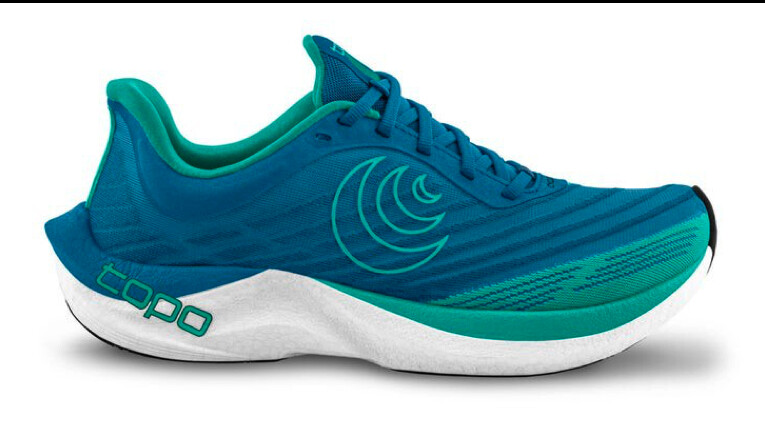
Besides not having a plate, these shoes share other characteristics. Like supershoes, they all feature advanced midsole foams that are ultra-light and hyper-responsive. Unlike supershoes, however, they all have relatively low stack heights and tend to be built on wider platforms, both of which enhance their stability. They also all have a flexible forefoot (rather than a rigid, rockered one), svelte uppers that have just enough structure to hold the foot in place, and price tags that run around $100 less than their supershoe siblings.
If plated super racers and trainers are indeed super, allowing you to run faster with less effort, why would anyone want anything else? The answer has two seemingly contradictory parts: 1) to avoid the excess stresses and accompanying injuries that supershoes can cause, and 2) to allow the natural training stresses that supershoes reduce, in order to build stronger, more robust feet and lower legs.
The problems start with supershoes’ thick, bouncy, sole that propels you forward, but can also throw you sideways. “Running in supershoes is a much less stable environment,” says Jay Dicharry, physical therapist, biomechanical researcher, and professor at Oregon State University. “If you have really good alignment and foot and ankle control, you might be OK, but if not, a supershoe will greatly magnify your instability. You’ll wind up with a considerable increase in stress—and if you have something borderline, it might push you over the threshold.”
Amol Saxena, a leading sports podiatrist in Palo Alto, California, also points out issues with the prescriptive rigidity of the plates. “The problem with the carbon-plated shoes is that your foot is individualized, and the carbon plate is not,” Saxena says. “So if the shape or length of your metatarsals line up differently than where it has to bend, or your plantar fascia is less flexible, you can get stressed in those areas—that’s why people are breaking down. I’ve had people break or tear things just in one run in the shoes.” The more flexible plates found in many super trainers reduce some of this stress, but these shoes are still tuned to optimize specific strides and don’t let the foot move freely in its preferred patterns.
Research has also shown that running in supershoes changes your form: It decreases your cadence, increases stride length and peak vertical forces, and alters foot mechanics. All these add stress to joints. “When you put a supershoe on, you basically have a trampoline,” Dicharry says. “It’s going to compress and rebound, and creates a different rate of loading to muscles and joints.” While no studies to date directly demonstrate that supershoes cause injury, evidence links them to stress fractures, plantar fasciitis, achilles tendinopathy, and other foot and lower-leg issues.
Paradoxically, while supershoes’ unstable platform and rigid plates can add excessive stress, their performance-enhancing rebound can also remove some of the training load. Supershoes lower the load at the ankle and foot, reducing the work they have to do and making running easier in the short-term, but simultaneously removing some of the stimulus for your body to adapt and grow stronger in the long-term. “If you run in supershoes exclusively, you’re going to end up with a bunch of deficient runners prone to injury—runners with less springy tendons, weaker tendons, and lower bone density,” Dicharry says.
The solution is to wear a variety of shoes in your training. “It is good to use different stack heights and flexibility,” Saxena says. “Plated shoes should be a training tool as well as for races—but how much depends on the runner.” You want to train some in the shoes you’ll be racing in, to let your body adapt to their unique stresses and stride patterns. But training in more flexible, less-bouncy shoes has been shown to improve running economy and build the strengths you need to handle the unstable rebound of supershoes. “If you want to run in super shoes you need to put the work in to show up with stable parts,” Dicharry says.
Fortunately, I don’t find training in these shoes a chore. They may not be performance-enhancing racers, but they are light, nimble, stable, and make my feet feel connected, engaged, and alive.
After having run in dozens of shoe models released this spring, I selected those that fit in the category and ran in a different shoe every day for six weeks—on asphalt, concrete, and dirt roads. I did at least one daily run and speed workout in each, ranging from 100-meter pickups to VO2-max intervals to tempo runs. Despite their similarities, each shoe has a slightly different ride and significantly different fit, so it’s worth trying out a few before buying. All of these models will serve as an excellent trainer for easy daily runs, interval workouts, tempo runs, and occasionally going long.
by Outside Online
Login to leave a comment
Four ways hitting the trails can benefit road runners
Nothing rouses a runner’s self-discipline quite like training for a road race. Whether it’s preparing for a 5K or a marathon, getting in the best possible shape for the big event usually means setting a clear training schedule and sticking to it.
While challenging oneself to stay fully committed to a plan during weeks and months of tough sessions has a certain appeal, becoming overly obsessed with hitting every target on the calendar can turn training into a mental and physical grind. As road-race training plans tend to focus exclusively on road and track work, the lack of variety in sessions can make training feel even more taxing.

Adding the occasional trail run to a road-race training schedule can be a great way to keep training fresh without having to sacrifice crucial road or track sessions. You can tuck a trail run seamlessly into an existing training plan by scheduling it on a dedicated easy-run day, or on days when the schedule gives the option for either a rest day or an easy run. However it best fits best into the schedule, here are four reasons road runners may want to consider taking the odd trip down the trail.
1.- Enhanced stability and strength

Navigating hills, rocks and uneven terrain on trail runs forces runners to engage a wider range of muscles, including those in the glutes, hips and core, which are often neglected during road running. Further developing these muscles can help runners enhance stability, power and injury prevention–benefits that can reap rewards as runners progress in their road training.
2.- Reduced impact on joints
Trails generally have softer surfaces, such as dirt or grass, which reduces the impact on joints and can help prevent injuries like shin splints. A recent study found adding too many fast kilometres too quickly, as can happen in speed-focused road and track sessions, is more likely to lead to tibial stress fractures than taking on the steeper, slower climbs associated with trail running.
3.- Improved aerobic fitness
The generally slower pace of trail running lends itself to training at an easier effort, which can strengthen aerobic capacity. Training in the aerobic zone can help increase the body’s ability to take in, transport, and use oxygen, leading to improved running performance and greater endurance capacity.
4.- Greater mental stimulation
The changing scenery and the need to focus on the trail can offer a mental escape from the monotony of running only on the road. It can be an engaging and exciting experience that helps alleviate boredom and keep the mind sharp. Trail running allows you to explore new areas, discover hidden gems and become immersed in nature’s beauty.
by Paul Baswick
Login to leave a comment
Tips for returning to speedwork after injury
Returning to running after injury can spark intense feelings of both joy and fear. Any runner who has been sidelined for a seemingly endless stretch of weeks or months has felt the elation of finally being able to slip back into their running shoes, head out the door, stretch their legs and feel their spirit soar. But a rebound from injury can also be riddled with doubts: is it too soon to start running again? Am I going to retrigger the injury? Can I ever get back to being the runner I was before I got hurt?
Uncertainty and uneasiness tend to ramp up in step with training intensity, making a return to speedwork that much more of a mental challenge. With speedwork being an important part of training for any distance, from track events to ultramarathons, the time eventually comes for the fully recovered runner to get back up to speed by reintroducing some intervals into their training. If you’re an injured runner on the road to recovery, or if you’ve recently returned to action but find yourself stuck in a slower gear, consider these tips for safely reintroducing speedwork into your training.
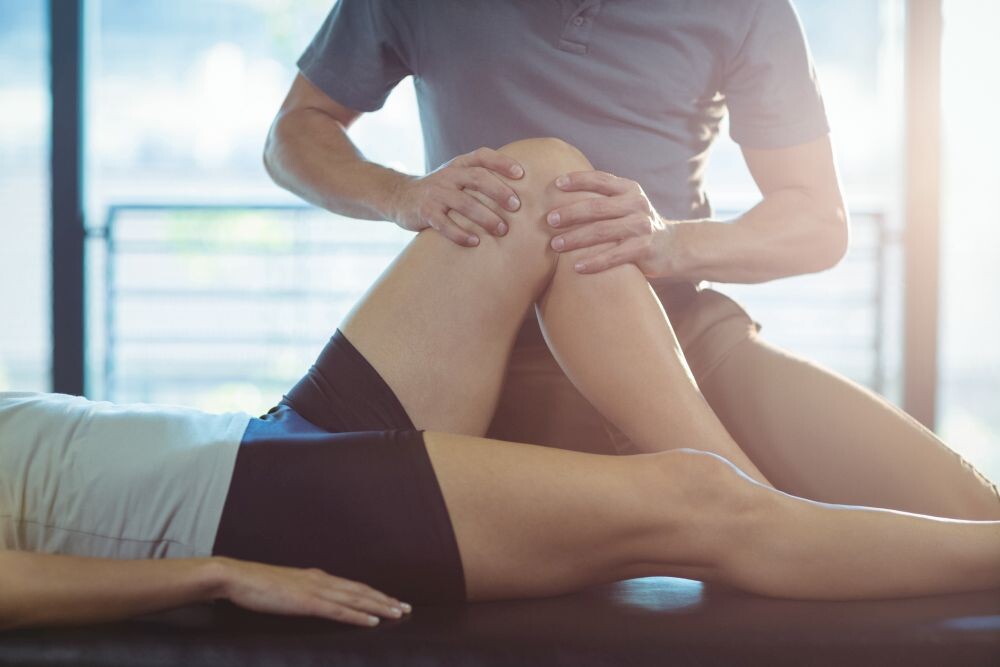
Let your caution be your guide
It’s important to remember feelings of apprehension you may have about upping the intensity of your runs are natural, and are likely serving you well. Erring on the side of caution is key when returning to running, especially when the focus is on speed. Appreciate the uneasiness about returning to speedwork as the inner voice of wisdom that it is, instead of mischaracterizing it as irrational worry. Your instincts to be very careful about speedwork are supported by science: a recent study, for example, found adding too much speed in training too quickly is more likely to lead to stress fractures than is running tough uphills and downhills. As the researchers of that study noted, the lesson for runners isn’t to stop doing speedwork, but to approach it with the appropriate patience and care.

Consult a health-care professional
Before resuming any intense training or speedwork after an injury, it’s crucial to consult with a health-care professional, such as a physiotherapist or sports medicine specialist. They can evaluate your condition and provide specific guidance tailored to your injury and recovery progress.
Begin with a proper warm-up
Begin each speedwork session with a thorough warm-up to prepare your body for the increased intensity. Incorporate dynamic stretches, light jogging and mobility exercises to gradually raise your heart rate and loosen up your muscles. This helps reduce the risk of further injury and may enhance your performance.
Start with short intervals
When reintroducing speedwork, start with shorter intervals rather than long, intense efforts. For example, instead of jumping straight into 800-metre repeats, begin with shorter intervals like 200 or 400 metres. This allows your body to adapt gradually to the increased pace and intensity.
Allow for adequate recovery time
Intense speedwork places significant stress on your body, so it’s essential to incorporate adequate recovery time between sessions. Give yourself at least 48 hours of rest or easy running between speedwork sessions to allow for muscle repair and adaptation. This helps prevent overuse injuries and promotes a safer progression.
Listen to your body
Pay close attention to any warning signs or pain during and after speedwork sessions. If you experience sharp or worsening pain, discomfort, or unusual fatigue, it’s important to back off and allow your body more time to recover. Pushing through pain can lead to further injuries and setbacks. Be patient and gradually increase the intensity and volume as your body allows.
by Paul Baswick
Login to leave a comment
Study finds speedwork (not hill repeats) more likely to cause stress fractures in runners
Fast efforts are more likely than tough hill sessions to lead to tibia (shin-bone) stress fractures, according to new research out of the University of Calgary. In fact, the same factors that can make hill work so gruelling might also help promote runners’ bone health.
The findings come from a study in which researchers enlisted 17 volunteers for treadmill runs up to 16 km/h, at five different slopes. Through complex modeling that also pulled information from motion-capture testing and a database of computerized tomography (CT) scans of volunteers’ tibia bones, researchers were able to get insights into the type of running that places greater stress on the tibia, which in turn is more likely to result in a stress fracture.
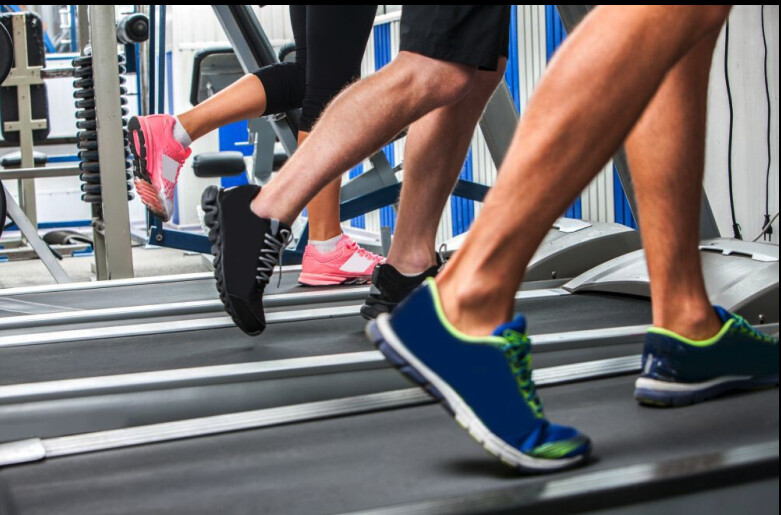
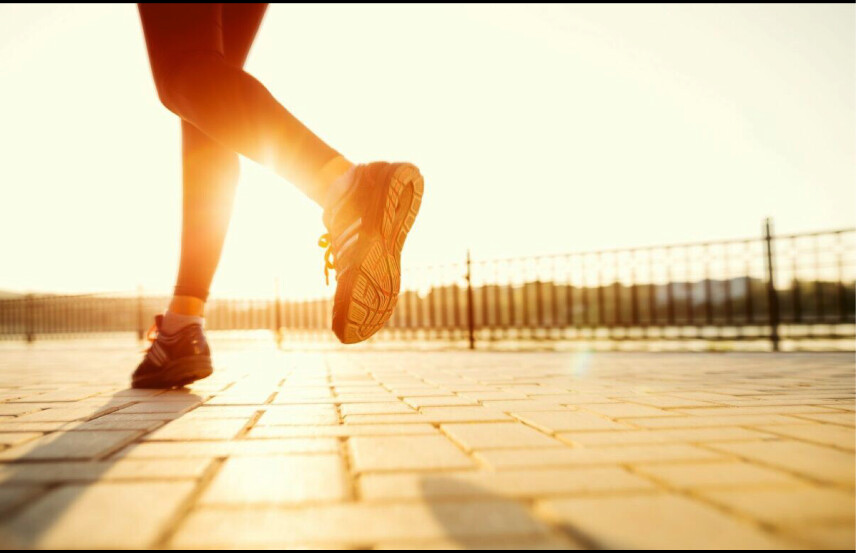
“I’ve really been interested in running biomechanics, and in particular, understanding why people get injured,” says Michael Baggaley of the University of Calgary’s faculty of kinesiology. He tells Canadian Running that although the link between increasing training intensity and a greater risk of tibial stress fractures is well established, he and his team wanted to understand what specific aspects of training were more likely to result in injury.
“We didn’t really see a difference in the damage potential when you run uphill or downhill relative to running on flat ground,” Baggaley says of his team’s findings, “but changing the speed that you run at really did change what we consider the damage potential.”
He suggests the body’s response to the challenge of running uphill helps protect runners from shin-bone stress.
“It can be counterintuitive, because uphill running is very exhausting, really taxing, but when you run uphill, you tend to run with a very quick cadence and a very short stride length,” he says. “So it’s actually these adaptations going uphill running that minimize the loading on the bone. Inadvertently, the fact that running uphill is so tough, that it costs so much energy and oxygen, actually causes you to change the way you run into a more protective manner for our body. Conversely, when you run fast [i.e., on flat ground], you take longer strides and spend more time in the air. All that requires more force to be placed on your body.”
He says while other factors, such as previous bone injuries or malnutrition, can increase susceptibility to stress fractures, the study does make a clear connection between running faster and increasing the risk of damage to the tibia. “The faster you’re trying to run, the more likely you are to be stressing the bones to a higher degree,” says Baggaley.
The takeway for runners, he says, is to take easy runs easy, and to be careful not to introduce too much speedwork too quickly into your training. “There’s a general premise that most runners spend too much time training too fast, and most of us should spend most of our runs at an easy, conversational pace. I think the results of this work support that notion, and that many people are putting themselves at a higher risk than is necessary in order to gain the training benefits of running.”
by Running Magazine
Login to leave a comment
Camille Herron’s Advice: Skip the Long Run
Bones are made of dynamic tissues that need stress, just not too much, says one of the world's best ultrarunners
In January, my social media feeds were filled with the typical new year posts—year-end recaps, reflections and resolutions, and hopes for the coming year. But one tweet caught my eye.

Ultrarunner Camille Herron shared one reason why she thought she was “crushing world records” in her forties: She only does one or two long runs a month (nothing over 22 miles) and she never does back-to-back long runs. Case in point: she ran one easy 20-miler in the lead-up to the Jackpot Ultra Running Festival’s 100-mile race last year, which she won outright. Instead, she focuses on cumulative volume and running frequency.
In her words, “Long runs are overrated.”
In the world of ultrarunning, where there’s a bravado around epic big-mileage days, Herron seems like an anomaly. Among the replies to her tweet, there was curiosity tinged with a side of skepticism. How could an ultra-distance athlete—one who holds world records for 100 miles and for the longest distance covered in 24 hours—run no longer than what you’d typically do in a marathon build-up? Shouldn’t her training mirror what she’d need to do in an ultra?
Karen Troy saw Herron’s tweet too. But her first thought was, “Wow. Someone’s actually trying to do it.” To Troy, who’s a professor of biomedical engineering and the director of the musculoskeletal mechanics lab at Worcester Polytechnic Institute, Herron’s training philosophy reflected what she’d read in scientific journals and seen in the lab related to mechanical stress and bone adaptation. “To me, it really aligned well with a lot of the theory,” she says.
Bone is a dynamic tissue. It changes, adapts, and gets stronger in the same way that muscles do. And in order for them to get stronger, you have to load them.
Bones have a “set point”—akin to the thermostat in your house—for the optimal amount of mechanical stress it wants to experience. Depending on the amount and rate of force transmitted through the bone, bone cells respond by either adding or removing bone. Too much force and the cells build bone to temper the load. Too little force and the cells get rid of bone so that it can sense more load.
Scientists have long been interested in finding the sweet spot between the amount of physical activity that induces adaptation and strengthens bone and the amount that can lead to injury—a fine line that many runners are intimately familiar with. What they’ve found in studies with animals like mice and rats is that, after back-to-back loading cycles, bone cells start to ignore the mechanical stress and stop adapting. Troy says it’s like when you walk into a smelly room. “It smells pretty bad for 10 to 15 minutes, and then you adapt. If you stay in the room, it stops smelling,” she says.
However, just like your nose can become re-sensitized if you leave the smelly room, bone cells do too. Studies have found that bone cells start to pay attention to mechanical stress again after a four-to-eight-hour rest period. When you spread the load over multiple sessions rather than one sustained bout, you gain more bone. (Tendons and ligaments respond similarly.)
The evidence suggests that distance running has diminishing returns when it comes to bone health. Troy hypothesizes that bone may respond to the stress of running over the first half mile or so but then become desensitized to the monotonous, repetitive loading. “You’ll get muscle and cardiovascular adaptations, but your bones aren’t paying attention anymore,” Troy says. “You’re just adding miles and potentially accumulating damage, but you’re not going to add adaptive stimulus that will help the bone become stronger.”
There isn’t a lot of data in people, making Herron an interesting case study. “Humans are made to move frequently,” Herron says. “The body responds to change and dynamic stimuli, so you need to stress the body in different ways.” It’s an approach she believes can work for runners at all levels and distances.
Her training is peppered with frequent, shorter bouts of running. Most days, Herron will run 10 to 15 miles and then doubles back for six or seven miles after a four-to-eight-hour rest period. Over a two-week period, she completes four main workouts—short intervals like 400-meter repeats; long intervals like one-to-three-mile repeats; a progression run, usually incorporated into a long run; and a hill session where she stresses both the uphill and downhill components to load her body eccentrically.
In between workouts, she runs easy and incorporates strides and drills twice a week. She likes to race a marathon or 50K a couple of weeks before a big race as a way to practice her nutrition and stress her body “just enough.”
“You can’t just look at a singular long run or back-to-back long runs. You have to look at the whole picture. Every run is like bricks that add up over time,” she says. Over the years, Herron has played around with her training formula and has cut back on her long runs, emphasizing quality over quantity and running for time rather than just distance. “I’m totally fine doing two hours as my long run,” she says.
It makes sense that Herron’s training is steeped in science. She was pre-med at the University of Tulsa before turning her focus to scientific research, studying the impact of strength training on bone and muscle. In graduate school at Oregon State, she investigated the relationship between mechanical stress and bone recovery for her master’s thesis. By studying bones, maybe she hoped to understand why she experienced multiple stress fractures in high school and college. What she learned shaped how she trains.
But she didn’t put the theory into practice right away. Early in her marathon career, she was still doing long runs up to 26 miles. It wasn’t until she started training at altitude that she began to split up her runs. Her coach (and husband) Conor Holt thought it would help her acclimate to the altitude, but she says, “It was like a rocket to the moon.” She recovered better and felt more spark in her legs.
Sabrina Little, ultrarunner and five-time U.S. National Champion, has also seen the benefits of this style of training. In college, she used to log big miles, a 30-mile run before doubling back for another 20 miles the next day. But once she graduated, she no longer had the luxury of dedicating endless hours to training. She expected to be less prepared for races but a funny thing happened—she performed better. It turns out that running multiple times a day may have other performance-boosting effects too.
“When I set the American record in the 24-hour run, my longest run was maybe 16 or 17 miles,” Little says. She would train in the morning and then come back for a faster session in the afternoon. “Breaking things into shorter blocks was beneficial. I was able to do higher integrity work instead of just long, slow distance,” she says. She thinks it helped her body absorb her training.
Now, as a parent to two young kids, Little definitely doesn’t have long blocks of time, so she practices what she calls “prepositional running”—before things, between things, and after things.
However, both Herron and Little logged many miles before happening upon their current training strategy. “I don’t want to say big days aren’t needed, but it’s hard to say what role they play,” Little says. “There’s a way in which the big races are kind of grandfathered into your legs, like you’re never too far away from your last 50-miler.”
While Herron and Little’s training mirrors research findings, it can’t be considered in isolation.
There are other factors that influence bone health and adaptation aside from mechanical loading—genetics, nutrition, running gait, and how much bone you laid down during your peak bone-building years. Hormonal health matters, too, because bone cells have sex hormone receptors. If your hormone levels are low, Troy says it tips the balance toward bone removal, leaving the tissue more vulnerable to injury.
Whether or not eschewing long, sustained bouts of running is the key to success and injury prevention, there are benefits to fostering the idea that not everyone needs big days on the road or trails.
“Most people have responsibilities and can’t spend all that time outside,” says Little. “People should know there are other possibilities. It could get a broader scope of people participating.”
Login to leave a comment
These super simple exercises to become a better runner
There comes the point where it is not enough to go running 5 or 10 kilometers and try to make it faster than the previous time, you are looking to become a better runner.
If you want to become a better runner, make sure you acquire a reliable technique and do the proper training before you start adding kilometers to your training routine. Set a schedule and look for different ways to motivate yourself to maintain consistency, rain, shine or sunshine.
Last but not least, you will have to practice to improve your endurance and your speed, using techniques such as uphill slope races, continuous races, and athletic track training. Regardless of the level you have, you can be a better runner if you make training a priority.
1.- Single-leg squat
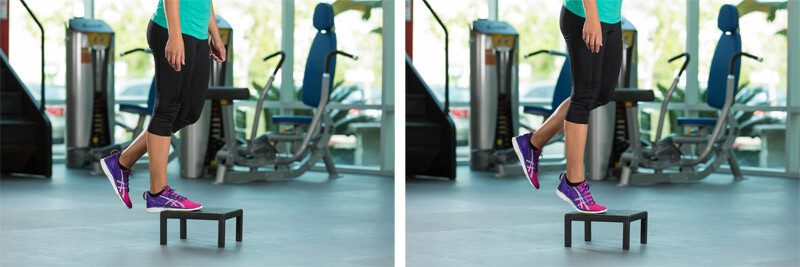
As a runner, you need to have strong and healthy legs to be able to run many kilometers more efficiently.
Squats are one of the best ways to strengthen your legs. And although sometimes it can be hard to stop running for a day for strength training, the benefits of these exercises are well worth it.
The squat is a multi-joint exercise that strengthens the hamstrings, hips, quadriceps, and glutes. It is a simple exercise to do. However, it is essential to know the proper technique of this exercise to make it as effective as possible, especially in this case, it will be with only one leg.
The method of single-leg squats
During this exercise, as its name says, you must do it with one foot. You can start with the one you want, you can place the foot that will be in “rest” it in front of your body, as in the image below.
Keep in mind not to bend your back: it has to be straight. Pull out the chest with the shoulders back.
Unlike a squat with both legs, in this case, your leg should be at a mid-point for balance, the leg that “rests” also helps maintain stability.

Keep your back as straight as possible, bend the knee until you are seated: the buttocks go backwards. The back is slightly inclined forward, and the knee does not have to pass the length of the foot.
Once in this position, you should feel that your glutes and thighs are working. The most important thing is to keep the body firm and not loose balance.
To return to your initial position, anchor your feet on the floor to avoid any imbalance and push up with your legs. You can contract the buttocks during the rise to make the exercise more effective.
In the beginning, it can be complicated, mainly to go down, for not having the balance and strength necessary, but do not worry, you will improve with practice. As you progress, you can add discs or dumbbells to add difficulty.
5 reasons why you SHOULD include them in your routines
1. To help with the strength of your hip.
The hip plays a super important role in your runner body since it prevents your body from “moving” while you run. But by working your hip, you can direct your movements more effectively.
2. To improve your posture.
Now you know! The posture of a runner is everything, and squats help your trunk stay straight while you run.
By having an adequate posture, your performance will improve. Checked.
3. To gain strength in your glutes.
Did you hear that the squats are perfect for your glutes? It is accurate, and the physical work that you can develop in that part of your body is essential to improve your running technique.
4. To improve strength in your legs.
Who does not want strong legs? Especially when running, they are our biggest asset as runners, and with squats, you can strengthen them, and improve your coordination to develop a more efficient stride.
5. To help improve your stride.
Yes, according to what the previous point says, performing squats allows your legs to assimilate the effort to take a more efficient stride, and if you develop these exercises with slurs, your benefit will be better.
How often to do squats?
Three to five series, of 5 to 10 repetitions twice a week.
2.- Heel raise
The exercise of elevation of heels aims to train the calves, which are an essential part of the leg’s muscle group. It is a little forgotten part of the body, as far as the time dedicated in training, but indispensable for the proper functioning of the inferior trunk.
To execute this exercise correctly, some kind of step is necessary. A resistant platform of at least 6 inches that allows you to do the exercise comfortably. It is a movement that must be carried out slowly and concentrating the effort in this area of the body.
One important aspect must be taken into account before performing the exercise. Correctly doing the movement requires balance and practice. We recommend, in the first sessions, to execute it with your own weight, without dumbbells. It is easy to lose balance and work both legs equally. We usually tend to make more effort with one of the two legs, you should avoid it.
Undoubtedly the calves are one of the most involved muscles in the race. The heel elevation is an exercise that enhances the stride but also protects the runner from many injuries.
In your weekly routine, you must not miss a heel raise exercise in one of its variants.
When we hit the ground with the foot, the ankle maintains its stability thanks in large part to the calves. They prevent the footfall from sinking and help to perform a more effective and explosive impulse phase.
Stronger calves will allow us a better technique, something fundamental to improve the training. Another aspect of working the calves is their protective effect against sprains of the ankle or possible inflammations or lesions of the Achilles tendon. A running workout involves thousands of impacts on the ground, something that can affect the joints in the Achilles tendon. Strengthening calves with this exercise will minimize injuries that may affect the area.
The method of the heel raise
Standing on a raised platform, support the metatarsal, leaving the heel protruding and falling slightly.
If we want to increase the intensity, we can put a bar on the shoulders, although I advise you to hold dumbbells with your hands.
Maintain a straight position and begin to raise the calves little by little, extending the ankle. Try not to lose balance and control the movement at all times.
Safety tips when performing heel raises:
It is very common to suffer a small rupture of the calf by overloading it with this exercise. At first, it will be enough to do it without weight, paying attention to the technique and marking the rise and fall correctly. Nor should rebounds be made when we get down.
When you put your feet on the elevated platform, try not to be too close to the edge, because you are going to overload the area of the fingers and the exercise will not be so effective for the calves. The feet should be half in and half out.
Main benefits of heel raise to become a better runner
Strengthens the calve’s musculature: as we have said before, this exercise focuses mainly on working the calves. Thanks to the heel raise, the calves will be strengthened, which will generate better balance in the legs.
Ideal for runners: it is an exercise that enhances the momentum of the stride, in addition to protecting the runner from many other injuries. For this reason, it is an essential movement for runners. You will gain resistance and explosiveness.
With this exercise, you will tone the lower extremities and gain strength in the calves. Also, it is an ideal movement to recover after an injury in the ankle joint.
How often to do heel raises?
Three to five series of 5 to 10 repetitions twice a week.
3.- Three-dimensional hops
You can’t deny that at some point in your childhood you jumped just for fun. It was a pretty fun game that you could share with your friends. At some point in life, we stop practicing it, without realizing that now, as runners, we can benefit from it more than we imagine.
Jumping burns approximately 10 calories per minute and is an excellent activity to finish a running session, or even to relieve stress. What are you waiting for to start doing it! Go back to that time of your childhood and exercise.
This type of jump is based on increasing calf strength, as well as adding explosiveness. In general, jumping and other plyometric activities make the tendons more efficient to absorb and transmit energy.
The impact of the jump also stimulates bone growth and should protect against stress fractures.
The calf is a kind of spring when we talk about running or jumping. The three-dimensional jump is an exercise that offers a different way of exercising and strengthening the muscle and tendons since the movement is made to the sides and not only upwards as a typical leap. This increases endurance, it also builds movement ability and general agility.
Three-dimensional jumps are made with both feet, they are of low intensity, and it is a safe exercise that does not cause injuries.
The method of Three-dimensional hops
These are short, low and fast jumps, to all sides, forward, back, sides, and in a rotating motion.
Basically, it is about jumping and landing in each of the directions as specified in the previous paragraph. You can do it with both feet, which is equal to two contacts. If you do it with one foot equals one contact, so you do half for each leg.
Jump from side to side, as if there was an imaginary line.
You should not bend your knees to take more momentum, remember that they are short jumps, try to make them fast.
In the case of jumps with rotation, your chest should always remain static.
Benefits to become a better runner
1. It will help improve your cadence and stride.
2. You will burn calories.
You can burn up to 300 calories per 30-minute session.
3. Tone your body.
It is a very effective exercise since it works your whole body and also strengthens it. That is the reason boxers do it all the time.
4. Help with your concentration.
Jumping, even for experienced runners, is not easy, so it will allow you to have a demanding level of concentration, while you begin to master it.
5. It gives you muscular resistance.
As it is a continuous exercise, your resistance will improve considerably, while you gain strength.
6. Improve your aerobic conditioning.
At first, it will be challenging to hold the jump, but you will see how little by little your breathing improves and you will stand more time, and you will even get to do it faster.
7. Increase your power.
By working your legs, you will improve your stride, and with it, your power and speed.
8. It is a super practical exercise.
You can basically jump anywhere.
9. It allows you to work your entire body in one exercise.
Legs, torso, shoulders, arms, abdomen, are the parts of the body that you can exercise.
10. It’s fun.
We assure you that in addition to working your body, you will have fun as in the old days.
How often do Three-dimensional hops?
Unlike the previous exercises, the series and repetitions are different.
Beginner: 80-100 standing contacts
Intermediate: 100-120 standing contacts
Advanced: 120-140 standing contacts
You must jump quickly and keep your feet on the ground the shortest time possible.
Do this 2-3 times per week.
Finally, improving your cadence for running is a great way to improve.
by Runners On Fire
Login to leave a comment
The Importance of Injury Prevention in Winter
Winter is a risky time of year.
"I simply must go run," you might say in the doldrums of January.

"But, baby it's cold outside," your foot, shin or hip whispers back.
There are many reasons why your body might instinctively want to avoid running in winter. The frigid temperatures make muscles and joints tighter, and thus more injury prone. The darkness and the slippery, snowy, hard, frozen ground make it easier to misstep or fall. The cooler temperatures allow you to run faster than you would in summer, increasing impact forces.
While peer-reviewed studies on the subject are limited, a 2014 master's thesis reviewed the literature and found that "the injury rate for musculoskeletal injuries was higher in the winter months." That thesis project is by no means definitive. However, anecdotally, I have noticed a similar pattern for athletes I coach. Take these easy steps to prevent your body from rebelling.
1. Focus on a warm-up, and do it in a warm location
Starting a winter run cold reduces proprioception (ground feel), and subjects tight muscles and tendons to excess injury risk. Don't wait for the first few miles to pass before you can feel your feet-start the workout inside instead.
Before each run, do a complete warm-up indoors, like this one combining lunges, leg swings, and light jogging in place, adapted from Coach Jay Johnson. Evidence indicates that warm ups may reduce injury risk. At the very least, it will make you feel less like an icicle and more like a well-oiled machine when you get out the door. To step it up a notch, run your legs under hot water in the shower pre-run.
2. Keep your feet, knees and muscles warm while running
Running with cold joints and muscles is like typing on a typewriter-it can work, but there is less margin for error and you'll probably go slower, too. One study on rats found that muscles below core temperature were more prone to tearing. Across the U.S., stress fractures increase in winter (that statistic includes non-runners). Being cold is just plain miserable, too, unless you were born and raised in North Dakota or are an actual penguin.
During your run, err on the side of more clothes to insulate your feet, shins and knees. There is no honor in wearing shorts in freezing temperatures, and it could raise injury risk for some people. A base layer of flexible tights is a great option.
3. When in doubt, use more traction
If I had a dime for every time I fell after thinking I didn't need trail shoes or extra traction, I would really benefit from the new tax bill. All it takes is one slippery patch to ruin a season. Anecdotally, excess slipping with each stride (even if not accompanied by a fall) seems to increase risk of hip and low-back injuries in winter.
I advise athletes to find an everyday trail shoe that can work for dry and wet conditions. On extra-icy days, add a slip-on traction device. By taking out the daily decision-making, you can prevent yourself from making a poor choice that results in a faceplant or, even worse, a knee-plant or hip-plant.
4. Use a post-run routine to prevent injuries
After you finish a winter run, it's tempting to go straight to the hot cocoa or hot toddy or hot coddy (hot cocoa with bourbon). But spending a few extra minutes on a strength and mobility routine can make you more resistant to injuries and improve your running economy by improving power transfer.
Coach Jay Johnson's myrtl routine is a great place to start when developing your own plan. Add some relaxed leg strength work and 5 to 10 minutes of foam rolling, and you'll be doing everything you can to injury-proof your running life.
5. Stay hydrated and fueled
Cold weather can throw everything for a loop. Hydration can feel optional ("I'm not sweating because it's cold, right?") and nutrition rules can get stretched ("Eggnog is basically a recovery shake, right?"). But hydration and fueling are two of the most important elements of staying healthy, and two that are completely under your control.
For hydration, let your pee be your guide. You don't want to be peeing coca cola or vodka-a light yellow is perfect. Dehydration is bad for performance and injury prevention, but so is over-hydration, so just make sure you drink (water) responsibly.
Negative energy availability (not consuming enough calories for your activity level) is the biggest risk of all when it comes to staying injury free. Whenever you are training, keep the fuel coming and avoid stigmatizing any food. Work on getting plenty of fat, protein and carbohydrates. When in doubt, all food is good food for a runner in training, be it a stir-fry or a gingerbread house.
by Trail Runner Magazine
Login to leave a comment
Run longer and stronger with tips from trail-phenom Priscilla Forgie
Priscilla Forgie wants you to be more flexible. She doesn’t mean you should hit a yoga class, either–Forgie says adding versatility to her running routine has allowed her to master the art of listening to her body, elevating her performance.
If you aren’t familiar with Forgie after this year’s ultratrail season, consider this your update: the Edmonton-based athlete has had a record-breaking year, winning almost every race she has entered and demolishing course records at the Near Death Marathon (where she also was the overall winner) and Squamish 50/50. She’s also fairly new to the ultratrail scene and is open about the setbacks and learning curves she’s experienced so far.
“When I discovered I had a stress fracture in January I realized I hadn’t truly been listening to what my body needed,”she says. Forgie says that key to optimizing her running this year was taking preventative action to care for her body in her day-to-day life, becoming more flexible with training and mileage. Here’s what Forgie suggests you try, so that you, too, can break personal barriers and crush your goals, all while staying healthy.

Have flexibility in your training plan
Forgie says that opening ourselves up to the possibility of not sticking to a regimented training schedule is key. “I can appreciate that a training plan can help hold us accountable and keep us motivated, but no plan can take into account the complexities of our everyday lives and what our bodies are asking for each day,” she says. While Forgie doesn’t follow a strict plan, she acknowledges that it works for some people, and suggests that runners try to remain adaptable.

Forgie suggests making the change from a km/day goal, and instead giving yourself a distance or time range to shoot for each day, adjusting throughout the week as needed. “This allows us the opportunity to rest when needed and free up time if life gets in the way,” she says.
Get comfortable with switching things up
Forgie says this is particularly important for your key workouts. “You want your body to be feeling its best during these sessions, so pushing through speedwork after a lousy sleep will not help you reach your goals,” she explains. If you have a challenging workout planned but are feeling under the weather, far better to head out for an easy run or take a recovery day, and do the speedwork when you’re well-rested.
Another form of switching it up that Forgie loves: hit the trails instead of running hill repeats or road-based speedwork. While trails are where Forgie’s passion lies, they’re a great addition to any runner’s repertoire. “Who doesn’t need more trail time?” she says.
Tap into your inner couch potato
“A huge part of listening to our bodies is recognizing when we need rest,” says Forgie, adding that it’s likely more often than a lot of us allow. She suggests following the 80/20 rule (keeping 80 per cent of your workouts easy, 20 per cent hard). “Letting our bodies recover with good food, sleep, and slow miles will result in our bodies thanking us later,” she says.
With so many athletes reporting stress fractures or being diagnosed with RED-S syndrome, recovery is something every runner should personally focus on.
Try running doubles (but not Ingebrigtsen-style)
Forgie advocates breaking up a long-run session into a double. “Double run days are my favourite,” she says. “Doing this gives your body a bit of a break, frees up some time in your schedule, and definitely helps when you’re really ramping up those kilometres in peak weeks.” Doubling has made headlines recently due to its popularity among elite athletes like Jakob Ingebrigtsen, who will run two hard training sessions in a single day. Forgie’s format is a gentler version, a way to adapt a long workout, or to increase mileage when training for a big race.
Being open to trying new things in your running schedule is a fantastic idea for all of us, and Forgie’s success on the trails demonstrates how well it has been working for her.
by Keeley Milne
Login to leave a comment
Runners and stress fractures: why you should start taking vitamin D
If you’re a regular runner, you probably know someone who has had to take time out due to a dreaded stress fracture. You may have heard of pro athletes like Molly Seidel and Gabriela DeBues-Stafford taking time out for stress reactions.
Vitamin D has long been known to help the body absorb and retain calcium and phosphorus; both are critical for building bone. Recent studies have shown that vitamin D insufficiency is not only common in athletes but can be a serious factor leading to a stress fracture. Should you be taking a supplement? Here’s what you need to know.
Stress fractures v. stress reactions

Readers may be more familiar with the term “stress fracture,” which is further along the stress injury spectrum. (In other words, a stress reaction may lead to a stress fracture if left untreated.) The cause of the initial reaction (and subsequent possible fracture) is usually overuse, as opposed to more serious traumatic types of fractures from falls or other accidents.
Stress injuries are classified upon diagnosis: early (stress reaction) or late (stress fracture). A stress reaction can be considered similar to a deep bone bruise. A stress fracture is a small hairline crack in the bone.

The study
Researchers reviewed more than 180 scientific studies to determine the impact of vitamin D on musculoskeletal health and athletic performance. They found that stress fractures impact approximately 20 per cent of all athletes, both elite and amateur.
The review explores the importance of vitamin D in athletes’ diets, what type of athletes are most likely to be affected by stress fractures and what precautionary measures athletes can take. While runners of any kind were one of the most common groups sidelined by stress fractures, athletes in a wide range of load-bearing sports are affected by them.
The takeaway
We get vitamin D largely from the sun’s ultraviolet-B (UVB) rays, and many people, particularly those living above the equator, are vitamin D deficient. While only one per cent of the general population is impacted by stress fractures, one in five athletes (20 per cent) will experience one.
Vitamin D plays important role in preventing stress fractures and can be safely taken as a preventative measure. Runners should ask their doctor for regular bloodwork to check vitamin D levels, along with calcium, creatinine and parathyroid hormone. Insufficient levels of vitamin D can be restored by optimizing your diet (while few foods naturally have much vitamin D, some are fortified with it) and taking supplements.
Work with your doctor to find the right amount of vitamin D to take: researchers determined that the prevalence of stress fractures decreased when athletes are supplemented daily with 800 IU vitamin D and 2,000 mg calcium.
by Keeley Milne
Login to leave a comment
Injury prevention for marathon runners
The last thing a runner wants is to be struck by an injury, bringing those stress-relieving runs to a halt. Here are some guidelines to help you stay injury-free while training for a marathon. From wearing the right kit, to stretching, hydration, and even ice baths, check out this handy guide for keeping running injuries at bay.
PREVENTING INJURIES WHILE RUNNING

1. Mix the terrain
Road running can lead to injuries because of the repetitive nature of your footstrike on a flat surface. An imbalance in your muscle strength or leg alignment increases the risk of picking up a repetitive strain injury from long runs. Try a few runs off road for a softer, more undulating surface.

2. Get the right shoes
Make sure you wear the correct running shoes for your gait and the terrain you run on. Find out about our Natural Gait Analysis here.
3. Wear the right clothing
Remember to wear appropriate running clothing for the temperature – warm muscles are less likely to pull.
4. Try compression
Compression clothing that supports tired or tight muscles might also be a useful investment.
5. Electrolytes
Don't forget to look after your hydration and energy levels using energy gels and energy drinks. Muscles can cramp through an imbalance of tissue salts such as magnesium.
6. Posture
Try to be aware of your posture and gait, especially when you are tired. Overtraining is a classic reason for picking up an injury.More on Running Form for a Pain-Free Marathon »
7. Enjoy!
Remember running brings joy into your life and builds you up - it shouldn't break you down!
PREVENTING INJURIES BEFORE AND AFTER RUNNING
There are some simple precautions you can take before and after a run to keep your body in balance.
1. Hydration
Before setting off, make sure you are hydrated. If you are hungry take a moment for a light snack or energy drink.
2. Stretching
Do some mobilisation exercises and warm up to loosen the muscles beforehand. Do a cool-down, and stretch your muscles afterwards.Videos: Running Injury Prevention & Care »
3. Trigger Point Therapy
One great tool that has emerged is trigger point therapy. You activate muscles by massaging the neural centres relating to those muscles. You can "switch on" the main muscles for running: glutes, hamstrings and quads, in this way. If the muscles are firing up, it is far less likely you will injure the smaller muscle groups like calves and shins.
4. Chill Out
After a run, dowse your legs in cold water. If you are really brave, have a dip in an ice bath. This will considerably reduce muscle stiffness.
PREVENTING INJURIES BETWEEN RUNS
This is where you can really do some positive work to support your running life and prevent injuries.
1. Cross-Training
An excellent way to strengthen your body and give variety to your mind is cross-training: cycling, swimming and working machines in the gym. This is an effective way of increasing your heart rate and endurance, without impact damage to muscles.More on Strength & Cross Training »
2. Core Strength
Because of our sedentary lifestyles, often core muscles become lazy and will benefit from doing pilates and core strength circuits. Even taking care of your posture at your desk can help. Yoga gives strength and suppleness and is brilliant for easing out sore muscles and joints.Videos: Core Strength for Runners »
3. Get a Massage or Physio Checkup
Just for maintenance, it is worth visiting a practitioner such as a physio, osteopath or sports masseur regularly.
4. Running Workshops
For inspiration and for progress in your running technique, you could try a running workshop at Run and Become.
5. Look Around
There are many different schools of thought about running; search around and see what inspires and motivates you, then use that to strengthen your mind, emotions and body to prevent an injury.
How do you stay pain-free during a marathon?
If we are being realistic, this is obviously not possible. However, you can contribute to keeping injuries at bay increasing your mileage gradually by 10% a week and having an easy week every 4 weeks. Another thing that will help is to improve your running technique. Runners often get injuries from over-striding and heel-striking, as this increases the impact on the body. More about Running Form for a Pain-Free Marathon »
What injuries do marathon runners get?
Marathon runners often suffer from muscle injuries in the lower legs (as do many other runners). This is not surprising when we consider that running is a sport in which our body is exposed to an impact of up to 3-4 times our own body weight. Such injuries are usually stress fractures, plantar fasciitis, shin splints, hamstrings or ITB problems.More about common running injuries »
Can you run a marathon when injured?
As always, it depends on the severity of the injury or “niggle”. If it looks like a serious injury and your full range of motion or speed is compromised, or your body hurts in a particular area when running, you should consult with a professional. If it just seems like a minor “niggle” and race day is very close, this may not be possible, and you may need to make a decision yourself. As long as there is no risk of worsening the injury, rest in the final few days and then consider having to do your own “runner's first aid” for race day.
Login to leave a comment
How to prevent heavy legs while running?
Tired, aching legs are not only a discomfort, they can also discourage potential runners from maintaining a regular training regime. So, to help you keep running, here are a few tips to help with heavy legs - as you will soon see, these are simple yet effective measures to put into place.
1. Warm up
We’ve all heard this advice before, but it is worth taking heed. Warming up before exercise encourages more efficient blood flow to the muscles thus allowing them to contract more efficiently. This should help you get the most out of your workout, whilst also preventing the onset of heavy legs.

An effective warm up will also deliver nutrients to the muscles more efficiently. This, in turn, can prevent a quick build-up of lactic acid – too much lactic acid is known to contribute to muscle aches and even a burning sensation in the limbs.
The ideal warm up should last for at least ten minutes and it should cover all muscles. Take a look at our blog ‘Stretches for runners’ for more information and easy to follow videos.
2. Adjust your route

Even though you may have managed to run 10km on Monday, that doesn’t mean you will be able to run the same distance or more on Tuesday. That’s because fatigue in the legs can build up over several days. Therefore, instead of doing the same run over and over, it is essential to allow yourself short runs, or rest days in between long runs. On the whole, it is more important to ensure your run is of a high quality, rather than trying to achieve a certain distance. This will strengthen your muscles and improve performance in the long run.
3. Adjust your stride
Sprinting in short bursts, and keeping the pace slower in between, is thought to be a more effective training regime than continuing to run at a moderate pace. That’s because this approach builds muscle strength and fitness.
As soon as you feel your legs getting tired, try to lengthen your stride, without increasing the pace. This will stretch your muscles and disperse the build-up of lactic acid. As I’ve already mentioned, too much lactic acid is a contributing factor in heavy, painful legs whilst running.
4. Adjust your focus
Running along a stretch of straight road with nothing to look at, or pounding it out on a treadmill in the gym, can be pretty dull. Therefore, with nothing else to focus on, it is likely you will soon become absorbed in the tired feeling of your legs.
To distract yourself from this, try listening to music or a podcast. Alternatively, running a new route, or a route with lots of twists and turns, should give you something else to turn your attention to.
How to relieve heavy legs after running
5. Stretch
Just as warming up before a run is important, so too is stretching out your muscles afterwards. If you do not do this, your muscles are more likely to cramp and become painful the next day. Stretching your muscles also helps to minimise the effects of lactic acid in the muscles, and also makes you less prone to developing injuries.
6. Rest
A small amount of rest will speed up the recovery process, and prevent further injury from occurring. Rest will also help ensure your legs are ready for their next run, should you decide to do one in the days ahead.
Our blog ‘How to recover from a workout’ will provide more information about what to do to help your body after a period of exercise.
7. Massage your legs
If your legs need that extra bit of help to get moving the next day, then a massage may be just the thing. This encourages blood flow to the deep tissues thus removing waste products such as lactic acid from the muscles. Not only that, a massage may encourage nutrients and water to enter the muscles, therefore, repairing and restoring the tissue.
Massages are a particularly good idea if you are training hard and regularly, as this also helps to prevent injury to muscle.
8. Check for injuries
As a runner, the worst thing you can do is run on injured joints or muscles. Not only will your legs feel very painful, but it is likely to cause lasting damage. Therefore, do not battle on regardless of aches and pains, and do not ignore warning signs of pain and muscle fatigue as developing strains, sprains or stress fractures will take you off the running scene for a long time. It’s definitely not worth running for an extra mile if it means you can’t put your running shoes on for the next couple of months!
Remedies for tired legs
9 – Watch your diet
Not only is it important to run whilst full of nutrients to sustain you, but it is also critical to stay properly hydrated. Just ensure you take small sips, however, rather than big gulps as, coupled with the movement of running, too much water has the potential to cause digestive upset. If you are going for a particularly hard or long run, you could consider taking an energy bar with you as well.
You need to feed your muscles by giving them the correct balance of protein, carbohydrate, healthy fats and salt. Wholegrain varieties of bread, pasta and rice are higher in fibre and energy than their white or refined counterparts. Also, treating yourself to a small piece of dark chocolate after each run will not do any harm.
by A. Vogel
Login to leave a comment
How Your Mindset Can Play a Role in Injury Prevention
Sometimes, an obsession with running can raise your injury risk. Here’s how to recognize it.Research published by the Technische Universiteit Eindhoven in the Netherlands says your mindset could play a major role in reducing injury risk.
Researchers found a link between lower injury risk and the ability to detach from running, whereas an obsessively passionate mindset was linked to worse health outcomes.

The study includes a list of statements to help you figure out your psychological view on running.
As a long-distance runner, you probably aim to do everything you can to prevent injury. You build your mileage gradually in your training, plan for rest days, strength train, and change your shoes once they’ve maxed out on mileage. But do you pay attention to your mindset when it comes to preventing injuries? According to research published by the Technische Universiteit Eindhoven in the Netherlands, that could play a major role in reducing injury risk.“How you view and manage your running from a psychological perspective appears to be important for which health outcomes you’ll experience from your sport,” Luuk van Iperen, Ph.D., researcher at the Human Performance Management group at the university tells Runner’s World. “There are good practices that can affect injury risk and fatigue associated with long-distance running.”
The Role Your Mindset Plays in Injury Risk and Prevention
Looking at more than 1,000 runners included in two studies, Iperen and his fellow researchers analyzed the effectiveness on injury prevention of functional self-regulatory mechanisms. He defines this self-regulation as a blend of physical, cognitive, and emotional components. In terms of psychology, these mechanisms include the ways runners cope with the demands of the sport.
They found a link between lower injury risk and certain mindsets, including the ability to “detach” from running. Being able to detach from running means you’re able to stop being cognitively and emotionally occupied with the sport when not training.
“Being obsessively passionate seems to link to both worse management of one’s running efforts, as well as worse health outcomes,” says Iperen. “Make sure you remain flexible in your efforts.”
This doesn’t mean trying to turn off your enthusiasm for the sport, he clarifies. In the research, Iperen and his team separated passion into two categories: obsessive and harmonious. The latter is characterized by flexibility and balance with other parts of your life—such as skipping a run on your training plan if your body needs rest, or making sure you don’t miss social gatherings or time with family due to running—while obsession involves more rigidity. How can you know the difference? Control, he says.
“If you feel like you’re lacking control over your efforts, that implies you’re out of balance with your passion, and that could increase injury risk,” he noted. For example, you may skip rest days, keep running even though you feel fatigued, and increase mileage too quickly if you have a more obsessive mindset toward running and less control over your commitment to hitting every workout.
How to Know if Your Mindset is Putting You at Risk of Injury
To help runners assess their own psychological perspective, the researchers developed a test with 12 statements—available in the appendix of the full study—that asks how often runners agree with sentiments like these:
If I could, I would only engage in running.
I can’t mentally distance myself from running.
After running, I don’t shake off the physical exertion from running.
I have trouble focusing my emotions on aspects other than running.
After running, I don’t tend to put all thoughts about running aside.
Strong or frequent agreement with these statements can imply a runner may be at higher risk for the “obsessive passion” that might lead to injury and fatigue.
That doesn’t mean you’ll automatically get injured if you’re deep into the running obsession—after all, the weeks leading up to a marathon or other race can get pretty intense and focused for many runners and tend to take over the psyche—but Iperen says that taking mental breaks can be helpful for reducing your risk level. That might include simple strategies like reading a book or magazine, meditating, spending time with friends, or even working.
The Role Your Mind Plays in Dealing with Current Injuries
Using psychological strategies to prevent injury may be helpful, but what about when you’re already injured? That can create a tricky balance. You might want to keep challenging yourself and push through the pain, but you need to recognize if doing that will worsen your injury, says Clint Soppe, M.D., orthopedic surgeon and sports medicine specialist at Cedars-Sinai Kerlan-Jobe Institute in Los Angeles, and orthopedic consultant for the LA Galaxy team.
Some ways to tell if you’re overdoing it, he suggests, include pain that’s sharp instead of a dull ache, and if pain persists for more than a few minutes once you stop running.
Your mindset and your larger running strategy should include knowing when to stop yourself from running, especially if you’re experiencing pain—which Soppe says is often a sign your body is sending as a way to get you to change what you’re doing.
This is usually the case with stress fractures, for example, a common running injury, Soppe tells Runner’s World. Because these fractures happen over time due to microtrauma to the bone, your mindset needs to include awareness about how your body is feeling on each run, not just in general, he says, so you can recognize the pain and take a few days off or seek help before it becomes something that really sidelines you.
“You can definitely get into a psychological frame of mind where you ignore signs of problems and brush them off as minor aches and pains, particularly if you’ve been running for a long time,” Soppe adds. “That’s true with stress fractures, but also for any type of potential issue. You really need to pay attention to mobility throughout the body and adjust as needed, because you can’t just think your way out of injury. Your mindset should be: What is happening with my body today, and how can I support that?”
by Runner’s World
Login to leave a comment
The Ultimate Guide to Foot and Lower-Leg Pain
From plantar fasciitis to blisters, these are the top causes of foot pain for runners
At least 50 percent of runners are injured annually, according to a 2010 review published in Current Sports Medicine Reports, and feet are one of the main culprits. But foot pain can be hard to manage. Is it a serious injury? Just an ache? Can you push through, or will you make it worse?
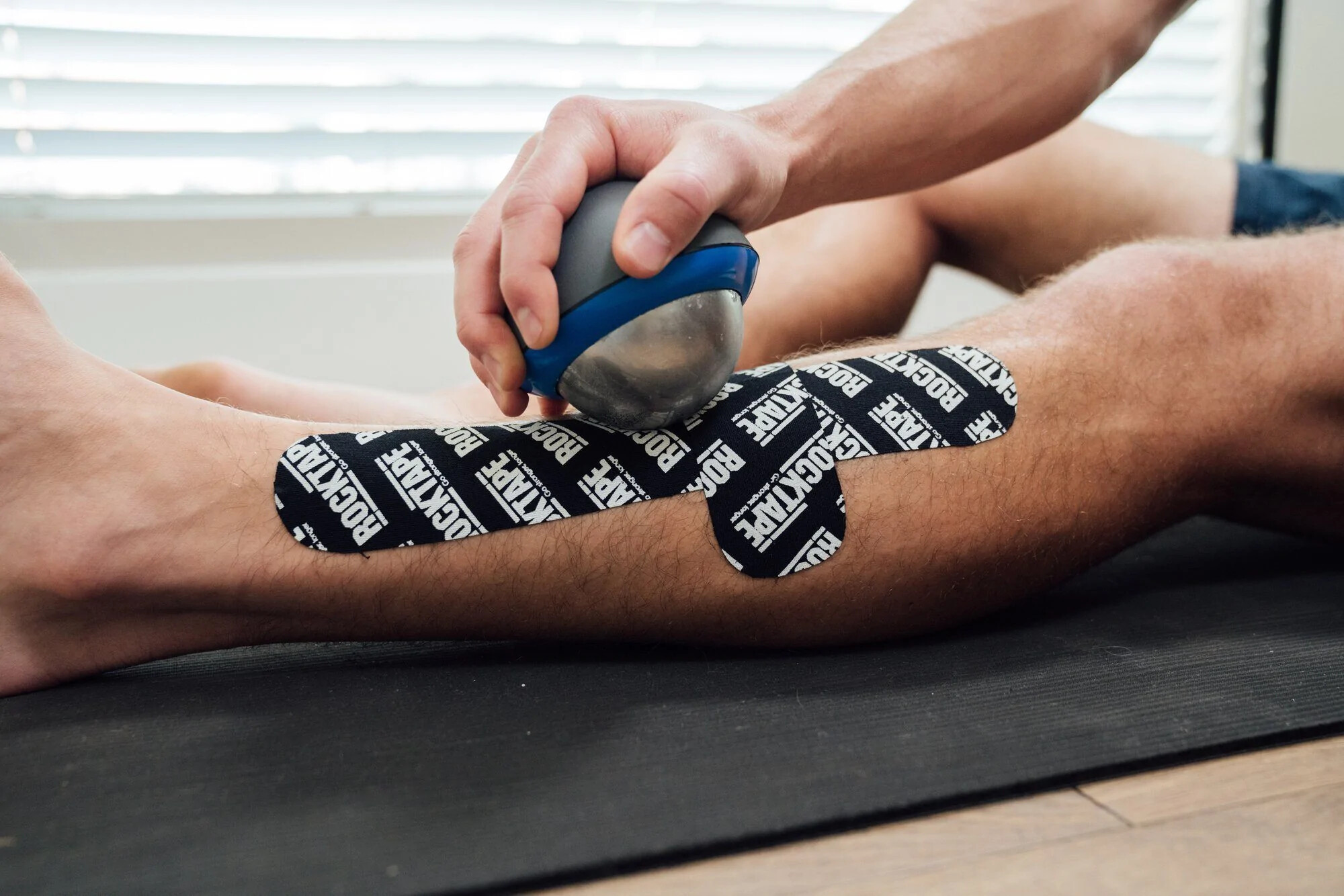
We asked two podiatrists to give us a rundown on the most common foot injuries for runners. Stephen M. Pribut, former president of the American Academy of Podiatric Sports Medicine, is a runner himself and has treated Olympic athletes. Lisa M. Schoene is a sports-medicine podiatrist and a certified athletic trainer who has been in practice for over 28 years.
Both Pribut and Schoene explained that most running-related foot injuries are a result of overuse, the wrong shoes, or an abrupt transition between different types of shoes. Natural foot shape and biomechanics also play a role. Here’s a helpful guide to figuring out why your feet hurt and how to jump-start your recovery. But of course, this doesn’t replace a visit to your doctor. If you’re dealing with serious or persistent pain, make an appointment with a physician.
Plantar Fasciitis
What it is:
The most common foot injury among runners is plantar fasciitis, an inflammation of a web of thick ligaments (the plantar fascia) that runs along the bottom of the foot and connects the heel bone to the bones of the forefoot. The plantar fascia support the arch of the foot and act as a spring for forward propulsion. The usual signs and symptoms include pain on the bottom of the heel, which could present as dull, sharp, or a burning ache, either directly below the calcaneus (heel bone) or toward the front of it. The pain typically comes on slowly and builds over multiple days or weeks. It can be strongest when you wake up in the morning or during a run.
Why you get it:
Overuse from an increase in training volume or intensity
Switching to a zero-drop shoe or a pair of shoes with less arch support
Tight Achilles tendons or calf muscles
Weight gain, which adds unaccustomed stress to the plantar fascia
How to fix it:
Reduce your training volume and intensity or, better yet, lay off running altogether for a few weeks. “If you keep running through your plantar fasciitis, it will inevitably get worse,” Schoene says, “but you can definitely cross-train.” In your day-to-day life, wear shoes with ample cushioning, arch support, and elevated heels. Seriously—whether they’re 12-millimeter drop running shoes, clogs, or kitten heels, they’ll alleviate the pressure on your plantar fascia. Avoid going barefoot.
When you return to running, ease back into it. If you had switched to different running shoes in the weeks before your pain started, it might be wise to switch back to something like what you had before. You’ll want a shoe with ample cushioning, a high drop, and good arch support. If the heel pain returns, go see a professional, because you might benefit from orthotics.
As for physical therapy, do 20 reps of towel crunches once or twice per day: place a towel on the floor, put your foot on top, and curl your toes to squeeze a fold of fabric. Stretch your calves from a step. Roll out your arches with a soft massage ball or a tennis ball (as opposed to a firmer lacrosse ball), and be extremely gentle around your heel. Roll out your lower legs with a foam roller or a massage stick to release tension in your calves and Achilles.
Achilles Tendonitis
What it is:
The Achilles tendon connects the calf muscle to the heel bone and is subject to repetitive stress. When the calf contracts, it pulls the heel up, and this movement allows us to push off our toes when we run, walk, or jump. Over time this can lead to inflammation, micro tears, and tendonitis. The tendonitis can be located at the insertion point where the Achilles connects to the heel bone, in the middle of the tendon, or higher up where the tendon attaches to the calf muscle. Achilles tendonitis typically involves pain or a dull ache behind the ankle, anywhere between the heel bone and the start of the calf muscle. This area can also swell and become red.
Why you get it:
Overuse from an increase in training volume or intensity
Hill workouts (running uphill puts more strain on the Achilles)
Change in running stride (heel strike to midfoot strike, or vice versa)
Worn-out shoes or switching to a flatter or less supportive shoe
Tight calf muscles
Hip and core weakness
How to fix it:
Shin Splints
What it is:
Shin splints is a catchall term for pain in the front of the shins, also known as medial tibial stress syndrome. The tibia, your shin bone, is the larger of the two bones in your lower leg, and this stress occurs in the midline of the bone and the surrounding tissue. This overuse injury is characterized by inflammation and possible micro tears in the posterior tibialis muscle (the key stabilizing muscle of the lower leg), as well as inflammation in the surrounding tissue and shinbone. Shin splints usually present as a throbbing, aching pain or soreness in the front or inside of the lower leg between the ankle and knee. Pain can last all day but is usually sharpest during each foot strike and right after exercise.
Why you get it:
Overuse from an increase in training volume or intensity
Poor foot mechanics, including overpronation (foot rolls inward), which puts repetitive tension and stress on the tibialis posterior muscle and tendon, which hold up the arch
Worn-out or unsupportive shoes that allow overpronation
Frequent running on hard surfaces, such as pavement or a track
How to fix it:
If your pain isn’t increasing, you can keep running, but you’ll recover much faster if you switch to low-impact cross-training until the pain and inflammation have subsided. If you continue to push through, it’s best to cut back on mileage and intensity, avoid hills, and stick to softer surfaces like trails. After runs, ice for 20 minutes on, 45 minutes off, repeating this sequence three times.
Posterior Tibial Tendonitis
What it is:
Posterior tibial tendonitis and shin splints are both inflammation injuries in the same muscle-tendon structure. While shin splints occur in the posterior tibialis muscle (the shin), posterior tibial tendonitis can occur in the tendon that wraps around the inside of the ankle and connects the muscle to the navicular bone at the midfoot. They can usually be traced to similar causes. If you’re dealing with tendonitis, you’ll feel pain, tenderness, and swelling around the inside of the ankle and sometimes down to the navicular bone.
Why you get it:
Overuse from an increase in training volume or intensity
Overpronation (foot rolls inward), which puts repetitive tension and stress on the posterior tibialis muscle and tendon
Worn-out or unsupportive shoes that allow overpronation
How to fix it:
See the above steps for shin splints. Wearing an ankle-compression sleeve can also help alleviate pain and prevent further injury when you return to running.
Peroneal Tendonitis
What it is:
Peroneal tendonitis is posterior tibial tendonitis’s evil twin—it’s an inflammatory injury of the peroneal tendons (there are two) on the outside of the ankle. The main function of these tendons is to stabilize the foot and the ankle and prevent them from rolling outward. Unlike the majority of the other injuries listed here, peroneal tendonitis can be acute (from a single injury, like rolling your ankle) or result from overuse. The usual signs and symptoms are pain, tenderness, and swelling around the outside of the ankle and possibly down to the outside of the midfoot. Pain can sometimes occur on the bottom of the foot, where it is often mistaken for plantar fasciitis.
Why you get it:
Overuse from an increase in training volume or intensity
Supination
Unsupportive or too soft shoes that allow supination
Chronic ankle instability
Inversion ankle sprain (foot inverts and ankle rolls to the outside)
Running on uneven terrain with roots, rocks, and other obstacles that stress the ankles
Lateral sports that involve quick changes of direction
Always running around a track in the same direction
How to fix it:
Reduce your training volume and intensity, and wear an ankle-compression sleeve for support when you run. Switch to shoes with firmer stability to prevent supination. Orthotics might help severe supination, and heel lifts can help relieve tension on the tendon. After runs, ice for 20 minutes on, 45 minutes off, and repeat this sequence three times. While you recover, avoid knobby trails and technical terrain where you risk rolling or straining the ankle.
Spend some time on a wobble board to improve your balance and ankle strength. Start with one to two minutes, going side to side, front to back, and in circles, to improve your balance and ankle strength. Build up to longer sessions of up to ten minutes. Stretch your calves and roll out your lower legs (avoid rolling over the ankle bone). Once the pain is gone, begin a strength-training routine to target the calves, the core, and the hips.
Metatarsal Capsulitis and Morton’s Neuroma
What they are:
Metatarsalgia is a general term to describe pain, tenderness, and inflammation in the ball of the foot. Usually, that pain comes from metatarsal capsulitis: swelling in the capsule surrounding the joint where your toe meets your foot, typically at the second toe. Morton’s neuroma, the enlargement of the nerves between your foot bones, feels similar, though the pain is closer to the outside of the foot, at the third and fourth toes.
Sharp, aching, or radiating pain in the ball of the foot is a common symptom of both metatarsalgia and Morton’s neuroma. The pain typically worsens during exercise or when you wear a firm or tight shoe. Pain or a sensation of numbness can also extend into the toes. You might also get the feeling that there’s a bunch in your sock or a pebble in your shoe under the ball of your foot.
Why you get them:
Overuse from an increase in training volume or intensity
Shoes that are too narrow or tight (including climbing or cycling shoes)
Low-cushion or minimalist shoes
Bunions (the curvature of the big toe can put more pressure on the second toe, creating a greater risk of capsulitis)
How to fix them:
If you’re dealing with capsulitis, lay off running altogether for a few weeks and visit your doctor. “You want to jump on capsulitis as quickly as you can, because the capsule around the joint can tear, and if that happens, the second toe can pop up into what we call hammer toe, which is very unstable and painful,” says Shoene. In daily life, wear a wider, high-cushion shoe with a rockered sole to remove some of the impact and stress to the metatarsal bones and joints.
For Morton’s neuroma, switching to a wider, high-cushioned shoe often brings immediate pain relief, since that decreases pressure on the nerve. If the pain is manageable and begins to fade, you can usually continue running and training with a wider shoe.
Stress Fracture
What it is:
A stress fracture is a hairline crack or group of cracks in a bone. These can happen in any bone, but for runners, they most commonly occur in the tibia (and are often associated with shin splints), metatarsals, and the calcaneus (heel bone). This is primarily an overuse injury but can also result from a single event, for example, if you’re used to running on softer trails and then complete a long road race in low-cushioned shoes. Typically, stress fractures present as an aching or burning pain, usually localized, anywhere along a bone.
Why you get it:
Overuse from an increase in training volume or intensity
Running frequently on hard surfaces or a track in a single direction
Running in low-cushioned shoes, such as track spikes or minimalist shoes
Eating disorders or energy imbalances (burning more calories than you’re consuming)
The female-athlete triad: an eating disorder, amenorrhea (the absence of a period), and osteoporosis
“It often starts as a physiological change at the cellular level, where you’ll have decreased production of new bone, increased absorption of bone, and an inflammatory component that can cause pain,” says Pribut. “As bone density decreases and the stress of running continues, it can become a physical crack.”
How to fix it:
Reduce training volume and intensity, and visit your doctor. Switch to a high-cushioned, rockered shoe, such as those made by Hoka, to reduce impact forces. Eat a well-balanced diet with adequate calcium and vitamin D. Build consolidation weeks—during which you back off your mileage—into your training plan to give your body a chance to recover and put the calcium where it needs to be.
“Runners have good pain tolerance and often ignore the issue,” says Pribut. “Listen to your body for warning signs. If your bones are achy, back off the training immediately, assess, and get to work on recovery.”
Mild stress fractures can heal in approximately three to six weeks if you’re diligent about recovery, but serious stress fractures can take six weeks to three months to heal and might require a walking cast. If you’re prone to stress fractures, consult a medical professional and ask for a bone-density scan.
Blisters and Black Toenails
What they are:
You probably don’t need help identifying blisters and blackened toenails (which form when blood vessels rupture beneath the nail). They can sneak up on you anytime, and, if you’re lucky, you’ll only notice once you take off your shoes. That said, they can certainly derail a run or two, with burning pain or dull achiness.
Why you get them:
Blisters result from prolonged friction, pressure, and moisture, all of which can be exacerbated by your shoe and sock choice.
Black toenails come from repetitive trauma to the nail bed, usually from the toe hitting the front or top of the inside of a shoe, which can be exacerbated by ill-fitting shoes and long downhills.
How to fix them:
Both blisters and black toenails generally resolve on their own. In the case that a blister ruptures or a toenail falls off, do your best to keep it clean and otherwise leave it alone.
To avoid blisters, keep your feet dry with moisture-wicking socks and breathable shoes. During long training runs or races, periodically change into fresh socks, and even shoes, if you can. If you’re getting a hot spot, dry your feet and try to put padding around the area.
Buy shoes that fit well. Shoes that are too tight cause excessive pressure, which leads to blisters and jams your toes against the top or front of the shoe. Shoes that are too loose allow for too much movement within the shoe, which causes blisters and black toenails, especially on the downhill. If you just bought new shoes, break them in around the house, office, or on shorter runs before using them for a long run or race.
by Outside
Login to leave a comment
Runner's Guide To Vitamin D
It's is easy to assume you get enough vitamin D naturally-you eat chocolate ice cream like a champ and frolic in the mountains, spending significant time in the sunshine. But then a routine blood test shows you have low vitamin D.
You turn to Google and realize Rocky Road has zero percent of the recommended daily value of vitamin D. And dermatologist-approved sun protection like long-sleeved shirts and SPF-50 sunscreen limits your chance of absorbing it from sun exposure.
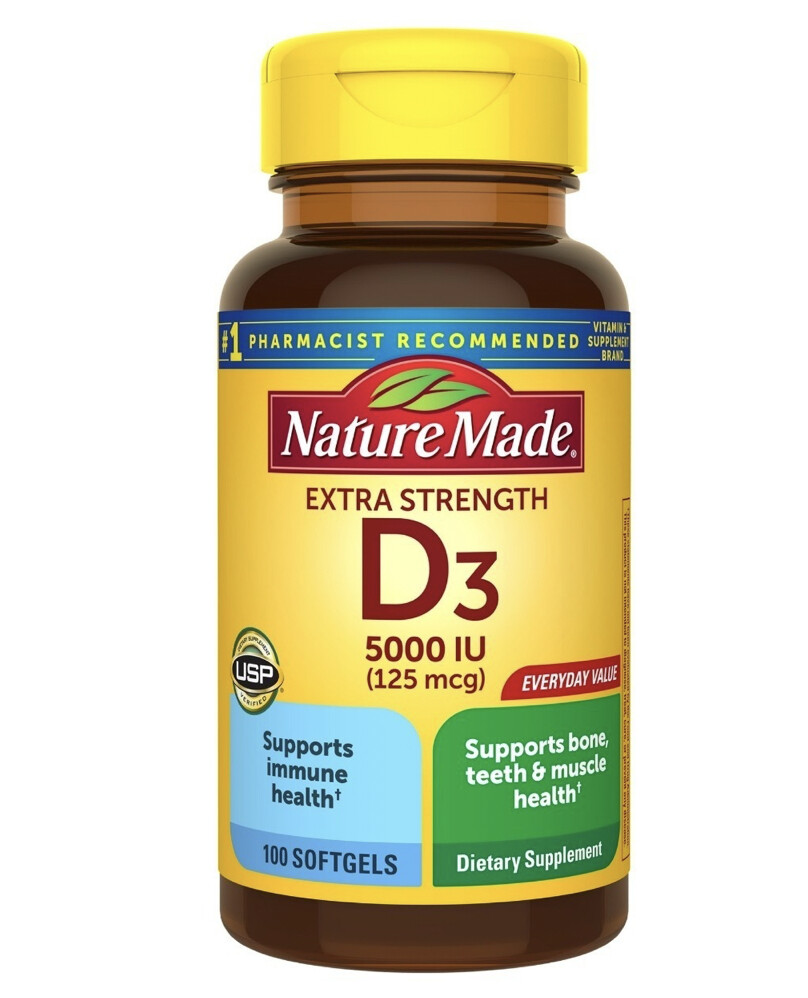
It's not unimportant. Research shows that vitamin D deficiency plays a role in stress injuries, and may contribute to decreased performance and impaired immune function.
The Science of Vitamin D
Vitamin D is a fat-soluble vitamin that can be obtained from food, supplements and sun exposure. The liver and kidneys help convert the vitamin to its active form, which is most known for its regulation of calcium and promotion of bone mineralization. However, vitamin D also influences cell growth and neuromuscular and immune function. It could even have some influence on cancer rates.
Medical experts differ in their recommendations for adequate vitamin D levels. The U.S. Endocrine Society considers insufficiency to be a blood level less than 30 ng/mL, while many sports-medicine doctors recommend that athletes have levels above 50 ng/mL. If you are concerned about your vitamin D level, ask your doctor to perform a blood test.
So how can Vitamin D aid in our running success?Bone Strength
As trail runners, we demand a lot from our bones. On a downhill, impact forces can increase by over 50 percent. Multiply that by the many miles of a long training run or race and you can understand the stress facing our feet, shins and femurs.
Several scientific studies have linked sub-par vitamin D levels and bone-stress injuries. One study published by the American College of Foot and Ankle Surgeons followed 53 patients with stress fractures from 2011 through 2014 and found that 83 percent of these patients had vitamin D levels below 40 ng/mL and 53 percent had levels below 30 ng/mL.
Athletic Performance
We all strive to run faster (or to have better adventures). Vitamin D could play a role in improving performance, though its adventure-boosting power is subject to debate. While vitamin D deficiency can cause muscle weakness and pain, experts in the field continue to debate the role of supplementation and athletic performance in individuals with levels greater than 30 ng/mL.Immune Function
While a well-timed snot rocket can be a source of laughs on a group training run, it is best when your runny nose is less active than your running legs. Several studies have found a link between vitamin D deficiency and autoimmune disorders such as multiple sclerosis, but the association between the vitamin and upper-respiratory infections is still equivocal.
The bottom line? Vitamin D clearly prevents bone-stress injuries. According to some debated studies (and anecdotes from runners), it could influence direct aspects of athletic performance as well. Trail runners should focus on a lifestyle that promotes healthy vitamin D levels for strong bones. And, if experts reach a consensus on the other benefits, it will be a nice bonus.
The recommended dietary allowance set by the Institute of Medicine (IOM) for vitamin D is 600 IU (15 micrograms) per day for individuals younger than 70 years old and 800 IU (20 micrograms) per day for individuals 70 and older. There is evidence that 600 to 800 IU per day may not be sufficient for optimal bone health in the athlete population. Some experts recommend that athletes obtain 2,000 to 5,000 IU a day from all vitamin D sources.
The IOM states that the upper limit of vitamin D intake is 4,000 IU (100 micrograms) per day, while the Endocrine Society states that the upper limit is 10,000 IU (250 micrograms) per day.
Chocolate Milk and Other Food Sources
There are very few food sources that contain natural vitamin D. Fatty fish such as salmon, swordfish, trout and mackerel contain it, as do egg yolks and mushrooms. Those on a budget may want to consider canned tuna.
In the American diet, the largest source of vitamin D comes from fortified foods like milk (including soy and almond milk), orange juice and many breakfast cereals.
Sun Exposure
Exposing your skin to the sun's UVB rays is considered one of the best ways to obtain natural vitamin D. It is generally agreed that 15 minutes of direct sun exposure for lighter-skinned individuals and 30 minutes for darker-skinned individuals can produce 1,000 IU of vitamin D.
However, several variables influence the amount of UVB rays that reach our skin, including the season, time of day, cloud cover and location.
Supplements
Vitamin D supplements come in two forms, vitamin D2 (ergocalciferol) and vitamin D3 (cholecalciferol). Research has shown that D3 is the more potent form and is better absorbed and utilized than D2. Supplements come in a variety of forms, including pills, liquid drops and chocolate chews.
Use caution with supplements, as vitamin D toxicity can cause decreased appetite, nausea, vomiting and frequent urination.
by Trail Runner Magazine
Login to leave a comment
Top health issues that can affect your running achievements
Running is a great way to stay healthy and get in shape, but it’s important to be aware of the health issues that can affect your running performance. In this article, we will discuss some of the top health problems that can impact your running ability. We’ll also provide tips on how to deal with these issues and continue running strong. So whether you’re a beginner or an experienced runner, read on for valuable information about staying healthy and performing at your best!
Injuries
The first health issue we’ll discuss is injuries. Running can put a lot of stress on your body, and injuries are common among runners of all levels. The best way to deal with an injury is to listen to your body and rest when you need to. Don’t try to push through the pain, as this can often make the injury worse. If you’re having persistent pain or discomfort, consult with a doctor or physical therapist to find out the best course of treatment.

You can also purchase joint or muscle support products to help prevent injuries. For example, knee sleeves or compression socks can help support your joints and muscles while you run. Wearing proper shoes is also key in preventing injuries. Make sure your shoes are comfortable and offer adequate support for your feet.
Mental Health Issues

Finally, mental health issues can also affect runners. Depression, anxiety, and stress can all lead to a decrease in running performance. If you’re struggling with any type of mental health issue, talk to your doctor or a therapist. Namely, professionals from www.mens-revival.com say that depression can also be a sign of low testosterone levels. Other symptoms could include fatigue, loss of muscle mass, and more. A doctor can help you develop a plan to deal with your symptoms and get back on track. Even more so, there are many running groups and forums that can provide support and guidance. To find a group near you, check out your local running store or search online.
Dehydration
Another health concern for runners is dehydration. When you run, you sweat and lose fluids, which can lead to dehydration if you don’t replace them. Symptoms of dehydration include thirst, fatigue, lightheadedness, and dark urine. It’s important to drink plenty of fluids before, during, and after your run to stay hydrated. Water is the best option for hydrating before and after a run. During a run, you can also drink sports drinks to replenish electrolytes and help your body absorb fluids more quickly.
Heat Exhaustion
Running in hot weather can lead to heat exhaustion, which is a serious condition that occurs when your body overheats. Symptoms of heat exhaustion include headache, nausea, dizziness, and fatigue. If you start to experience these symptoms, it’s important to stop running and cool down as soon as possible. Drink fluids, remove any excess clothing, and find a cool place to rest. If your symptoms don’t improve within 30 minutes, seek medical attention.
Heart Problems
There are also many different types of heart conditions that can impact runners. If you have any type of heart condition, it’s important to talk to your doctor before starting a running program. Some heart conditions may require medication or other treatments, so it’s important to get the all-clear from your doctor before hitting the road.
For example, runners with high blood pressure should be sure to monitor their condition and take breaks often to avoid overexertion. Those with heart arrhythmias may need to limit their running intensity or distance. And runners with coronary artery disease should be sure to run at a moderate pace and not push themselves too hard.
Stress Fractures
A stress fracture is a small crack in a bone that occurs from overuse. Stress fractures are common among runners, especially those who are just starting out or increasing their mileage too quickly. Symptoms of a stress fracture include pain, swelling, and tenderness at the site of the injury. If you think you have a stress fracture, it’s important to see a doctor right away. Stress fractures can often be treated with rest and ice. In some cases, you may need to wear a splint or cast. If the stress fracture is severe, you may need surgery.
Listen To Your Body
If you’re dealing with any type of health issue, it’s important to listen to your body and take things at a slow pace. Don’t be afraid to take breaks or walk when you need to. And always consult with a doctor before starting or making changes to your running program. You can receive valuable guidance and ensure that you’re doing everything possible to stay healthy and prevent injuries.
These are just a few of the top health problems that can affect runners. By being aware of these issues and taking steps to prevent them, you’ll be able to stay healthy and run your best!
by Colorado Runner
Login to leave a comment
Why you should be aware of RED-S, inadequate fuel intake can lead to relative energy deficiency in sport, and can affect both women and men, elite and recreational runners
In recent years, professional athletes have started to open up about the insidious condition known as relative energy deficiency in sport (RED-S). But the condition doesn’t only affect elites. So how does a recreational runner know if they are displaying symptoms? Recent studies have shown that training with a regular caloric deficit of as little as 300 calories a day can lead to RED-S.
Low energy availability (which may lead to a diagnosis of RED-S) is a mismatch between an athlete’s energy intake, or diet, and the energy expended during exercise, leaving inadequate energy to go toward health and athletic performance.

In short, it means they are not taking in enough nutrition to adequately fuel their training, and over time is likely to cause disruption to metabolic rate, menstrual function (in females), bone health, immunity, muscle growth and repair and cardiovascular health. It is not limited to female athletes, even though certain aspects of the condition (such as disordered eating, where it is a factor) may be associated in the public’s mind with women more than with men.
While RED-S has many similarities to overtraining or overreaching (terms runners may be more familiar with), according to overtraining syndrome expert Alexandra Coates, RED-S builds upon the model those diagnoses also fit into. Coates suggests many other physiological symptoms can occur as a result of RED-S.

The lasting impact of RED-S can be severe and detrimental to many aspects of a runner’s life, so knowing what to be aware of and when to see a physician are important.
For women, loss of their period (amenorrhea) is an immediate signal to see a doctor and have bloodwork done. Coates suggests other symptoms to watch out for are training inconsistencies, extremely low energy, and stress fractures or bone injuries.
One possibly surprising symptom is unexpected weight gain during a training cycle. As Coates explains, when an athlete is continuously living in a caloric deficit, metabolic disruptions can occur and the body shifts into starvation mode. Despite eating less, runners may find themselves gaining weight. Without knowledge of RED-S syndrome and regular checkups, even runners who consider themselves quite average in ability may unknowingly set themselves up for disordered eating–something that many female endurance athletes (including ultrarunners Lucy Bartholomew and Amelia Boone and Olympic marathon bronze medallist Molly Seidel, among others) have shared their experiences with via social media in recent years.
When increasing their training load, athletes should make sure to increase their caloric intake. Instead of operating from the mentality that leaner is better, runners need to remember that getting stronger requires more fuel. Trying to train in a continuous state of low energy availability will invariably lead to disappointment, loss of motivation, and potentially also to physiological and neurological damage.
RED-S, overreaching, and overtraining are all avoidable, and by maintaining a diverse, nutritious and non-restrictive diet (including a healthy amount of carbohydrate) and staying on top of regular physical checkups with a physician, runners can stay in the green, healthy zone.
by Keeley Milne
Login to leave a comment
The 8 most common running injuries and why they happen
If you run consistently for long enough, there’s a good chance you’ll experience a running-related injury, and there’s also a good chance it’ll be one of these eight common problems. Whether it’s in your knees, legs, hips or feet, running injuries can be frustrating to deal with. Understanding why they happen and knowing what to look out for is the first step in preventing small niggles from becoming big problems.
Ankle sprains
While less common for road runners, those of you who like to put in their miles on the trails are at a higher risk for ankle injuries. An ankle sprain happens when you land on the outer part of your foot and roll your ankle over. Ankle sprains range in severity and usually result in symptoms like discolouration, pain, swelling, bruising and a limited range of motion.
The trouble is, once you’ve rolled your ankle once, you become more prone to rolling it again. Once you’ve given your ankle plenty of time to heal, it will be very important to strengthen the ligaments around your ankle to prevent spraining it again. A physiotherapist will be able to provide you with an appropriate strength training plan to prevent future injuries.
Hamstring injuries
Your hamstrings play an important role in your running stride, but if they are weak, tight or tired, they’ll be more prone to injuries. Many distance runners end up with hamstring strains that appear slowly over time, caused by small, repetitive tears in the muscle tissue.
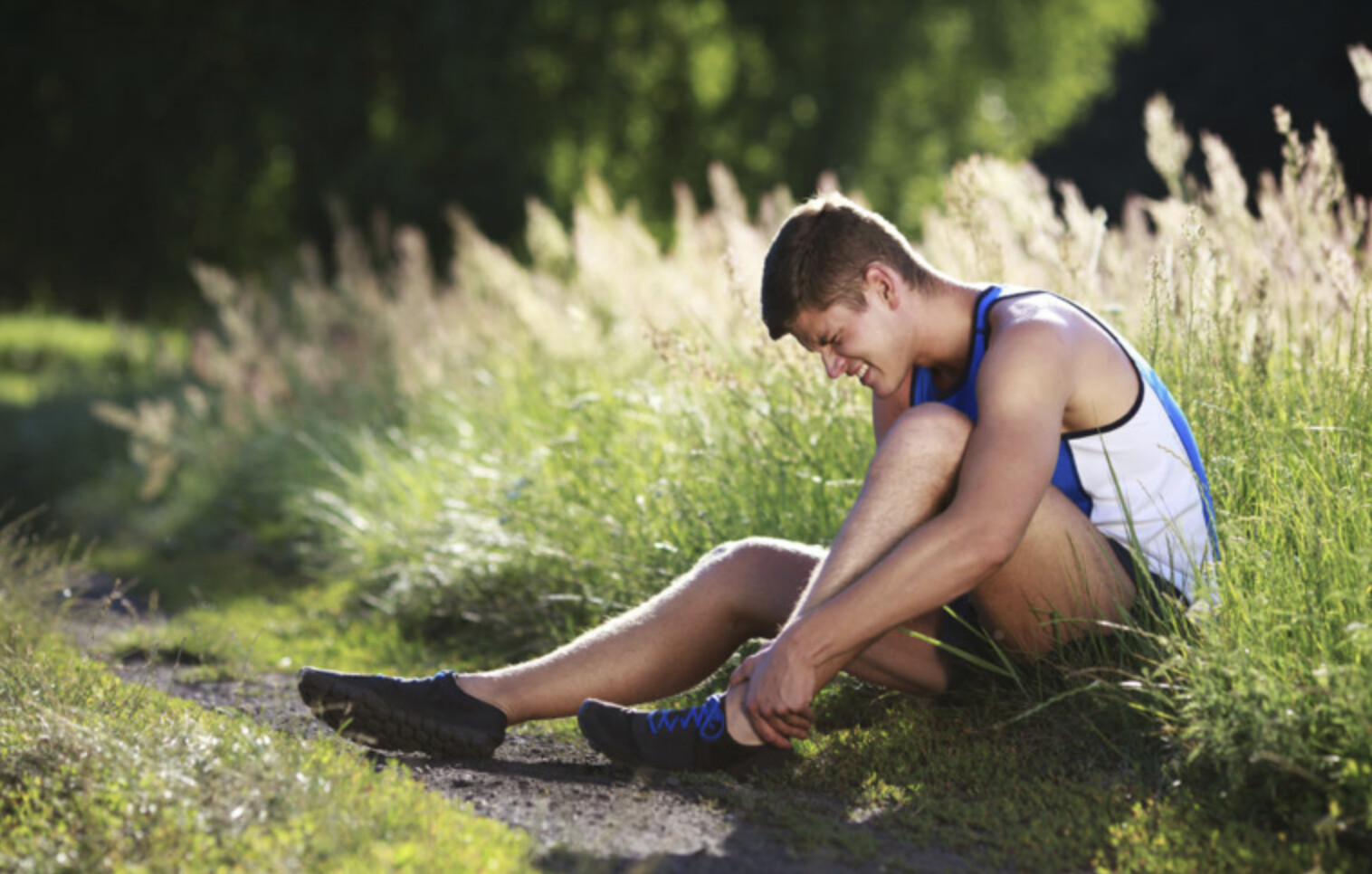
Symptoms of a hamstring strain could include a dull pan in the upper part of the back of your leg, tenderness in the back of your leg or weakness or stiffness in your hamstring. Most hamstring injuries can be fixed with rest and a strength training program.
IT band syndrome
Your iliotibial (IT) band runs from your hip to your knee. Often mistaken for a muscle, your IT band is actually made up of connective tissue that stabilizes your knee when you’re walking or running. Unlike a muscle, the IT band can’t be stretched or strengthened, but you can stretch and strengthen the muscles around it.
IT band syndrome happens when your IT band rubs against your leg bone, creating friction. In many cases, this “tightness” of the IT band is caused by weak glute muscles, abdominals or hips. Symptoms usually include a sharp pain on the outside of your leg, often just above the knee, that typically gets worse when you bend your knee.
In most cases, treatment and prevention of IT band syndrome include strengthening your glutes, abdominals and hips to take the train off of your IT band.
Stress fractures
A stress fracture is a small, hairline crack that forms in your bone from repetitive stress or impact. Common places runners may experience a stress fracture are on the top of the foot, the heel or in the lower leg. The pain from this injury is often barely noticeable at first, but progresses over time to the point that you can even feel it at rest. You also may notice swelling, bruising or tenderness in the affected area.
If you think you have a stress fracture, you’ll need to see a doctor right away, who can use an x-ray to diagnose the injury. You will have to avoid putting any pressure on the injured area for a while, since it generally takes six to eight weeks for a stress fracture to heal.
Plantar fasciitis
Plantar fasciitis is the inflammation of the thick layer of tissue on the bottom of your foot, called the plantar fascia. This tissue is heavily involved when you push off from the ground as you run, and can easily be over-stressed when you increase your mileage too quickly. Weak or tight calves can also put more stress on your plantar fascia.
Symptoms of plantar fasciitis typically include pain under your midfoot or heal (that often comes on gradually), a burning sensation on the bottom of your foot, pain that’s worse in the morning or pain after prolonged activity.
Plantar fasciitis can be difficult to get rid of, and often requires a combination of rest, massage, strength training for your lower legs and a gradual return to running is the best way to fix the problem and prevent it in the future.
Achilles tendonitis
Your Achilles is the tendon that connects your calf muscle to your heal, and can often become inflamed from repetitive activities like running. In most cases, Achilles tendonitis will flare up after you’ve increased your running volume or intensity.
It’s important to treat your Achilles right away when you begin to feel pain, because it increases your risk for rupturing your Achilles tendon, which requires surgery and months of recovery to fix. Common symptoms of Achilles tendonitis include a dull pain above your heel, swelling along the tendon, a warm feeling where your Achilles tendon is located or a limited range of motion when you try to flex your foot toward your shin.
Achilles tendonitis can be difficult to get rid of, so make sure you book an appointment with a physiotherapist to help you solve the problem.
Shin splints
Shin splints are one of the most common injuries for beginner runners, or for people who are returning to running after a layoff. Common symptoms include a dull pain on the front or inner part of your shin bone, mild swelling or tenderness in your shins and pain that gets worse as you run.
In most cases, shin splints will go away with adequate rest. To prevent them from happening, make sure you strengthen your lower legs and feet, and be careful to increase your mileage gradually to give your body time to adapt to the increased stress.
Runner’s knee
We’ve left this one to last because it is arguably the most common issue faced by runners. In fact, some studies suggest up to 50 per cent of all running injuries happen in the knees. Runner’s knee, or patellofemoral pain syndrome, generally refers to pain felt in the front of your knee or around your kneecap.
Symptoms of runner’s knee often include a dull pain in one or both knees that ranges from mild to very painful, pain that gets worse with prolonged activity or prolonged sitting and pain that worsens when doing other activities like walking up stairs, squatting or jumping.
Weakness in your hips and the muscles around your knees can put you at a greater risk for runner’s knee, so strengthening those areas can help get rid of the injury and prevent it in the future. Since knee pain can be caused by a variety of factors, you should see a physiotherapist or sports doctor to have it diagnosed, and to rule out other possible conditions.
by Running Magazine
Login to leave a comment
Is the sound of your footstrike important?
A common piece of advice given to runners is to land softly or quietly with each step to avoid injuries and improve stride efficiency. While this sounds like a reasonable suggestion, new research has determined that the softness of our footstrike may not be as important as we once thought.
The hypothesis
The idea behind trying to land softer when you run is that by doing so, you decrease the landing forces acting on your joints and muscles, thereby reducing your risk for impact-related running injuries, like stress fractures. At the same time, focusing on landing softly is thought to promote a smoother, more efficient stride, which could reduce your risk for overuse injuries like runner’s knee and other common problems that affect runners.

This seemed to be confirmed by a 2016 Harvard study, which found female runners who had a softer landing when they ran (regardless of size or weight) appeared to experience lower rates of injuries. This led many coaches and physiotherapists to encourage runners to listen to the sound of their footstrike while out for a run. A loud footstrike meant you were landing hard, thereby putting you at a greater risk for injuries, while a quiet footstrike meant the opposite.
The study
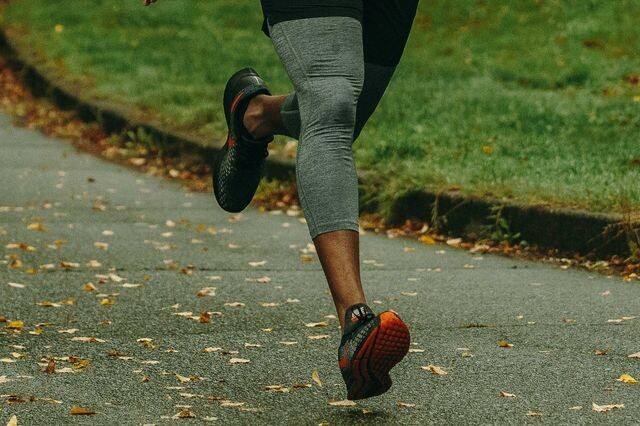
The goal of this study, published in the Journal of Athletic Training, was to examine the relationship between impact sound and loading rates. The researchers had 30 participants (15 women and 15 men) complete running trials with three different footstrike techniques (rearfoot strike, midfoot strike and forefoot strike) in a gait analysis laboratory. They measured the impact sound using a shotgun microphone, and analyzed the peak sound amplitude, median frequency and sound duration.
They found that a midfoot strike produced the loudest sound, followed by a forefoot strike. Interestingly, the rearfoot striking technique appeared to produce the softest sound. More importantly, the researchers found no significant relationship between footstrike volume and loading rates.
“The results suggest that impact-sound characteristics may be used to differentiate foot-strike patterns in runners,” the researchers concluded. “However, these did not relate to lower limb kinetics. Therefore, clinicians should not solely rely on impact sound to infer impact loading.”
What does this mean for runners?
Focusing on how loud your foot is when it hits the ground may not be as beneficial at preventing injuries as you want it to be. Injuries are complicated, and it’s often a multitude of factors that lead to an injury, not just one specific issue. Most experts agree that running injuries are more often a result of doing too much too soon, not allowing your body to recover properly between sessions or having some strength imbalances that cause the overuse of specific muscles. More often than not, it’s a combination of two or more of those issues.
That’s not to say that there’s no benefit to improving your gait or stride. If you’re more efficient with every step, you’ll be able to run faster with fewer injuries, which, of course, is the goal of most runners. If you want to improve your stride, you’re better off speaking with a running-specific physiotherapist or other sports therapist who can identify the areas you need to improve and give you drills, stretches and exercises to get you there. More often than not, actively trying to change your stride mid-run is frustrating and ineffective, and can even lead to injuries.
So whether you glide across the roads like a mosquito on water or your feet hit the pavement like you’re a part of “Stomp, the Musical”, it may not matter. Regardless of what level of sound your feet make, if you’re experiencing a high rate of injuries, it’s time to speak with a sports therapist to get to the root of the problem so you can run happy and healthy without interruption.
by Brittany Hambleton
Login to leave a comment
Can undiagnosed celiac disease put you at risk for bone stress injuries?
Bone stress injuries are common among runners, particularly females. There are many possible reasons they might occur, but recent research has determined that undiagnosed celiac disease could put affected runners at a higher risk for these types of injuries. While the portion of the population with celiac disease remains very small, it may be an important consideration for some runners when evaluating their injury risk.
Prevalence of celiac disease

The study, which was published in the Clinical Journal of Sport Medicine, tested 85 runners for celiac disease using Anti-tissue transglutaminase antibody (TTG) testing. Two participants already had pre-existing celiac disease and three more were confirmed to have celiac disease following an endoscopic biopsy.
In total, approximately five per cent of the group were confirmed to have celiac disease, which is five per cent higher than Canadian population estimates, according to the Canadian Digestive Health Foundation. It’s worth noting, however, that experts believe about 90 per cent of cases go undiagnosed.

There was one thing every runner in this study had in common: they all had a bone stress injury. When left untreated, celiac disease can damage the small intestine, which leads to poor absorption of vitamins and minerals that are important for bone health, like calcium and vitamin D. This, ultimately, could put someone at an increased risk for injuries like stress fractures.
Of course, it’s difficult to definitively say that the patients with celiac disease were at greater risk because of their condition, but considering that this population had a five times greater prevalence of celiac disease than the general population, it is possible that there could be a correlation. This lead the researchers to conclude that “anti-tissue transglutaminase antibody screening for CD should be considered in all patients presenting with BSIs (bone stress injuries).”
What should runners do?
If you’re generally healthy and aren’t presenting with any of the symptoms of celiac disease (like diarrhea, fatigue, weight loss, bloating and anemia), it’s unlikely you have the condition. If you do frequently struggle with one or more of those symptoms, it’s worth looking into, not only to help prevent stress fractures, but several other health problems as well.
by Brittany Hambleton
Login to leave a comment
Six nutrients you might be missing in your diet
Eating properly in order to run well is more than just simply trying to consume enough calories. It also involves eating a variety of the right foods to ensure you’re meeting your daily requirements of vitamins and minerals.
Running can deplete your stores of important nutrients and put you at risk for deficiencies, but you can help yourself out by knowing which nutrients to be mindful of and how to know if you’re not getting enough.
This is one of the most common deficiencies among runners, particularly females. Since iron is necessary for transporting oxygen to your muscles and plays an important role in energy production, a deficiency can wreak havoc on your ability to run.
1.- Iron

The most common signs of an iron deficiency are unexplained fatigue, weakness, pale skin, shortness of breath, heart palpitations, cold hands and feet, brittle nails and hair loss.
Foods that are high in iron include red meat, liver, dark leafy green vegetables, beans, nuts, dried fruit and fortified cereals. Vitamin C aids in your absorption of iron, so eating iron-rich foods with good sources of vitamin C, like citrus fruits or bell peppers, can also improve your nutrient status. Many runners also choose to take an iron supplement, however you should talk to your doctor and have bloodwork done before starting a supplementation protocol, since taking too much iron can have dangerous consequences.
2.- Magnesium
Magnesium plays an important role in bone health and helps convert the food you eat into energy. Muscle spasms and cramps are common signs of magnesium deficiency, as well as irregular heart rhythms, nausea and vomiting and dizziness and confusion.
Good sources of magnesium include whole grains, dark leafy green vegetables, low-fat milk, yogurt, dried beans and legumes and nuts.
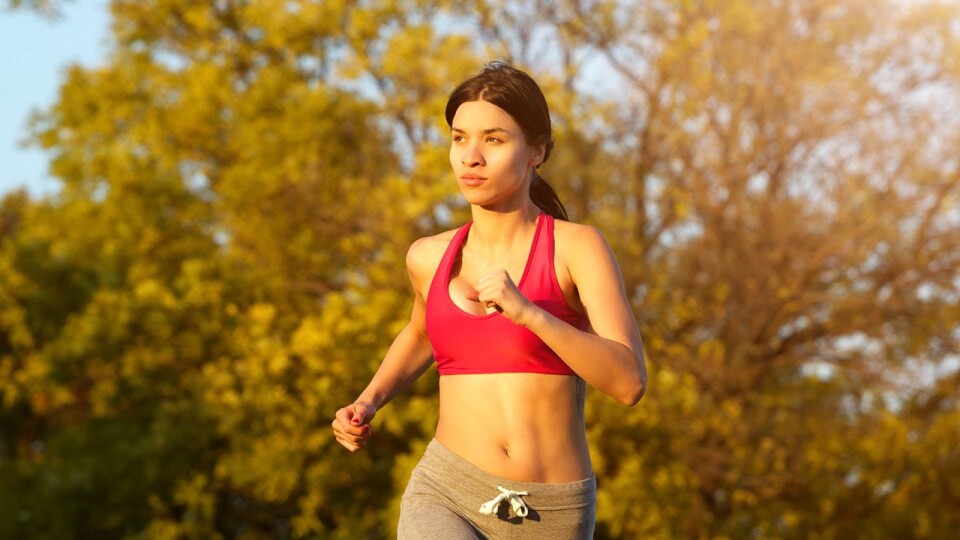
3.- Vitamin D
Vitamin D regulates the amount of calcium in your body, which makes it very important for your bone health. Recent research has also found that it plays a crucial role in the health and function of your immune system. Symptoms of a deficiency include muscle weakness, pain, fatigue and low mood or depression.
Your body synthesizes vitamin D when your skin comes in contact with sunlight, however most Canadian runners don’t get adequate sunshine exposure because of our long winters and use of sunscreen in the summer. There are some food sources of vitamin D, such as oily fish (like salmon or sardines), red meat, liver, egg yolks and fortified cereals, however many nutrition experts recommend taking a vitamin D supplement to ensure you meet your daily requirements.
4.- Calcium
Calcium is important for maintaining strong bones and preventing bone stress injuries, but it’s also a key nutrient for ensuring proper muscles contractions and the healthy functioning of your heart. Muscle spasms or cramps, low mood, weak or brittle nails, confusion or memory loss and frequent stress fractures.
Of course, dairy products like milk and cheese are a good source of calcium, but green leafy vegetables and fortified foods (like non-dairy milk alternatives and bread made with fortified flour) are good sources as well.
5.- Vitamin B12
Vitamin B12 maintains the health of your nerves and blood cells, and also prevents megoblastic anemia, which makes you feel very tired and weak. Other symptoms of vitamin B12 deficiency include pale skin, pins and needles, disturbed vision, irritability and low mood.
Good food sources of vitamin B12 include meat, milk, fish, eggs fish and cheese, as well as some fortified breakfast cerials. Runners who follow a vegan diet are more likely to be deficient in vitamin B12, so they should speak with a dietitian about taking a vitamin B12 supplement.
6.- Zinc
Zinc is important for maintaining proper immune function and helps your body process the fats, carbohydrates and proteins from your diet. Symptoms of zinc deficiency may include hair loss, a compromised immune system and loss of appetite.
Oysters, red meat and poultry are excellent sources of zinc, and whole grains, milk products and fortified cereals are also good sources of the mineral. Baked beans, chickpeas, and nuts (such as cashews and almonds) also contain some zinc.
by Brittany Hambleton
Login to leave a comment
What Happens When You Run Every Day
Running every day may have some health benefits. Studies show that running just 5 to 10 minutes each day at a moderate pace may help reduce your risk of death from heart attacks, strokes, and other common diseases. But the same research also shows that these benefits top off at 4.5 hours a week, meaning there’s no need to run for hours each day. Running is a high-impact exercise and overtraining can lead to injuries such as stress fractures and shin splints.
How many days it’s safe for you to run each week depends on your goals and physical fitness levels. Scheduling days for cross training, strength training, and rest should be part of your training plan. They may make you a stronger and healthier runner overall.
What are the benefits of running every day?
Running every day may have benefits for your health. Studies show that the benefits of running for just 5 to 10 minutes at a moderate pace (6.0 miles per hour) each day may include:

reduced risk of death from heart attack or stroke
reduced risk of cardiovascular disease
lower risk of developing cancer
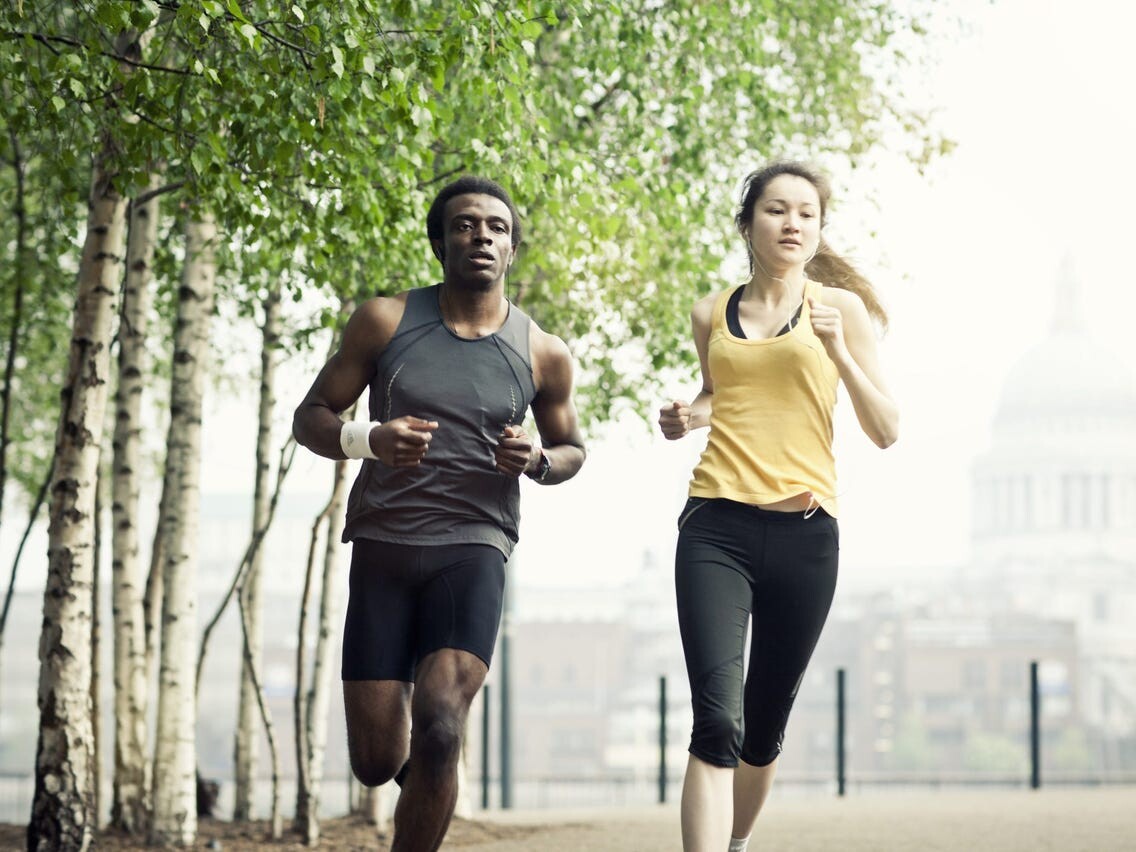
lower risk of developing neurological diseases like Alzheimer’s and Parkinson’s diseases
While these benefits can be achieved by a minimal amount of daily running, a group of Dutch researchers recommends running 2.5 hours per week, or 30 minutes, five days a week to enjoy maximum longevity benefits.
Other benefits of running may include improved sleep and mood. Researchers in one study observed a group of healthy adolescents who ran for 30 minutes at a moderate-intensity pace every morning for three weeks. Their sleep, mood, and concentration ability during the day tested better than a control group of non-runners.
You may be able to experience these same benefits from 30 minutes of other daily activity, too, such as walking, cycling, swimming, or yoga.
To avoid an overuse injury:
Make sure you have appropriate running shoes and change out your shoes often.
Gradually increase the number of miles you run each week.
Mix up running days with cross training, such as cycling or swimming.
Warm up before you run and stretch after.
Run with proper form.
If you experience a running injury, stop training and see your doctor for a recovery plan. RICE (rest, ice, compression, elevation) may help with your recovery.
Do you need other exercise?
Cross training, or training with another form of exercise other than running, may be beneficial to runners. Some potential benefits include:
reduces risk of injury
engages different muscle groups
increases flexibility and core strength
aids injury recovery without compromising fitness level
offers variety
If running is your main form of exercise, consider cross training one to two times a week with cycling, swimming, yoga, or Pilates to experience the above benefits. You should consider adding anaerobic activities such as strength training and weights into your routine one to two times a week.
Supplies
The only items you need to start running every day include a pair or two of running shoes and socks. You may want to alternate between two pairs of shoes in case one gets wet or muddy.
You’ll also need sweat-resistant running clothes like shorts and T-shirts. If you run at night or in the early morning, get a reflective vest or light for safety.
Weekly plan
How often you run each week should depend on your goals and physical fitness level. For example, if you’re a beginner, you don’t need to start out running every day because you’re at a higher risk of burnout or injury. Instead, start by running every other day for 20–30 minutes. Consider trying a couch-to-5K program to start.
Fitting in enough time to run daily or several times a week can be a challenge. Try to run first thing in the morning before your day gets busy. Or, run during your lunch break. Look for run clubs and running meetups in your area for support and motivation. Do short runs during the week, and save your long runs for the weekends when you have more time.
If you’re an experienced runner and plan to run every day, it’s important to schedule your weekly training with plenty of variety. For example, one day a week you could do a long run at your goal race pace. You could spend another day on speed work. One to two days could be short, recovery runs. The other days can be spent doing a hill workout, where you run up an incline repetitively to build up strength in your legs. You also can run or jog in a pool for an active recovery.
Safety
Running safety
Wear bright colors.
Look for popular or well-lit trails or running paths.
Let someone know where you are.
Be sure to stick to well-lit, populated areas when you run. Look for popular running paths and trails in your area. Wear bright colors and a reflective vest if you run at night or early in the morning. You can also run laps on a track or do your speed work there. Watch out for branches and sticks when running on trails. They’re a tripping hazard and can cause an injury.
Stretching
You don’t always need to stretch before you run. You can walk the first few minutes or jog at a slower pace to warm up your muscles. After your run, always stretch out.
Bottom line
Running just a few minutes each day may benefit your health. Research shows it may even extend your life. But do you need to run every day of the week to benefit? No.
Remember, even elite runners stay injury free by scheduling in rest days and cross training days. Try lower-impact activities like swimming and cycling on cross- training days to recover and give your hard-working running muscles a break.
If you aren’t sure how often to exercise or whether it’s safe for you to start running, talk to your doctor. They can recommend a physical fitness program that’s appropriate for your age and fitness level.
by Healthline
Login to leave a comment
The Science Of Why Consistency Creates Fitness (Even 10 Minutes At A Time)
There are 4 physiological reasons why consistent runs have an oversized effect on long-term growth. On a tough day, even 10 or 20 minutes can be plenty to spur progress.
In 2006, a few months after quitting football in college, I went for the first endurance run of my adult life. I had big dreams! During that downtime between sports, I read training books and message boards, planning my next athletic steps. It was like “The Decision” by LeBron James when he announced he was taking his talents to South Beach–I was going to take whatever talents I had to running.
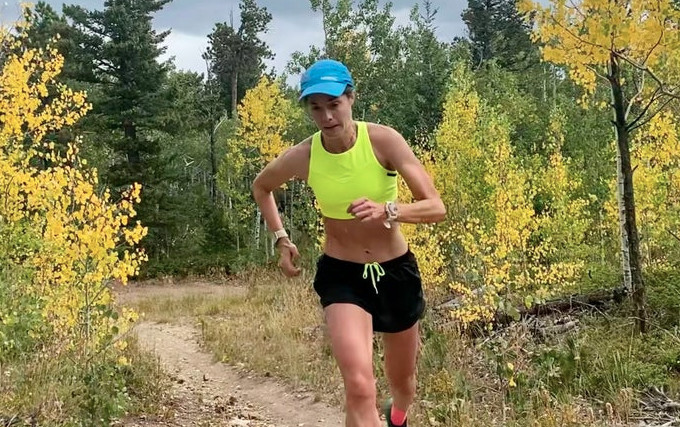
Maybe I’d walk onto the track team. Maybe I’d win some races! Running watched my announcement on ESPN, and as I put on my old basketball shorts and laced up my new Nikes, it responded like only running can:
“Go screw yourself. This is hard.”
I got a few minutes up the driveway before I sputtered to a stop. My calves were sore for days. Those dreams were going to need to be on a delayed fuse.
But something started on that run, deep in my physiology. The next one a few days later was a bit easier. It was still impossible and terrible, but at least I could walk the next day. Mile or two by mile or two, I got a bit stronger and a bit faster. In those training books, I had read about weekly miles and workouts and all of these complex training principles that made me miss the forest through the trees.
I didn’t need to have a forest on day 1, or even on day 1000. I just needed saplings. Hundreds of saplings. Thousands of saplings! It’s all about those bomb-ass saplings!
For me, a little over 2000 days later, it led to an overnight success at the 2012 US 10k Championships, where I won and was interviewed by Alex Kurt for Trail Runner Magazine. Those little runs led to adaptations which supported bigger runs, which supported bigger risks, and one of those risks led to a post-race interview with this magazine. A few years later, Alex helped me find a writing opportunity, and that writing opportunity is why you are reading this article today. Give a sapling 15 years, and very cool things can happen.
We see that process over and over in coaching.
An athlete will break out onto the international stage, with an overnight success that was thousands of days in the making. To paraphrase Once A Runner, everyone wants to know The Secret. The unglamorous answer is that there are two ingredients that really matter: consistency and time. Remove the molecules on the bottoms of many pairs of training shoes, one little run at a time.
Those first runs I did were 10 to 20 minutes, and I owe them everything. Even now, I’ll often do very short runs as doubles, or on busy days when nothing else works. Seeing how these short runs can support long-term adaptation, my wife/co-coach Megan and I made a rule for our athletes: “give us 10 minutes” (we talk about it on our podcast here). If there’s a run on the plan, even when life happens, try to do a short jog.
It can be up and down the stairs in your work clothes while preparing for a trial, barefoot around the house on a smoky day with no treadmill available, a lap of the block when anxiety makes it impossible to think about more. Whatever the cause of the compressed run, it’s not a mental trick. We aren’t saying: “Maybe they’ll actually do the full run after they get out there.” We definitely aren’t adding: “Mwhahahahaha!”
For us, it’s all about the physiology of how an athlete can adapt to frequent, consistent running over time. There are four general mechanisms we focus on.
One: Musculoskeletal adaptations
In the endurance world, running is unique because of impact forces. Each step involves the absorption and transmission of multiple times body weight! Don’t think about that too hard, or you’ll start having erotic dreams about joint pills.
That force causes massive stress on bones, tendons, ligaments, and muscles. With bones, osteoblasts and osteoclasts adapt to each minor stress. But the line between a stress reaction and healthy adaptation is blurry. For example, a 2006 study found that 9 of 21 collegiate runners measured had asymptomatic tibial stress reactions on MRI, with no correlation to subsequent clinical outcomes. In other words, the constant force absorption of running created a background stressor on the bone that likely made it bounce back stronger for those athletes. But it easily could have resulted in full-blown stress fractures too. Consistent, low-level stress helps the body manage these adaptation processes without needing a punch card at the local MRI joint.
Soft tissues work the same way, with each low-level stress spurring strengthening processes. Muscle fiber growth and recruitment is enhanced by consistent stress/recovery cycles, and when the body is transmitting so many tons in such a short time, those stresses don’t need to be long to encourage adaptation. If hypothetical runner A goes out for 1 hour 3 times per week and runner B does 30 minutes 6 times per week, I think runner B not only stays healthier, but goes way faster too, even at longer distances.
Two: Aerobic and metabolic adaptations
A major friction point for aerobic development is the transportation of oxygen-rich red blood cells to working muscles via capillaries. Running induces angiogenesis, or increased capillarization. Studies on mice involving deep muscle biopsies show that the adaptations can happen with relatively short bouts of exercise on the most adorable mouse treadmills, and the adaptations start to reverse with significant downtime. It works similarly in humans, but there aren’t too many volunteers for the study protocols. While lots of aerobic time is good, any amount can keep those adaptations going. That’s why 10 or 20 minutes can be so much more valuable than taking a zero, especially over longer time horizons.
Simultaneously, after consistent stress, cardiac output increases, with blood volume increasing by up to 20%. Those adaptations don’t take much time investment either, with the bulk of the changes happening relatively early in runs. Running also jump-starts the metabolic system, increasing metabolic rate at rest and reducing it during activity, with improved fat oxidation from repeated endurance stress.
Endurance athletes are sometimes hurt by the attitude that “if some is good, more is better.” That impulse may lead to athletes getting into endurance in the first place, because why else pursue these wild feats of force absorption and aerobic demand? But I think that the statement implies a faulty adaptation relationship. If more is better, then each subsequent mile is more valuable than the one before it, right?
That’s likely untrue. Each subsequent mile is probably slightly less valuable than the one before it from an adaptation perspective, with rapid initial stress causing a boatload of early adaptations. A more accurate physiological description might be: “if some is good, more isn’t quite as good as a per-unit measure, but it will accumulate on top of the good as long as an athlete avoids overstress.” I am not fun at parties.
Three: Neuromuscular and biomechanical adaptations
The nervous system is wild. Through an immensely complex layering of voluntary and involuntary signals, the brain coordinates running, playing the piano, and masturbation, sometimes in sequence with transition areas if you don’t understand all the rules to triathlon. And it’s not just coordinating movements, but also determining how an athlete perceives effort, responds to stress, and adapts over longer-term cycles. It’s not all in our heads, but a lot of it is, just not in a way we always control.
With consistent training stress, running economy improves dramatically as a given output takes less energy. That’s what happened to me when I first started. I was able to get faster while going longer and using less energy because the nervous system interacted with the musculoskeletal and aerobic systems to make running more efficient. That’s a journey every runner faces at first, and it’s so daunting because the simple act of running is actually very, very complex. Whether it’s running or dancing, repetition is a key element for nervous system changes.
Consistent reinforcement is key, and even short runs do the trick. Add some intensity like hill strides, and running economy can go through the roof relatively quickly.
Four: Epigenetic and cellular-response adaptations
Genetics is like being dealt a hand of cards. Epigenetics is finding out that it’s you’re working with a special deck, where you can swipe a jack into an ace, or a heart into a spade. Environment and behavior influence the expression of our underlying genetic codes, with extra-long-term changes likely stemming from weakly understood interactions at levels way, way smaller than cells.
How can we determine our genetics? Take a spit test and wait a few decades as the algorithms determine what base pairs are generally associated with athletic performance.
How do we determine our epigenetics? Run consistently for thousands of days and see what happens.
While we are probably not that far from being able to correlate complex individual skills to genetic predispositions, it will be impossible to do with certainty for the foreseeable future because of the murky world of epigenetic interactions. Small, consistent stimuli may help turn some of those epigenetic switches toward endurance. That could explain how athletes can undergo such stunning changes over time (like my own personal change from a bench-pressing football player to a feather-pressing mountain runner).
Throw in other uncertain variables, like endocrine system changes and protein expression shifts. Then mix all of that with the psychology of habit formation, goal-setting, and time management.
Put all of that together, and I am still not sure the exact best way to find your ultimate potential. But I know it involves the consistent accumulation of thousands of running days.
And 10 minutes can get you one day closer.
by Trail Runner Magazine
Login to leave a comment
Want Stronger Bones? Running Builds Bone Strength
In the constant battle for health and longevity, you’ve got to take care of your bones. After all, they’re a major factor in keeping you upright and moving. Unfortunately, as you age, bone density can decrease and lead to osteoporosis. Before things get that far, there’s a lot you can do to ensure your bones stay strong for years to come.
According to the NIH Osteoporosis and Related Bone Diseases National Resource Center, weight-bearing and resistance exercises are great for your bones. This includes walking, running, climbing stairs, playing sports and lifting weights.
A study out of the University of Missouri looked at the bone density of men ages 25–60. After one year of performing high-impact exercises, the men experienced new bone growth. Basically, high-impact exercise caused the bones to adapt, become stronger and repair themselves, which included the formation of new bone tissue.

On the other hand, activities like cycling and swimming — while excellent for cardiovascular health — might not be doing your bones any favors.
Per a recent study from the Norwegian School of Sport Sciences, elite-level road cyclists had worse bone density than runners. When comparing middle-distance and long-distance runners with the cyclists, researchers noticed the cyclists had lower bone mineral density across the board — males and females alike. More than half of the cyclists were actually classified as having low overall bone density per criteria set forth by the American College of Sports Medicine.
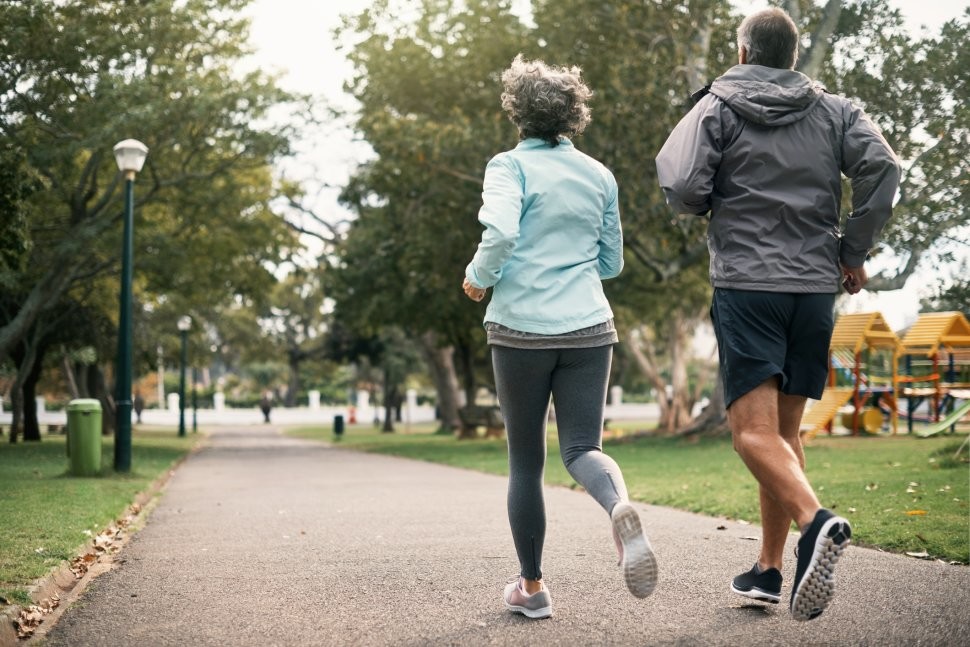
In fact, even though cycling is great for your heart and lungs, the bones in cyclists don’t show much difference from the bones of people who do not exercise. To address this problem, researchers suggest combining cycling with resistance training.
Running puts significant stress on your bones. This isn’t news to anyone who’s experienced sore knees or ankles after pounding the pavement. But as we’ve seen from the above studies, this pounding isn’t necessarily a negative thing, and it can actually be very beneficial.
Depending on your speed and gait, distance running can put up to three times your bodyweight on your bones and joints with each step. If you’re sprinting, that number can increase to seven times your body weight, according to the book “Build Your Running Body.” That adds up. If you’re overdoing it — or unlucky — such gravitational force can lead to shin splints and stress fractures. But each time your bones are subjected to this force, they also have an opportunity to change and improve.
Just as your muscles break down during exercise and then repair themselves, coming back bigger and stronger than before, so do your bones. One study even found sprinters (and tennis players) have 23% greater bone mass than people who don’t exercise. Another study found sprinters have 10–14% more bone mineral density in their hips.
The American Academy of Orthopedic Surgeons says most people begin to lose bone mass at around 40 years old. However, if you take the right steps — like going running, which involves taking many steps — you can slow that loss and even build new bone. All that extra bone comes in handy as you age.
by Mapmyrun
Login to leave a comment
Why Trail Runners Need To Get Enough Vitamin D
You probably already know that vitamin D is a critically important nutrient, especially when it comes to your skeletal system. Vitamin D and calcium go hand in hand. While calcium creates strong, healthy bones, vitamin D helps your body absorb that mineral and put it to use. If you aren't getting enough vitamin D, a deficiency can lead to weak and brittle bones.
Yet there's so much more to this particular vitamin than just bone health. And if you're lacking it, you can face problems that extend far beyond your bones. Here's what science says about the effects of vitamin D deficiency on your overall health.


A vitamin D deficiency can decrease muscle function
Recent research published in the Journal of Endocrinology suggests that failing to get enough vitamin D has a negative effect on your muscle function.
In their study, researchers compared two groups: one that followed a diet that offered the right amount of vitamin D and one that followed a diet with a vitamin deficiency. Over the course of three months, researchers tested skeletal muscle mitochondrial respiration, or the process that fuels your muscles' function.
While there were no differences in body weight, muscle mass, or food intake between the two groups, there was a significant difference in skeletal muscle mitochondrial respiration. A vitamin D deficiency led to decreased respiration, which indicated impaired (or decreased) muscle function.
Additionally, another research study found similar results. Researchers studied individuals with vitamin D deficiency, treating them for that deficiency for 10 to 12 weeks. Over the course of the study, researchers saw skeletal muscle mitochondrial respiration improve. At the same time, participants reported that they were experiencing less muscle fatigue as their vitamin D levels increased.
As vitamin D levels increase, muscle function and capability improves. So, when you aren't getting enough of this key vitamin, you hinder your muscles and their ability to perform necessary functions. You can even feel physical muscle fatigue.
Physical performance and activity can suffer too
The effects of a vitamin D deficiency on your muscles aren't just internal. You can feel them at work when you're exercising-or any other time you try to put your muscles to work.
A 2013 scientific review explains the impact of a vitamin D deficiency on physical activity and performance. Getting your daily recommended amount helps you stay active, and it's particularly beneficial for athletes. This nutrient helps you maintain physical performance, ensuring you can achieve maximal oxygen consumption while you're exercising. Without vitamin D, you can see a decrease in muscle strength, weaker muscle tissue and even a higher risk of overuse injuries like stress fractures.
If you're hoping to keep your body strong and capable, vitamin D is an essential you can't skimp on. Failing to get enough of this vitamin can leave you weaker and less able to tackle physical exercise-and its effects are noticeable whether you're an athlete or not.
Without vitamin D, you'll also have less energy
Even if you don't feel the muscular impact of a vitamin D deficiency, there's one more aspect of your health that'll take a hit: your energy levels.
A lack of this vitamin can bring on fatigue and low energy levels. In some cases, research shows that very low levels of vitamin D can even lead to severe fatigue that impacts your quality of life. Much of the research on fatigue and a vitamin D deficiency examines women, and anyone who isn't getting enough of this nutrient can feel sluggish, tired, and less alert even after a good night's sleep.
However, once you increase your vitamin D levels, your energy levels can rebound and increase. If you've been dealing with prolonged low energy levels or unexplained fatigue, you might want to see if you're getting enough of this particular vitamin.
Get more vitamin D through food or supplements
There's an easy fix for a vitamin D deficiency. All you need to do is increase your intake, and that's a feat that can be accomplished in a few different ways.
The best way to get your vitamin fix is through food. It's easy, it's natural, and there are plenty of foods rich in vitamin D. You can try dairy-based sources, like milk or cheese. Non-dairy foods like dark leafy greens and cold-water fish can also be great options; just make sure you're picking foods that have vitamin D over calcium, as the two nutrients are often grouped together yet are distinctly different.
Supplements are another good choice. Vitamin D is considered one of the most beneficial supplements you can take. Just make sure to choose a supplement that's clean, vetted by reputable organizations, and suitable for your health.
Lastly, you can also head outdoors and get a "serving" of vitamin D from the source: the sun. If it's sunny where you live, you can increase your levels by spending time outdoors. Just don't forget your sunscreen when you're spending any time under the sun's rays.
by Trail Runner Magazine
Login to leave a comment
What You Need To Know About Running Shoes And Injuries
At age 50, I have recently begun to wonder how my body will hold up for running (and life) over the long haul given that in the last decade, I have dealt with several lingering bouts of Achilles tendinitis, a painful stint of iliotibial (IT) band syndrome, a functional leg-length imbalance that led to an angry case of sciatica, a debilitating case of runner's knee, one frustrating case of shin splints, and an excruciating ruptured Achilles. Not all of those injuries were caused by running, but each one presented itself when I ran.
This has led me to think a lot more about the shoes I choose to wear and the marketing promises that accompany them. Can they really help me run longer, healthier, and injury-free? Conversely, might they be causing my problems?
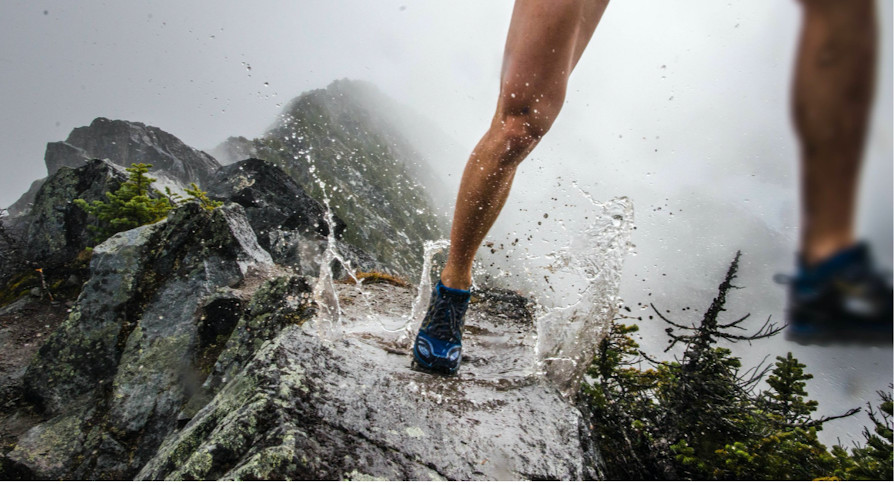
Despite the continued evolution of running shoes since the 1970s, the rate of injury among runners has remained high and, depending on which report you read, might even be climbing. Reports of annual injury rates vary widely, from 20 percent to 92 percent, but the average rate is somewhere around 50 to 60 percent. That means more than half of the running population gets dinged up in some fashion every year. Imagine that as every other runner in your local running group, or fully half of the 50,000 participants who line up to start the New York City Marathon every November.
It's a startling injury rate. Might shoes be the culprit? Absolutely not, says Jay Dicharry, who authored Running Rewired: Reinvent Your Run for Stability, Strength & Speed.
Dicharry has published numerous research studies about running mechanics, and he insists that running shoes don't cause injuries. "There are better and worse shoes for an individual runner based on their gait characteristics, but running shoes are not the cause of injuries," he says.
There has never been a correlative link between injuries and running shoes, he points out, which sounds like a convincing exoneration of shoes from where I sit, though it's important to note that there also haven't been many studies. In fact, in the only study that has remotely produced some interaction between running shoes and injury rates, 81 female runners were categorized by foot type (neutral, pronated, highly pronated) and randomly assigned neutral, stability, or motion-control shoes.
After basic information about their gaits was recorded, the runners were put through a 13-week half-marathon training program. Of the 194 training days missed by the test subjects due to pain or ailments, 79 were missed by runners wearing motion-control shoes, followed by 64 by neutral-shod runners, and 51 by stability-shoe wearers.
The neutral runners reported greater pain values while running in neutral shoes than in stability shoes; runners with pronated gaits reported greater pain values while running in stability shoes than in neutral shoes. No significant effects were reported for runners with highly pronated gaits. Ultimately, the study concluded that the "current approach of prescribing in-shoe pronation control systems on the basis of foot type is overly simplistic and potentially injurious." But the researchers admitted that the study was too small and didn't take into account enough factors to be conclusive.
Even with the advancements in kinesiology; the study of biomechanics, the human body, and materials science; and massive investment and vested interest from shoe companies, relatively little is known about how shoes actually impact our ability to run, no matter whether it is 100 meters, 100 miles, or somewhere in between.
There is no universal understanding of or agreement on how shoes should be designed and built to improve efficiency, maximize energy return, and reduce the risk of overuse injuries that, some research shows, may be caused by the repetitive motions of a running gait.
The Pronation Effect
In the 1970s, there was tremendous focus on stability and motion control. Despite the fact that at the time, there was little science related to human running mechanics, brands became obsessed with the notion that pronation could be harmful to a runner's heath.
Although high-speed video cameras and force-plate treadmills weren't yet available to analyze running gait, biomechanists, podiatrists, coaches, and shoe developers pointed to this inward rolling as one of the causes of common running injuries. As a result, the shoe war encountered a brand-new battlefield, one concerned with how to control the movement of a runner's feet-an idea that, although never grounded in science, has lingered into today. Science or no science, it has been a powerful marketing and sales tool.
In 1977, Brooks introduced several shoe models that supported the interior side of the heel with its Varus Wedge. The firm foam piece was engineered to provide greater stability, increase heel and foot protection, and improve running efficiency while decreasing muscle and tendon fatigue.
The Brooks Vantage was the first shoe designed to control the inward rotation of the foot, a motion that would soon be known by the industry-wide catchphrase "overpronation." Under the guidance of renowned podiatrist Steven Subotnick, who would later author Cures for Common Running Injuries, Brooks attempted to counter the rolling of the foot toward the medial side with a wedge that not-so-subtly canted the foot outward to the lateral side.
Brooks's innovation sparked dozens of imitators and eventually led to a whole new category of shoes based around stability and motion control. But it also led the industry down a misdirected path of self-help without compelling scientific evidence or quantifiable results. Soon every brand had its own feature designed to restrict overpronation-the most common being the medial post, a firmer-density midsole foam located under the arch of the foot. Worse yet, it also prompted the unsavory practice of brands hiring scientists and paying for the lab results they needed for their marketing programs that supported their new shoe models.
While innovation can be good-and even imperative at times-the problem was that a lot of the innovation was being fueled not by science but rather by marketing hype and copycat imitation, neither of which necessarily led to better performance or more efficient running, even if they decidedly did lead to selling more shoes and developing a vernacular to support three types of shoes (neutral, stability, and motion control). Worse, the new trend didn't reduce a growing epidemic among recreational runners: overuse injuries such as shin splits, Achilles tendinitis, plantar fasciitis, patellar tendinitis, and runner's knee.
Dicharry doesn't think shoe brands are really listening to what science-specifically kinesiology and anatomy-is telling them.
"For a long time, the running shoe industry has had a bias that suggests a running shoe has to stop parts of your body from moving and force something to move in a different way," he says. "That's based on unfounded ideas that evolved 40 or 50 years ago. Science shows that doesn't exist and never did. People are variable and move differently, and that's OK."
Dicharry says that until brands stop trying to control or limit movement, shoes will never fully move forward. "The foot is an adaptively controlled lever; it's not just one rigid thing that moves one way. It's all about adapting and conforming." His insights beg the question: If every runner has his or her own preferred path of movement based on specific anatomical variances and irregularities, is it even possible to mass-produce a commercial product that will actually improve performance and reduce injury risk for a wide range of runners?
Dicharry insists that it is possible, but "you would mostly have to scrap the model of how shoes are built and marketed." There is sufficient technology and understanding of how to do it, he says; however, mass production and an entire recategorization of running shoes are still significant inhibitors.
Until that happens-if indeed it ever does, at least for a wide audience- the biggest challenge facing running shoes may be that they're not keeping runners from being injured. Despite numerous advancements in outsole rubber, midsole foam, training philosophies, and understanding of how the body moves, there has yet to be a shoe that has shown the ability to reduce injuries. The incidence rate of common running injuries has remained constant since they began being monitored, with most surveys and studies showing an average of 50 to 60 percent of runners being injured every year.
An essential piece of the puzzle cannot be ignored: Running shoes are a commodity, and every running shoe company is in the business of designing and manufacturing shoes for the sake of selling as many as possible. The A-goal is not improving performance or reducing injuries-and perhaps with good, or at least justified, reasoning. Because while running shoes have both functional and aesthetic cues-along with loads of marketing hype-consumer purchasing surveys have shown that the color or aesthetics of a shoe often influences a runner's purchasing decision more than its perceived ability to help that individual run better.
Ultimately, it's not in the best interest of a shoe brand to really hone a message about training better, becoming stronger, and fixing one's mechanics because that proves that it's not about the shoes, or at least makes shoes a secondary factor in healthy running. Plus, it's too risky for a running shoe brand to make a claim even remotely suggesting that its running shoes can reduce the chance for injuries. Instead, it is in every brand's financial interest to make shoes that look good and feel good and come with a good marketing story.
Form & Fitness
When it comes to running's extraordinarily high annual injury rate, many people want to blame their shoes, but that's like blaming the tires on your car when the engine won't start, insists Reed Ferber, PhD, the founder and director of the Running Injury Clinic at the University of Calgary.
"Running shoes are definitely not the cause of injuries," he says, echoing Dicharry. "Shoes are a small piece of the puzzle that people have focused on as being the cause or salvation of running injuries, but that's just not the case."
Ferber says that the one thing the running research community agrees on is that the most common running injuries, especially those suffered by recreational runners, are caused by doing too much, too fast, too soon. In other words, overuse injuries such as shin splits, Achilles tendinitis, runner's knee, IT band syndrome, plantar fasciitis, and many types of stress fractures are caused by user error: running too many miles or running too hard during workouts without adequate aerobic fitness, leg and foot strength, or flexibility.
When it comes down to it, most recreational runners aren't nearly as aerobically fit or as functionally strong as they could be. "Not even close," says Mark Plaatjes, a Boulder, Colorado-based physical therapist, coach, and owner of In Motion Running, a running specialty store. The former world-class runner-and 1993 world champion in the marathon-points to the stark difference between how elite runners train and how the average runner trains.
Not only are elites leaner and stronger, he says, but they're also running higher-mileage weeks-thus becoming much more aerobically fit and efficient-and dedicating equal hours every week to strength training, form drills, therapeutic work, and recovery. The majority of recreational runners don't have the time or interest to do those things, he says, and they often pay the price through the resulting overuse injuries.
Plaatjes points out that this lack of comprehensive training is also the reason that the minimalist shoe revolution was a disaster for many people. The shoes weren't the problem, he insists. In fact, there were merits to the idea that minimally constructed shoes would help build foot strength and cue better running form. The trouble was that few people were willing to take the time to ease into wearing those kinds of shoes and do the considerable amount of work it would take to prepare their bodies to adapt.
While minimalist shoes weren't to blame for injuries, the movement simultaneously proved that running shoes couldn't prevent injuries, either. Yes, running shoes can be a tool to improve your running, but the most vivid takeaway from the minimalist revolution was the reminder that most runners need an ample amount of cushioning and protection between foot and ground, and that good running form (and the proper strength, posture, and flexibility that go with it), not newfangled running shoes, is the key to healthy, efficient running.
Doing core strength work, drills, and plyometric exercises can give you a general boost toward running better, more efficiently, and maybe even faster. But the only way to create a specific program for improving as a runner is to gain a detailed understanding of how the individual body operates as it runs-how it moves, where it is strong, where it is weak, where it is asymmetrical. These mechanics can be revealed through a high-tech gait analysis.
At his lab in Bend, Oregon, Dicharry uses state-of-the-art force-plate instrumented treadmills and high-speed cameras to analyze a runner's gait data in real time. He routinely tests fit and functionally strong runners who move efficiently and stabilize their body effectively but have a specific gait aspect that needs improvement. It might be subpar cadence, poor running posture, or a propensity to overstride. Postanalysis, Dicharry and his team of physical therapists and coaches provide exercises and drills to help cue improvement in those areas.
"Some issues have nothing to do with running," Dicharry says. "They might be lifestyle problems developed from everyday life, but they show up in running or other things you might do, whether it's walking or riding a bike or swimming."
The Shoe Factor
Generally speaking, Dicharry believes most runners can benefit from running in "less" shoe, especially models that don't inhibit the natural motion of a foot. But he cautions against making big changes-to a more minimally designed shoe or a shoe with a lower heel-toe offset-too quickly.
However, he points out, running in a variety of different kinds of shoes on a weekly basis is the best scenario for a runner, and there is science to back up that statement. A 2013 study conducted in Luxembourg showed that recreational runners who rotated among multiple models of shoes during a 22-week study had a 39 percent lower risk of running injury than those who almost always ran in the same shoes.
"Having a quiver of shoes exposes your body to different ways of interacting with running surfaces, different muscular responses, and different neurological reaction timings," Dicharry says. "Variability is a good thing, so switching up your running shoes several times a week is a very good thing."
Like Plaatjes, Ferber believes most runners can make headway by improving their overall fitness and functional strength to become less injury prone, but he doesn't necessarily believe in overhauling a runner's gait. Plaatjes, in contrast, is concerned about the industry-wide shift and strongly disagrees that most runners should be running in soft, flexible neutral shoes, insisting that many runners still need some support and stability, especially as they become fatigued during longer runs. The best way to provide that support, he says, is via stability shoes or after-market insoles.
"The answer to reducing injuries, enhancing comfort, and improving performance is not to change or fix a runner's 'flaws' but to work with the natural and highly individual motion paths of the joints," says Carson Caprara, senior director of global footwear product management at Brooks. "The focus then becomes keeping a runner in this path of least resistance for as long as possible during a run. For some runners, the variables of shoe geometries, midsole hardness, or excessive stabilizing technologies can push them outside of their preferred motion path. The task of modern running shoes should be to help these runners stay within their unique motion corridor at all times."
Brooks outlined a holistic approach to designing and fitting running shoes that would optimize efficiency, reduce injury, and enhance comfort. Instead of breaking down its shoes into neutral, stability, and motion-control categories that took into consideration one factor-the level of pronation at the ankle-it came up with new categories based on four biomechanical silos related to cushioning, energizing, connecting, and propelling a runner's experience. And it acknowledged that the individual's preference had a lot to do with what shoe would be best for that person. The brand concluded that shoes allowing runners to run in their natural preferred state on the path of least resistance, rather than attempting to correct perceived problems or deficiencies, would provide the best experience and be the most comfortable. Brooks became the first brand to ditch medial posts to control overpronation in favor of a new system of guiderails that offer just enough support for that particular runner's feet and gait style.
However, it has become increasingly clear that there is no magic bullet, and that ultimately, it is less about shoes and more about how a runner is training and taking care of his or her body on a daily basis.
Advances in footwear, training, and technology might have an effect on how a runner moves, but how and whether those changes will impact the rate of injuries remains a big question mark. In the end, running is both a very simple and an extremely complex activity, a polarizing set of parameters that leave it open and vulnerable to the interpretation, style, and experience of each individual runner. The key to healthy, efficient running has less to do with shoes than with the time, effort, care, and passion that each of us puts into it.
"Don't spend time opening your wallet; spend time opening your mind to making yourself a better athlete," Dicharry says. "There are multiple ways of improving as a runner and getting faster, and none of them require spending money on a piece of footwear. Make your body better and you'll run better."
by Trail Runner Magazine
Login to leave a comment
How does running strengthen your bones?
When it comes to running, the benefits for your body, mind, and soul are relatively endless. In essence, that’s why it’s one of the most popular sports in the world.
People of all ages, cultures, and walks of life enjoy it. Studies have linked running to everything from boosting your mood (that good-old “runner’s high!”), treating depression, enhancing brain health, increasing memory, reducing the risk of cardiovascular disease, lowering blood pressure and much more.
Another lesser-known benefit of running is that it helps build bone strength and mass. Plus, it can help slow the aging process related to bone loss (this is great for elderly exercisers).

Wondering how? We’re here to explain. Aaptiv asked top running professionals to deep dive into the science of running and how it’s able to rebuild and strengthen our bones.
The Running and Bone Relationship
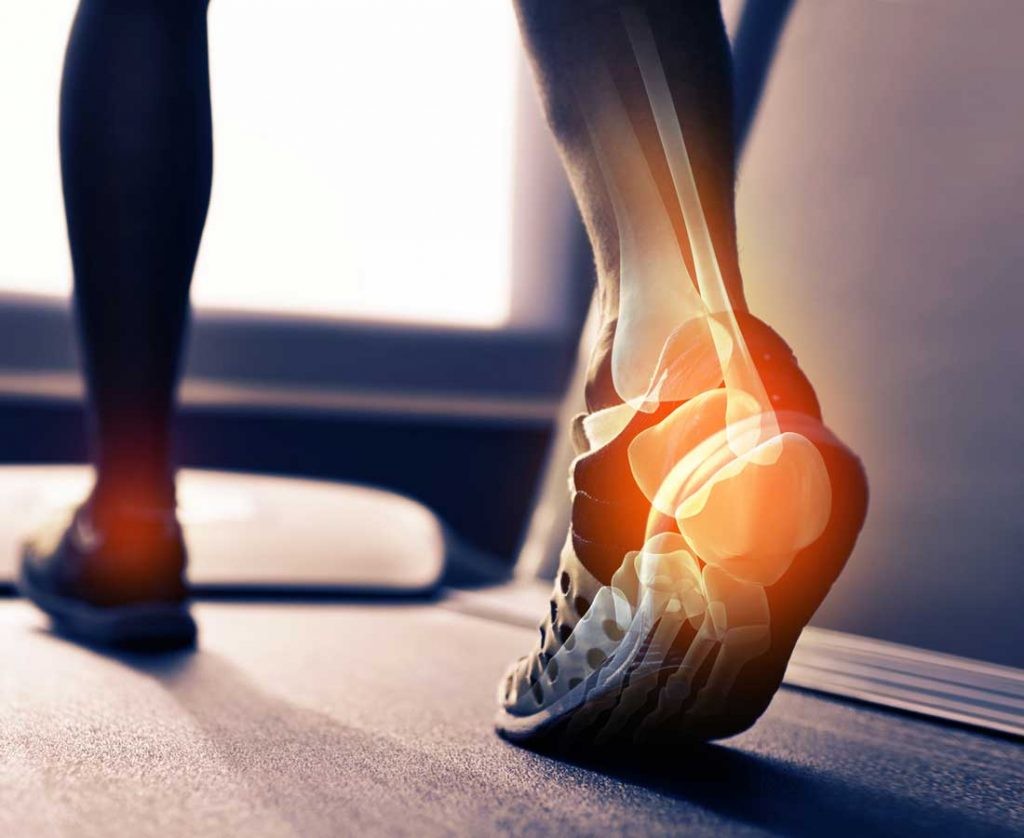
In its essence, running is a weight-bearing or endurance exercise. This in and of itself indicates that it has the potential to build and repair bone strength, according to Alexandria Williams, Road Runners Club of America’s certified running coach and director on the board of the National Black Marathoners Association.
“When a person runs actively, this motion causes new bone tissue to form, and thus helps bones [become] stronger,” she says. “With running, there is more impact, thus every time you run and push off your legs, the muscle contract[s] back and forth.” This motion, she explains, impacts not only the bones, but also blood flow, which all help in building healthy and strong bones.
The Role of the Foot Strike
Another reason you are able to build bone density when running is due in part to the fact that it is an open-chain exercise. This is where your foot comes off the ground and strikes it again. Closed-chain exercises, on the other hand, include cycling, swimming, and operating many exercise machines.
“The science of this is rather straightforward. When your foot strikes the pavement, your long bones in your shin and femur actually ionize. This causes your bones to pull more calcium and other essential nutrients from the blood and leads to greater bone density,” explains Roger E. Adams, Ph.D., personal trainer, doctor of nutrition, and owner of eatrightfitness. “Additionally, the force of the muscles pulling against the bones as you run stimulates some of this ionization as well.”
Any weight-bearing exercise will help, but running, with the extra stress of the foot strike, seems to have an increased ability to create the ionization in the bones, according to Dr. Adams.
However, it’s worth pointing out that the only skeletal bones that will benefit, or become stronger, from the act of running are those that experience increased stress from the weight-bearing activity. This tends to not include the upper body, as it hardly moves during a run.
The Downside
While the benefit of building bone strength from running is exciting, Dr. Adams points out that long distance runners may actually lose bone if they’re not careful. “The open-chain aspect to running does ionize and help the bones mineralize better. However, stress fractures can be a common ailment with long distance runners,” he says. “Researchers believe this is primarily due to diet restrictions or [a] too [little] caloric intake.”
Additionally, he points out that many elite or serious long distance runners carefully control their weight, which may mean that they’re not eating enough calories, especially calcium-rich dairy, to sustain healthy bones.
Besides the potentially favorable effects on bone density, running is associated with improved muscle profiles, as well. “Hamstring, quadriceps, and calf strength are beneficiaries of running workouts. However, what is unique about running, versus a less intense cardio activity such as walking, is the profound increased activity of the gluteal muscles in runners,” says Michael B. Gerhardt, M.D., sports medicine specialist and orthopedic surgeon at Cedars-Sinai Kerlan-Jobe Institute in Los Angeles, California and team physician for the U.S. Soccer Men’s National Team.
If you aim to run moderately—20 to 30 miles a week—you can expect to reap the bone-building and strengthening benefits of running.
Additionally, you can expect to strengthen the muscles attached to these bones in your lower body. “Running can make weak areas stronger. And [it] can actually increase mobility in joints, like the ankle, that tend to get stiff from not moving enough,” adds Dr. Adams.
by Jenn Sinrich
Login to leave a comment
The most common running injuries every new runner should know about and how to avoid them
As any runner can tell you, pounding the pavement is not all runner’s high—there are aches and pains that come along with it. Running injuries can run the gamut from annoying to sidelining, which is why it’s important to accurately identify what’s going on.
Running is a high-impact exercise, meaning your entire body takes a bit of a beating when you run for a prolonged period of time.
Runner’s knee
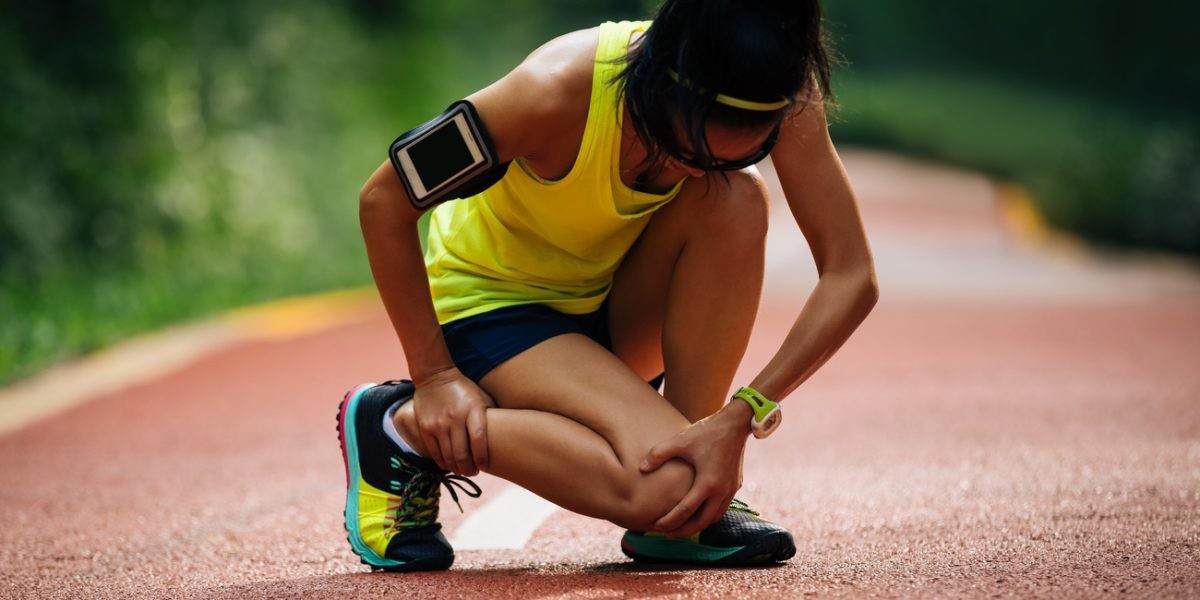
What it is: "Patellofemoral pain syndrome, more commonly referred to as runner’s knee, is a dull, achy pain that originates underneath your kneecap and is typically felt during running, especially uphill, walking down stairs, or when moving from a sitting position to a standing position," John Gallucci, Jr., M.S., D.P.T., president and CEO of JAG Physical Therapy, tells SELF.
This is the most common running injury, especially for new runners, Ferber says. He notes that for some people, the pain may start at the beginning of the run, subside throughout, and then pick up again as soon as you stop running.
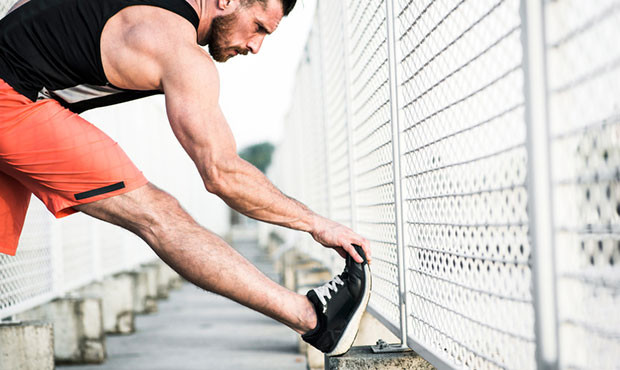
What causes it: "It's a grinding injury," Ferber says. There's cartilage under your kneecap and also along your thigh bone, and a layer of fluid in between the two works as cushioning, Ferber explains. He says to think of the kneecap as a train, and the thigh bone (femur) as the train track. When the hips are weak, the thigh bone loses its stability and moves underneath the kneecap. "The railroad track starts moving. Those pieces of cartilage start to rub together, and that’s what causes the pain," Ferber explains.
How to treat it: This is something most runners can deal with and will attempt to run through, Dr. Gallucci says. But (surprise!) that's not a good idea. "If not properly managed, patellofemoral syndrome can progress into a more severe injury that could require surgical intervention, such as a fissuring or fracturing of the patella," he says.
Initially, you should stop running and try to limit inflammation—taking anti-inflammatory medications such as ibuprofen can help.
How to prevent it: After you’re pain-free, work on strengthening your hips, says Ferber, who coauthored a study on the benefits of treating runner's knee with hip and core exercises. In the study, people with knee pain who completed six weeks of core and hip strength training reported an earlier resolution of pain and gained more strength than those who performed knee-focused rehab.
Plantar fasciitis
What it is: Plantar fasciitis causes a stabbing pain on the bottom of the foot near the heel. "It's usually a little bit stiff at the beginning of a run, and then the pain goes away. Then it's a little stiff when you finish," says Ferber. "But it hurts first thing in the morning. That first step out of bed is excruciating at the heel. It can take 15 to 30 steps to get it warmed up and to go away, and then you kind of forget about it."
What causes it: The plantar fascia is a thick band of connective tissue that runs along the sole of the foot from the toes to the heel. Its job is to support your arch, Ferber says. "It gets stretched every time the foot comes down, and runs back out as the foot pronates," he explains. It's designed to be thick enough to withstand these forces, but too much repeated tension on the fascia can cause irritation and inflammation.
Since the fascia is connected to so many parts of your foot and leg, there are many things that can contribute to plantar fasciitis. Poor running mechanics, flat feet, weakness of the hips, weakness of the core, poor control of pelvic positioning, and nerve irritation in the lower back can all contribute to this inflammation and pain, Dr. Licameli says. Tight calf muscles or even inflexible toes can strain this connective tissue, too, adds Ferber.
How to treat it: "We say to stretch and do heel raises to make sure the muscles crossing underneath the foot are good and strong. That takes the load off the plantar fascia," Ferber says. "Plus, a good arch support (just an over-the-counter orthotic) will take some stress off." Dr. Licameli also suggests strengthening your hips and core.
How to prevent it: Strengthening exercises are helpful for prevention, too. "And always warm up properly," Dr. Licameli says.
Achilles tendinitis
What it is: This type of tendon injury causes inflammation and pain in your Achilles tendon (along the back of your heel), especially when walking, running, raising up on your toes, and stretching your calf muscles, Dr. Licameli says. It's an aching, dull pain, usually right where the muscle transitions to tendon, Ferber says.
The pain can also be deeper in the thickest part of your tendon, which is more common as you age. “You lose blood supply in the mid part of the Achilles tendon and it becomes brittle. It starts happening in about your 40s," Ferber explains.
What causes it: Any weakness or tightness in the calves, glutes, or hamstrings can affect the Achilles tendon. We use our calf muscles and glutes to propel us forward, and if they're not their jobs, smaller things like tendons have to take over, which can end up causing a lot of strain. Dr. Licameli adds that having weak hips or core or flat feet can all impact how much strain is on the Achilles tendon.
It also tends to be more common when people increase their activity suddenly, whether it’s running more miles or increasing speed.
How to treat it: You may need to rest from high-impact activity until the pain resolves. Icing the affected area can also help you feel better. But again, strengthening and stretching the muscles at play is key here. Often it's the hips or calves that need to be strengthened, but issues with the feet are core are common too.
How to prevent it: Continue stretching and strengthening those muscles. Since there can be so many different causes, you need to figure out the main one in order to properly treat it—that's why it's so important to see a professional to help you get to the bottom of it, Ferber says.
While many people new to running might think the dreaded stress fracture is an injury reserved for more experienced—and higher mileage—runners, it can actually hit beginners too, says Dr. Vasudevan. Stress fractures are more likely to occur when there is a change to a running routine, such as more miles, a different terrain, or a higher intensity, he says. That means a beginner who is just getting started, and ramps up too soon, can be at risk.
Strengthening can help improve your biomechanics when running, says Dr. Vasudevan. You’ll also want to make sure you’re not increasing mileage too rapidly or suddenly changing your running terrain. Fueling your activity properly is important too.
by Amy Marturana Winderl, C.P.T.
Login to leave a comment
The North Face Just Dropped the First Carbon-Plated Trail Running Shoe
Controversial speed is coming to a mountain near you
I’ve tested out carbon-plated shoes from a variety of running brands over the last 12 months. A movement that began with Nike’s NEXT% line — which propelled Kenyan legend Eliud Kipchoge to a mind-boggling sub-two hour marathon back in late 2019 — has now firmly taken over the sport.
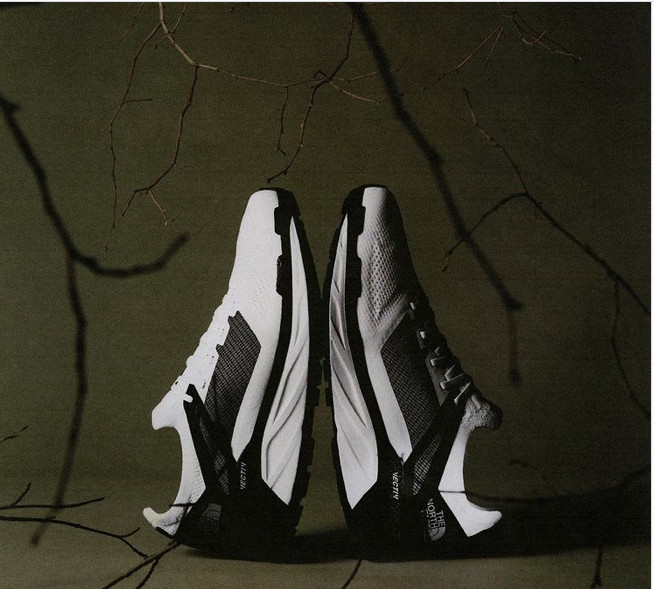
For the skeptics out there, these shoes are legit. There’s a reason the success of Nike’s shoe led to allegations of “gear doping,” new rules from the World Athletics body, and a call to arms for competitors like Adidas, ASICS and Saucony. The shoes generally combine tall, lightweight foam (which running journalist Amby Burfoot once compared to having extra leg muscles), with a carbon insert, meant to facilitate maximum energy retention — to “propel you froward” as the brand copywriters like to say.
After all that initial noise, they’re not only here to stay; they’re poised to take over other sub-sections of the sport. Yesterday, The North Face dropped a first look at its VECTIV series, the world of trail running’s first official carbon-plated running shoes.
I have zero complaints about my carbon-plated shoes. (Lately, I’ve been running in the Nike ZoomX Vaporfly NEXT%s and the Saucony Endorphin Pros.) In a year without races, they’ve helped me to log some benchmark times I’m proud of. That said, those shoes are noticeably reliant on dry, clean surfaces. They like asphalt, they prefer track. Whenever either is slick from rain or snow, or — god forbid — roots or leaves get involved, they have a ton of trouble gripping the ground.
The North Face, a brand as synonymous with all-elements gear as any on the planet, has designed a carbon-plated shoe that can actually handle unforgiving trails. Most running brands have their athletes come in and test out prototypes on a treadmill; TNF trail runners logged up to 600 miles in a single pair, and much of them on punishing terrain. One runner ran 93 miles around Mt. Rainier in them this past summer.
The premier release in TNF’s line, the FLIGHT VECTIV, aims for stability and strength, like any other reliable trail running shoe. It has a high-grip outsole, while its mesh fibers are literally reinforced with Kevlar. But it’s built for speed. The shoes contain a 3D plate directly underneath the foot, alongside a rocker midsole. Ultrarunner Pau Capell described the shoes as a “downhill weapon.” Trail runners often have to slow down due to practical concerns, not for lack of spirit. These shoes are designed to let them fly.
And, crucially, to avoid injury while doing so. The maximalist foam included in carbon-plated shoes blunts the impact of runners logging so many miles. Ultrarunners are on another level entirely; they’re incessantly susceptible to stress fractures, plantar fasciitis, sprained ankles, cramps, and broken toes. But the VECTIV line — which also includes the INFINITE and the ENDURIS, two shoes less concerned with speed — promises 10% less “impact shock.” It could bring more newcomers to the sport, and keep around those who already love it.
Login to leave a comment
Nick Willis Set a Record by Running a Sub-4 Mile for the 19th Straight Year. Here’s How He Did It
On January 19, Nick Willis wrote himself into the record books when he ran a 3:58.63 mile. His time marked the 19th consecutive calendar year that the 37-year-old Kiwi runner has clocked a sub-4-minute mile.
A middle-distance specialist, Willis has sub-4 miles every year since 2003—and even the two years before that, he clocked a 4:01 and 4:02. It wasn’t until 2019 that the record of consecutive years running a sub-4 mile even came onto Willis’s radar. Someone had mentioned that he was one year away from tying fellow countryman and running legend John Walker, who ran sub-4 miles for 18 consecutive years from 1973 to 1990.
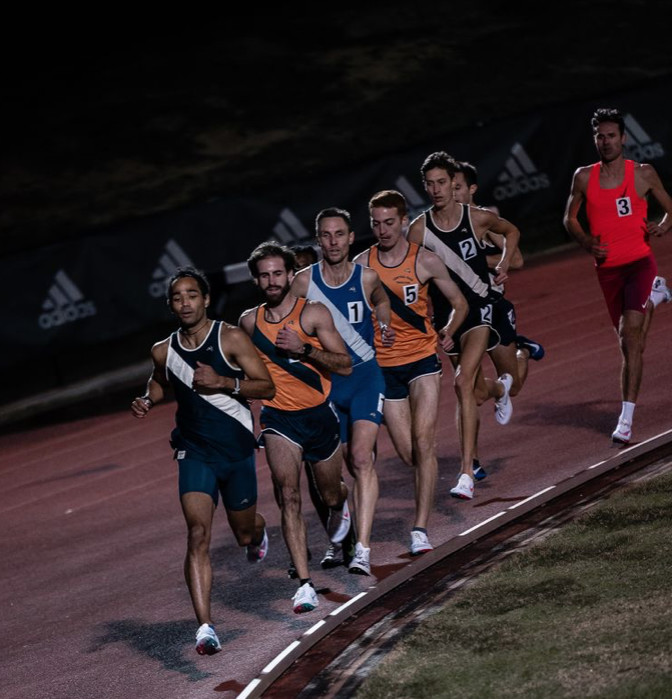
When he tied the record in 2020 at the New Balance Grand Prix in Boston, Willis realized he could get the obscure record if he could find a race—something made far more difficult because of COVID-19.
With some research, Willis found the Orange Winter Classic #1 in Orlando, Florida on January 19.
“I’m 37,” Willis told Runner’s World. “I’d rather try in January than in August when I’m eight months older.”
Because of the possibility of not having consistent track access at home in Michigan because of weather or the pandemic, Willis prepared for the event by spending the month between Thanksgiving and Christmas in Flagstaff, Arizona, training aggressively at altitude. A week before the race, back home in Michigan, Willis did a 1200-meter time trial that gave him confidence.
Normally, Willis said, the first race of the season is a bit rusty, but everything lined up right for his record attempt.
“I never felt comfortable, like I was on the edge of the red line the whole way,” Willis said about the race. “We were still able to do it though thanks to good pacing from pacemaker Victor Palumbo, who became the first American to run a sub-4 on an outdoor track in December on U.S. soil. He got us through three laps and did an incredible job.”
In the final 200 meters, Willis wasn’t able to get on the shoulder of eventual winner Mason Ferlic, but he hung on for second and a 3:58.63—good enough to grab the record from Walker. His splits were 1:01.64, 59.02, 59.30, and 58.68 on his way to breaking Walker’s record.
“[Walker] is very involved in local council now, so I’m sure he doesn’t care about this as a record at all,” Willis said. “Besides, he had the real mile world record [from 1975 to 1979].”
Willis’s longevity in the sport is unexpected. Over the years, he’s faced four surgeries, five stress fractures, pulled muscles, strained tendons, and countless minor injuries that have caused him moments of doubt.
He credits his coach, Ron Warhurst—also the head coach at the University of Michigan—and his wife, Sierra, for sticking with him through the highest and lowest times during his nearly two decades of competition.
“A lot of times, I would’ve walked away from the sport satisfied with what I achieved and they always thought there was more left in the tank,” Willis said. “What I did on Tuesday night was not without the unwavering support of them encouraging me. They are the ones who deserve the recognition.
As Willis has gotten older, he says the moments of motivation waver more than before. His motivation was at 90 percent most of the time in his younger years. As it has become tougher to compete with age, he says that number starts to waver toward 80 or 70.
“Tuesday was the first time I felt a lot of satisfaction crossing the line in the last few years,” he said. “I’ve felt frustrated because it doesn’t come as easy as it used to. Someone who finishes strong with a kick is what I’m known for and it’s been a struggle with why I can’t do that. I’m holding myself to unfair expectations. At 37, I can take a step back and look at it with a more relative perspective. Four minutes was the goal. I’m not a 3:50 miler anymore.”
The day after his record, Willis did what many great champions do and went to Disney World with Sierra and their two sons. He’ll be there for seven days while also squeezing in another race—an 800—on January 22. He has five races on tap in the coming weeks.
Because of the pandemic, he’s not sure how many races, especially indoor track races, will happen. However, he is hopeful to compete this winter, to make another New Zealand Olympic team, and to compete in some of the newly-formed Pro Track Series events this year. He also said he plans to ski and skateboard more.
As for his sub-4 streak, he’s not totally sure yet if it’ll continue.
“It seems like a crime to stop at 19,” Willis said. “I have a lot of other things these days. I’m working with Tracksmith now which has been a transition from just a pro running career to a corporate role. But if everything lines up, and I can still have some ski trips out west, I’ll definitely give it a shot.”
by Runner’s World
Login to leave a comment
Super foods for runners to maintain a healthy immune system
Every winter, immunity becomes an important topic of conversation as the temperatures drop and we enter cold and flu season. In the midst of the COVID-19 pandemic, having a strong immune system has become even more crucial to maintaining health. While this will not guarantee that you won’t get sick (or get the coronavirus), it is still worth doing whatever you can to keep your body healthy.
We spoke with elite Canadian runner and registered dietitian Rachel Hannah to get her top food recommendations for runners who are looking to boost their immune systems and stay healthy this winter.

Plenty of brightly-colored fruits and vegetables
you´ve heard it before but it´s worth mentioning again: eating a wide variety of fruits and vegetables is a key component to maintaining a strong immune system, thanks to their antioxidant content. These nutrients improve the health of your gut microbiome, which plays a role in training your immune system and avoiding an excess inflammatory response to pathogens.

Hannah recommends eating as many colours as possible, especially leafy greens, because that will ensure you get all the antioxidants and phytochemicals necessary for proper immune function. When it comes to fruit, berries are at the top of her list thanks to their high density of antioxidants. During the winter, fresh berries may not always be available, but frozen berries are just as beneficial, and can often provide more nutrients than the fresh variety in the off-season.
Probiotics
Runners will have to eat plenty of probiotic-rich foods because they help maintain a balanced composition of gut bacteria. Prolonged or intense training can disturb the gut and increase your risk for gastrointestinal (GI) problems, which will in turn affect your immune system.
Hannah´s favorite food sources of probiotics are yogurt and kefir, and she says that miso soup is a great choice for runners as well. Other probiotic-rich foods include buttermilk, tempeh, sauerkraut, kimchi, and kombucha.
Whole Grains
Wholes grains including brown rice, wild rice, teff, barley and quinoa cannot be digested the same way other foods can. Instead, we rely on the microbiota in our digestive tract to break the fibre down into fatty acids.
These fatty acids help maintain our gut mucus barrier, which keeps pathogens out of our system. Hannah says that whole grains also contain important nutrients for immune health, and she recommends that all runners include them as a regular part of their diet.
Vitamin D
Hannah also points out the importance of vitamin D when it comes to immune health. While there are some food sources of vitamin D (such as fatty fish, fortified dairy products and fortified cereals), she explains that it is difficult to meet your daily requirement through food. For this reason, Hannah recommends runners take a supplement, since not only does it benefit your immune system, but vitamin D can help prevent other issues like fatigue, muscle pain, and stress fractures. Most health experts will recommend that adults 14 to 50 years old take 600 IU per day, however you should talk to your doctor to determine your specific needs, especially if you fall outside this age bracket.
Eating these foods will not guarantee that you won’t get sick, but they will reduce your risk of illness and improve your body’s ability to fight infections when they happen.
by Brittany Hambleton
Login to leave a comment
Keira D’Amato Is Trying to Break the American 10-Mile Record on Monday. It Could Cost Her Thousands of Dollars.
Since 2011, Keira D’Amato has been part of the race committee for the Credit Union Cherry Blossom Ten Mile Run, the famous Washington, D.C. road race held along the banks of the Potomac River. She’s held a few different roles over the years; recently she’s been responsible for coordinating speakers for clinics at the race expo. This year, Molly Huddle was one of the scheduled speakers, and D’Amato told her she believed Huddle could break the women’s-only American record of 52:12, set by Janet Bawcom at Cherry Blossom in 2014 (coincidentally, D’Amato held the finish line tape for that race). After telling Huddle about the record, D’Amato realized something: I can run that fast too.
Over the following six months, as D’Amato has risen from obscurity to one of the best distance runners in the United States, that statement has become blindingly obvious. After running a personal best 2:34:24 to finish 15th at the Olympic Marathon Trials in February, the 36-year-old has spent the summer and fall demolishing her pbs, from a 15:04 time trial 5,000 on the track in June to a 32:33 10,000 at the MVMNT Race Series in July to a 68:57 to win the Michigan Pro Half Marathon on October 28.
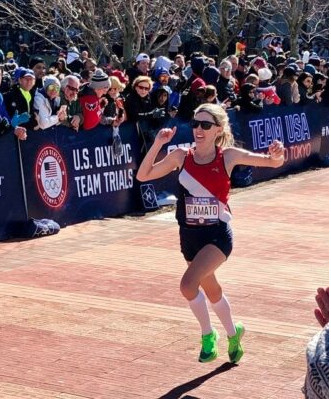
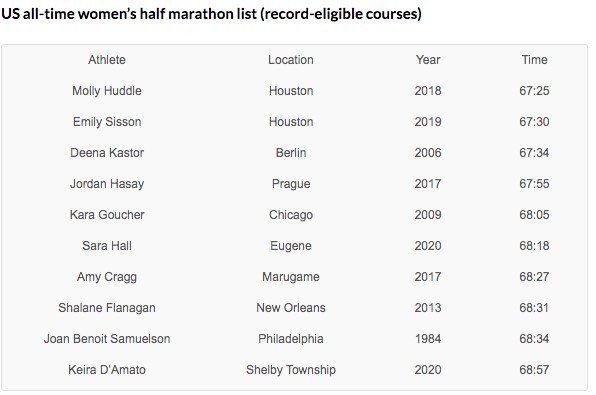
On Monday, D’Amato will try to back up her claim from the spring: she’s going for Bawcom’s record at the Up Dawg Ten Miler, where she’ll face a five-woman professional field that includes Olympian Molly Seidel. And that leads into one of the oddest statistics of a very odd year.
If D’Amato had broken the record at Cherry Blossom in April (which cancelled its 2020 edition due to COVID-19), she would have earned a $10,000 bonus.
If D’Amato breaks the record on Monday — or even if she doesn’t — she could end up out around $8,000.
That’s because D’Amato is covering most of the costs of the Up Dawg Ten Miler, which will take place in an undisclosed location in the DC area. Even though D’Amato is staging a race for five athletes rather than Cherry Blossom’s typical 17,000, several key expenses remain: getting the course USATF-certified and measured, securing park permits and road closures. It can add up quickly.
And then there is drug testing. USATF rules state drug testing is only required to ratify American records in events for which World Athletics recognizes an official world record. Since 10 miles is a “world best” distance, that means drug testing isn’t required to ratify an American record at the Up Dawg Ten Miler — but D’Amato is leaning toward including it anyway to avoid all doubts. However, based on the quote she received from USADA, it would run her an extra $3,000-$3,500. She hasn’t made a final decision yet.
There is an online store selling race merchandise to help offset the cost of the event. And around 20 members of the CUCB organizing committee have also chipped in a total of $2,000 — and, more importantly, their time — so that D’Amato can chase the record.
“If there was a way to measure intensity per person, this race would be much more intense [than the Cherry Blossom Ten Mile Run],” says CUCB event director Phil Stewart. “We’re not dealing with getting 17,000 people entered in the race and moving them around or ordering as many porta potties or things like that, but this is a group of special individuals. I’ve spent a lot of time being consumed by making sure that we have all of the conditions set for the record to be accepted if the record is broken. If Keira or anybody breaks the record here, the worst nightmare would be that there was some little USATF rule that I didn’t know about that was required for an American record to be set.”
Stewart knows that feeling all too well; last year, Stanley Kebenei thought he had broken Greg Meyer‘s American 10-mile record at Cherry Blossom, only for it to be revealed that a set of cones had been improperly placed, making the course 240 feet short (CUCB still paid Kebenei the $10,000 bonus).
With no mass race entries to fund the Up Dawg Ten Miler, CUCB will lose money on the event. But it’s worth it to Stewart to support D’Amato, whose meteoric rise he has followed first-hand — Stewart was among a group of CUCB committee members who traveled to Atlanta to support her in the Trials in February.
“One of the things that has been fun about [this event] is that in a time when there’s so much downbeat news, I think a lot of people have gotten excited about working on something that’s upbeat,” Stewart says.
And D’Amato? Well, in keeping with her carefree, laid back demeanor, she’s trying not to think about the cost and electing to focus on the positives. Five fast women (Susanna Sullivan, Bethany Sachtleben, and Emily Durgin round out the field) are gathering on Monday at 8 a.m. to race 10 miles. There will be a free live stream, with commentary, on the CUCB Facebook page. This should be fun, right? No. This will be fun.
“For me, it’s not about the money at all,” D’Amato says. “Right now when everyone’s starving for motivation and opportunity, I felt like this would be a service to the running community. And it fell in line really perfectly with my training too.”
Keira D’Amato’s return to competitive running began with a joke. Which, if you know anything about D’Amato, could not be more fitting.
D’Amato loves all things humor. The name of Monday’s race, Up Dawg, was her idea — a nod to a joke from The Office. When D’Amato joined Strava a few years ago, she began using jokes or puns to title her runs. Sample entry: November 16. My cousin, a magician, decided to incorporate the use of trapdoors in his shows. But I think it’s just a stage he’s going through. She used to rely on her children’s popsicle sticks for material or by asking her Amazon Alexa, “Tell me a joke.” As she amassed Strava followers (she’s over 2,600 now), she began receiving suggestions from fans — which delights her to no end.
“You have no idea how awesome it is that when people hear a funny joke, they think, Oh, I need to send this to Keira,” she says.
D’Amato’s impishness was on display during Christmas 2016, when she decided to gift her husband, Anthony, an entry to the 2017 Shamrock Marathon, held in March in Virginia Beach.
“Who gives someone a gift of a marathon entry?” D’Amato says. “Because that means you have to start training a lot. It’s kind of a backhanded compliment gift, I guess. But then I felt a little bad, so I signed up too.”
D’Amato was no stranger to running. A four-time All-American at American University under coach Matt Centrowitz, she finished 6th at the 2005 NCAA XC champs as a senior, ahead of future stars Amy Cragg, Molly Huddle, and Jenny Simpson. She remains friendly with the Centrowitz family, and is even in a fantasy football league with Olympic 1500 champ Matthew Centrowitz — let’s just say both D’Amato and Centro are better runners than fantasy football managers.
“I think at one point, I was in second-to-last and he was dead last,” D’Amato says. “But I also think Centro does a whole bunch of them, so maybe in his other leagues he’s doing better. But it was either the first or second week, I played him, and I crushed him.”
After graduating in 2006, D’Amato (then known as Keira Carlstrom) spent a few years running for DC Elite, a post-collegiate group coached by Scott Raczko — better known as the coach of Alan Webb. By 2008, she had lowered her 1500 personal best to 4:22, but was in constant pain, beset by a series of stress fractures and ankle pain. Her issues were the result of a condition known as a tarsal coalition — an abnormal bridging of bones in the foot — but the surgery to correct it was not covered by her insurance.
So D’Amato “retired” and got a job at mortgage giant Freddie Mac. Even after undergoing surgery to correct her condition in 2009 (her new job had better insurance), D’Amato ran sparingly for the next seven years. In her first run back after giving birth to her daughter, Quin, in August 2016 (she also has a six-year-old son, Tommy), D’Amato couldn’t make it through a three-minute run without walking. Yet she steadily built up ahead of Shamrock, and despite hail, sleet, and brutal winds on race day, D’Amato blew past her pre-race goal of 3:25.
“I couldn’t run slow enough to do that pace,” says D’Amato, who ran 3:14.
D’Amato felt there was a lot left in the tank, and took her next marathon, in Richmond in November, more seriously. After running 2:47 there — just two minutes off the Olympic Trials standard — she knew it was time to return to serious training. She reunited with Raczko, and steadily dropped her times while balancing running with her career as a realtor. When she ran a pb of 2:34 to finish 15th at the Trials at age 35, it looked like the culmination of a remarkable three-year journey.
In reality, D’Amato was just getting started.
Since the Trials, D’Amato has run personal bests over almost every distance. Her 15:04 5,000 doesn’t officially count because it came in a time trial rather than a race, but it’s faster than the Olympic standard of 15:10 and would have ranked her 6th in the US during the 2020 outdoor season.
Her most impressive performance came in last month’s Michigan Pro Half Marathon, where she clocked 68:57, 47 seconds ahead of runner-up Emma Bates, a 2:25 marathoner who finished 7th at the Olympic Trials. That made D’Amato the second-fastest American half marathoner on the year, behind Sara Hall, and 10th on the US all-time list. She is now in very elite company.
by LetsRun
Login to leave a comment
Does running on a treadmill change your stride?
Treadmill running can alter your gait in small ways, here are the potential differences for runners to be mindful of
The treadmill is a training tool that almost all runners have used in their lives. Whether it’s a time-efficiency measure (you never have to stop at lights on a treadmill) or a controlled conditions choice (the weather is never bad indoors), the treadmill has its place in everyone’s training program. However, one small change in someone’s training can make a big difference over time – especially if it alters how you run.

Research suggests that there could be small differences between how your body works on a treadmill versus how it runs outside. While the differences are slight, having an insight into minor changes is one of the best ways to keep yourself injury free and moving smoothly.
Surface stiffness
The biggest difference between the treadmill and running on the road is surface stiffness. Authors report that most runners get their miles in on concrete, which is notably harder than a treadmill surface.
For most, a softer surface can provide runners’ legs with a bit of a break, however, researchers point out that this isn’t a benefit across the board.
In runners with lower-limb stress fractures (in their feet or shins), returning to running on a treadmill could improve recovery. On the other hand, for someone who’s dealing with an Achilles or a calf issue, the softer surface isn’t ideal. Treadmill running has been connected with higher strain on the soleus (muscle in the calf), which could aggravate both conditions.
The surface you’re running on matters, so if you’re returning from an injury, be open with your medical professional about where you run most often.
Belt speed variation
Belt speed was another factor that contributes to biomechanics. On older treadmills, the speed can become inconsistent, especially when running fast. If runners are looking to do a hard workout and running outside is an option, it seems more reliable in terms of pace and form than running indoors.
If indoors is your only choice, run by feel and worry less about speed – especially if you’re using an older treadmill.
Comfort level
This may sound like a non-issue, but runners who are accustomed to the treadmill are less likely to alter how they run. By contrast, individuals who weren’t avid treadmill users showed a tendency to alter their stride and also had a slight increase in energy cost, meaning a typically comfortable pace would feel a little more difficult. This discomfort can lead to higher turnover and shorter stride lengths. Basically, if you’re not used to the treadmill, it’s normal for it to feel a little difficult and awkward to start.
While runners are encouraged to use the treadmill as a training tool, if you’re not accustomed to it, start slowly, place extra emphasis on recovery and work your way up, as it can alter the way you run.
by Running Magazine
Login to leave a comment
Nike’s Investigation of the Oregon Project is Complete
After Mary Cain alleged emotional abuse as an athlete under Alberto Salazar’s coaching, Nike conducted an internal probe of the professional running group.
Nike said on Monday that it is planning to take multiple actions to better support its female professional athletes, following an internal investigation into the now-defunct professional running group, the Oregon Project.

The company started the probe in November after former Oregon Project athlete Mary Cain went public with a New York Times op-ed piece about her experiences as a young track star under coach Alberto Salazar, who is currently serving a four-year ban from the sport for doping violations. (Salazar denies the charges and is appealing them—Nike said in an email to Women’s Running on Monday that “we support Alberto in his decision to appeal and wish him the full measure of due process that the rules require.”)
Cain joined the Oregon Project as a teen phenom, foregoing NCAA eligibility in 2013 to sign a pro contract with Nike. She moved from Bronxville, New York, to Portland, Oregon, at age 17, as a national high school record holder—the youngest athlete to ever represent the U.S. in a world-championships competition, where she raced the 1500 meters.
In the documentary, titled “I Was the Fastest Girl in America, Until I Joined Nike,” she described the pressure that Salazar and the all-male Oregon Project staff put on her to become thinner in order to perform better. Cain said she was weighed in front of her teammates and publicly shamed by Salazar for not hitting the goals he demanded—allegations that were later corroborated by former members of the group.
Now 23 years old, Cain said while training with the Oregon Project and during a period afterward, she suffered five stress fractures and didn’t menstruate for three years, which are symptoms of RED-S (relative energy deficiency in sport), a syndrome of insufficient caloric intake, with symptoms that can include excessive fatigue, amenorrhea, and decreased bone density. It can have serious long-term health effects like cardiovascular disease, infertility, and osteoporosis. Before she left Oregon to return home in 2015, she said she felt so isolated and trapped that she had suicidal thoughts and cut herself.

After the New York Times piece was published, Salazar denied any abuse or gender discrimination at the Oregon Project and added, “I may have made comments that were callous or insensitive over the course of years of helping my athletes through hard training.”
In the email to Women’s Running on Monday, Nike said the results of the internal investigation will not be made public, but “we are using the findings to identify areas where we can do better in supporting female athletes.” It was not confirmed who was involved in leading the investigation or who participated in it.
The initiatives that Nike identified include:
• Investing in scientific research into the impact of elite athlete training of girls and women
• Increasing the number of women coaches in sports
• Hiring a vice president of global women’s sports marketing in the coming weeks to have “strategic oversight” of Nike’s female athletes
• Creating an athlete think tank to help the company understand the opportunities and challenges faced by female athletes
• Partnering with Crisis Text Line, a free, confidential text messaging service for people to ask for help when in crisis
During a phone interview with Women’s Running on Monday, Cain said she was contacted in the fall by phone and email by a Nike lawyer, but opted not to participate in the probe because some of the people involved were Nike employees whose participation in it made her feel uncomfortable.
“There was no real transparency in the process, so I became very frustrated with the fact that there was no clear-cut person in charge, it was Nike investigating Nike, and seemingly some of the people involved in the process were investigating themselves,” she said.
Upon hearing the actions that Nike—the biggest sponsor of the sport’s governing body, U.S.A. Track & Field (a deal that goes through 2040 with an estimated value of $500 million)—wants to take as a result of the findings, Cain said she supports anything that promotes women’s health and opportunities in sports.
“It’s great to push money and push opportunity into the future—I whole-heartedly support that,” she said. “But the vagueness and no ability to see the report makes me worried that they’re hiding behind gestures that will almost make people forget the issues.”
Runners and other athletes have identified with Cain’s experiences since she shared them, creating a public conversation about the destructive culture underlying sports, where antiquated training philosophies perpetuated by a male-dominated coaching profession often result in eating disorders and worse for athletes.
“I have this renewed love of the sport that I only really found in the last few months because I do have so much hope in what women’s sports can and will become—so anything that’s generating interest and investment and research, I’m all for,” Cain said. “What I hope can happen through some of this work is that Nike can start hearing more voices.”
Still, Cain is hesitant to put too much stock in the proposed initiatives.
“It looks both weak and cowardly that as a corporation they won’t release what they found,” she said. “There’s a certain point where people would have a lot more respect for them as a broader institution and respect what they’re now trying to do if they also admitted what they did wrong. I can’t look at a future brightly if I can’t see them reflecting on their past.”
Since November, Cain has returned to training after about three years away, with the goal of making the U.S. Olympic Track & Field Trials in June. She most recently raced the 3,000 meters on Saturday at the Armory in New York, finishing in 9:24.38.
In December, she told Women’s Running that advocating for women’s sports and healthy coaching practices is her new dream.
“Due to lack of education and inappropriate societal norms, many people have a poor understanding of how to address topics such as women’s cycles, weight, and training appropriately,” Cain said. “My goal is now to create educational programs that coaches and athletes must take on these subjects.”
Login to leave a comment
Nike employees protested at the Beaverton, Ore. headquarters on Monday following the reopening of the building named after Alberto Salazar
On Monday, the day that the sportswear giant Nike reopened the Beaverton, Ore. headquarters building named after disgraced coach Alberto Salazar, Nike employees staged a protest regarding its mistreatment of women, and were threatened with termination if they spoke to the media.
The Wall Street Journal reports that, “A flier circulating among employees read, “Join us for a campus walk to celebrate what women bring to sport and to raise awareness of how Nike can support our female athletes and employees.”
There was another flier circulating ahead of the protest–this one was also distributed by Nike employees but had a different tone. It read, “No employee is permitted to speak to news media on any NIKE-related matter either on- or off-the-record, without prior approval from Nike Global Communications.” The policy continues, “Failure to comply with NIKE’s media policy could result in termination of employment.”

Nike spokesperson Greg Rossiter said to The Willamette Weekly that this cautionary flyer was not officially distributed by the company. “We respect and welcome employees’ feedback on matters that are important to them. The flier prepared by some employees was not officially distributed by Nike.”

The US Anti-Doping Agency banned Salazar in September for four years following a years-long investigation and secret arbitration case. The details appear in a BBC report and a statement by USADA outlining the specific charges, which include trafficking in testosterone (a banned substance), illegal methods and evidence-tampering at the Nike Oregon Project’s Beaverton, Oregon headquarters. Salazar is former coach to Mo Farah and Kara Goucher and current coach of marathoner Galen Rupp and the newly-crowned 10,000m champion Sifan Hassan, among others.
Nike shut down the NOP training group 11 days later. Salazar’s athletes have since found new coaches and training groups.
Following the dissolution of the NOP, American prodigy Mary Cain came forward and told her story about her experience with the group. According to Cain, the NOP’s “win at all costs” mentality involved Salazar and his assistant coaches (who are not named) pushing her to take birth control pills and diuretics to lose weight, weighing her and verbally abusing her in front of her teammates. Cain’s success on the track came at a huge price: she didn’t have her period for three years, which weakened her bone health so much that she endured five stress fractures. Her success dwindled, and when she left the program, nobody really knew why.
On Monday, protesters signs read, “We believe Mary.”
by Madeleine Kelly
Login to leave a comment
Jordan Hasay will headline the women’s race in the 2019 Bank of America Chicago Marathon
Jordan Hasay has announced that she will target the American women’s marathon record this fall in Chicago.
Rupp’s Nike Oregon Project teammate, Jordan Hasay, offers incredible inspiration when it comes to successful comebacks. After a storybook 2017 season that saw her run the American debut marathon record, 2:23:00, for a third-place finish in Boston and then post the second-fastest time ever run by an American woman in Chicago (2:20:57), she shut down her 2018 season due to two stress fractures in her foot.

She announced her comeback with confidence this spring in Boston, acquiring another podium finish and posting a swift time, 2:25:20. Hasay hopes to take down Deena Kastor’s long-standing American record of 2:19:36. “I am honored to return to the streets of Chicago,” said Hasay. “I love the fast course and exciting atmosphere, which I believe can lead to an attempt at the American record. I look forward to being at my best again and giving it all I have in October.”
In its 42nd year on Sunday, October 13, the Bank of America Chicago Marathon welcomes thousands of runners from more than 100 countries and all 50 states, including a world-class elite field, top regional and Masters runners, race veterans, debut marathoners and charity runners.

The race’s iconic course takes runners through 29 vibrant neighborhoods on an architectural and cultural tour of Chicago. Annually, an estimated 1.7 million spectators line the streets cheering on more than 40,000 runners from the start line to the final stretch down Columbus Drive.
As a result of the race’s national and international draw, the Chicago Marathon assists in raising millions of dollars for a variety of charitable causes while generating $338 million in annual economic impact to its host city. The 2019 Bank of America Chicago Marathon, a member of the Abbott World Marathon Majors, will start and finish in Grant Park beginning at 7:30 a.m. on Sunday, October 13.
Login to leave a comment
Bank of America Chicago
Running the Bank of America Chicago Marathon is the pinnacle of achievement for elite athletes and everyday runners alike. On race day, runners from all 50 states and more than 100 countries will set out to accomplish a personal dream by reaching the finish line in Grant Park. The Bank of America Chicago Marathon is known for its flat and...
more...Here are some tips to help you recover after running a marathon
It’s safe to expect you won’t be doing any hard running or intense training for several days. Your goal is to gradually get back to running at your normal training pace without stiffness or soreness.
All of us get warning signs of over-training. Keep a training journal to track ache, pain and fatigue that lingers. If you have developed an injury, seek professional medical guidance.

Ask your doctor for a medical check-up before embarking on any strenuous training program. If you get the all clear, I recommend you treat your body right with proper nutrition and training regimens. This will help minimize any damage to your body.
Practice taking fluids every two to three miles and fuel during your long runs in preparation. Pick the right running shoes that are a good match for your feet. Most shoes can max out at 300-500 miles. The wrong shoes may cause damage to your body, including stress fractures.
In the coming weeks, as your physical and psychological recovery is underway, make sure to replenish your body with rest, good protein and carbohydrates.
You want to slowly incorporate stretching, cross training that includes cycling, swimming, walking, light jogging and maybe going easy on a stair climber into your regimen. Soon enough, you’ll be ready to do it all over again.
The next top MBR 100 marathon coming up is the Houston Marathon.
by Dr Syed Rizvi
Login to leave a comment
Will an extra does of Vitamin D boost your running performance?
Vitamin D is an essential nutrient that regulates some 1,000 processes in the body, and doctors have long known its importance to bone density and preventing the related illnesses like rickets and osteoporosis.
Now researchers are beginning to study its role in athletic performance. While an extra dose of vitamin D might increase muscle strength and endurance, the science is far from settled.

Still, many athletes are eyeing the vitamin for possible performance gains. Given that the science is still young, is it worth hitting the drugstore? The main sources of vitamin D are sunshine and certain foods, including salmon, cod liver oil, and fortified cereal and dairy products.
The USDA suggests an intake of 600 International Units per day, or 800 IU for adults over 70. You can easily meet that recommendation by spending 15 minutes outside on a sunny day.

In athletes, a vitamin D deficiency increases your risk of stress fractures, anemia, and a weakened immune system—all of which can hurt performance. In a study of 214 NFL players, scientists observed more muscle injuries in athletes with lower vitamin D levels.
There’s no clear consensus about how widespread the deficiency is. In 2015 review, scientists found that about 56 percent of athletes had inadequate levels of the vitamin.
Still, in a large-scale review, researchers at the National Academy of Medicine (then the U.S. Institute of Medicine) observed that, on average, Americans’ vitamin D levels appeared fine. One cause of this discrepancy is that scientists don’t agree on the definition of “adequate” when it comes to vitamin D levels. The most common test for the nutrient measures a precursor version of its hormone form—the form of the vitamin that is actually used by the body.
Sometimes this precursor doesn’t predict how much vitamin D exists in hormone form. Certain researchers, like those with the Endocrine Society, argue for higher concentration thresholds than than those of the National Academy of Medicine.
The effects of vitamin D supplementation on health are uncertain. A 2013 review did not find any effect from supplementation on the rates of disease, other than a tentative decrease in mortality in the elderly.
Login to leave a comment
The Dangers of Under Fueling can effects your health and performance
Login to leave a comment
These simple foods can help you recover from a stress fracture
Runner's Diet
Login to leave a comment











